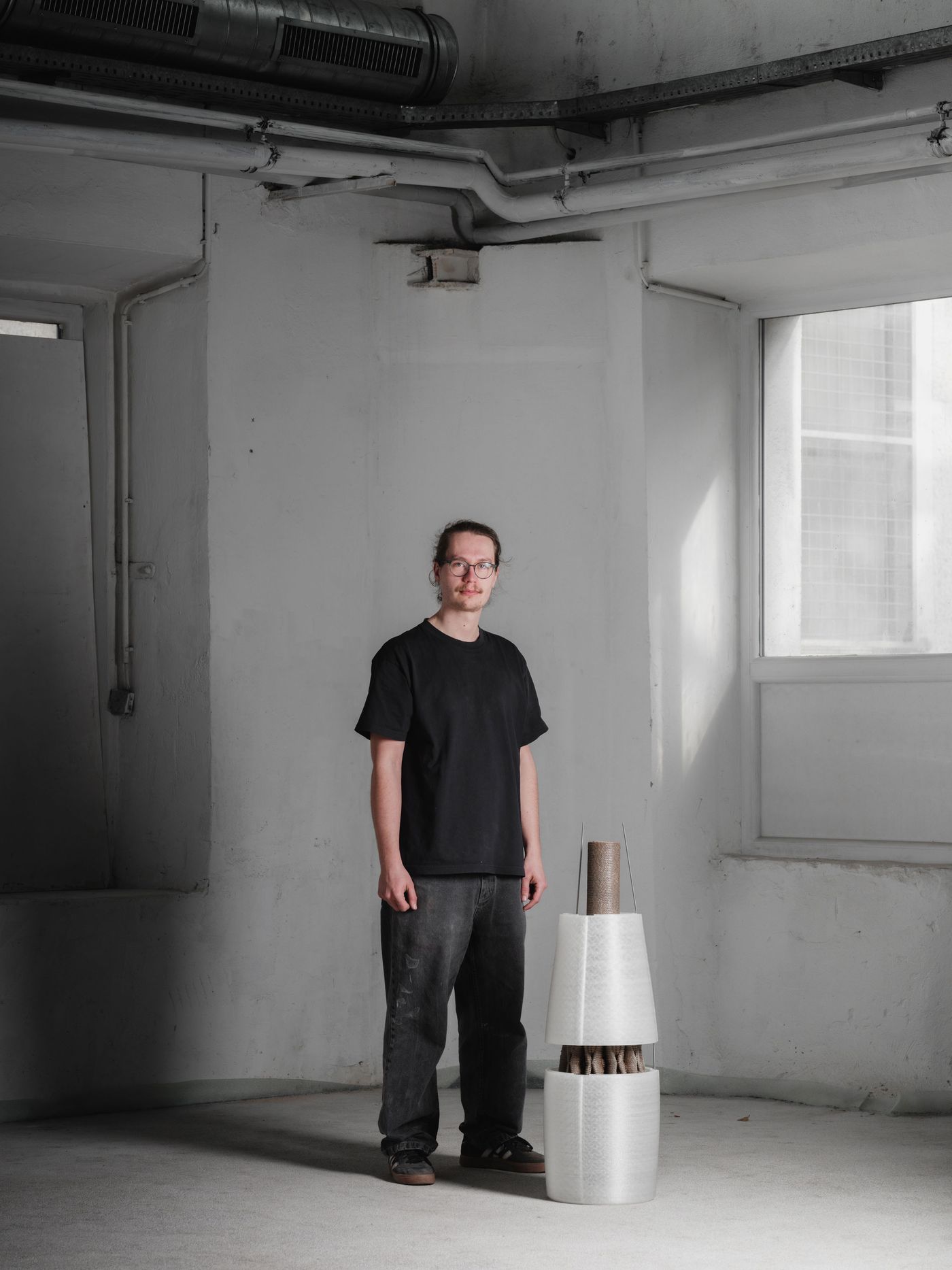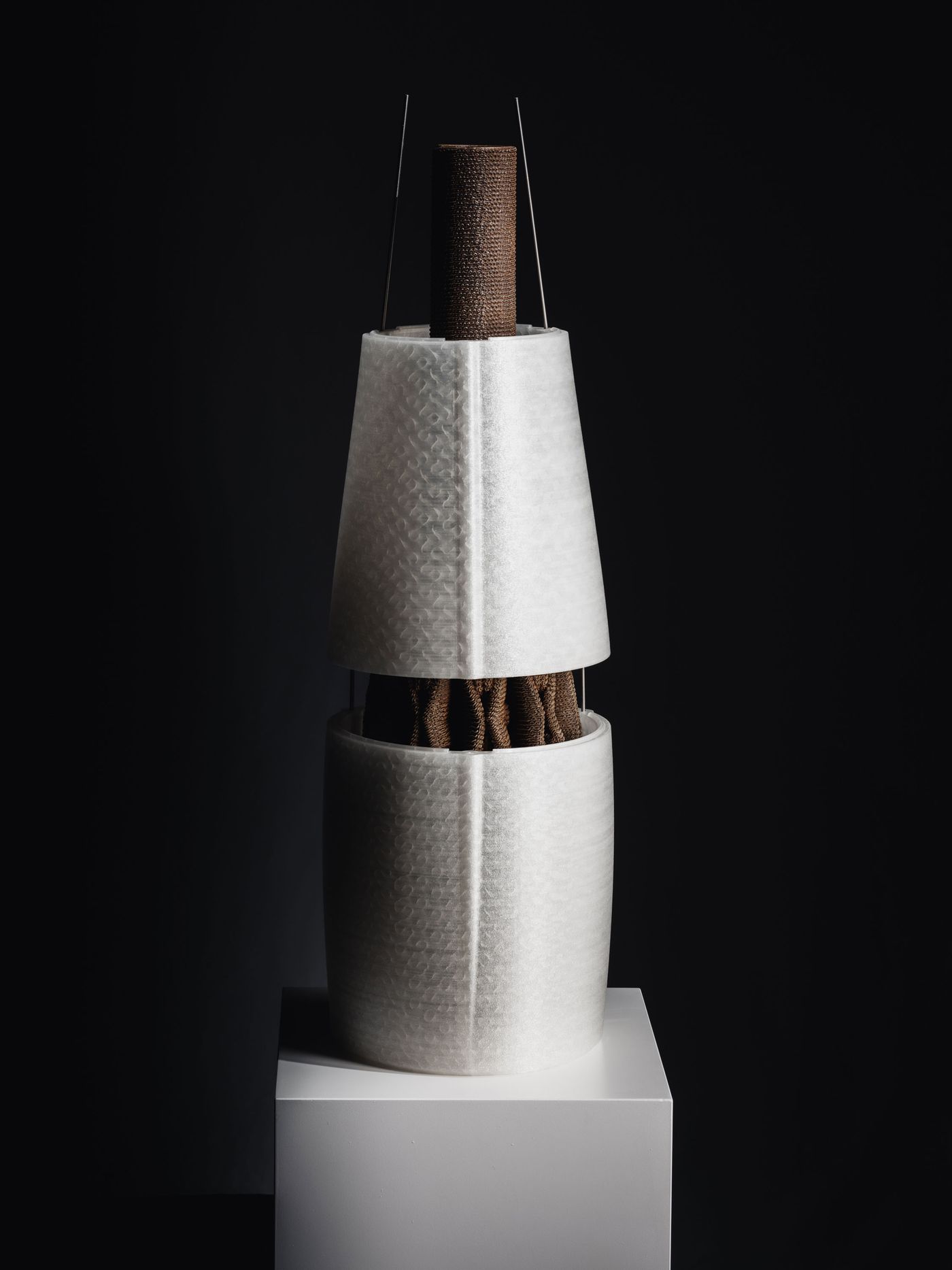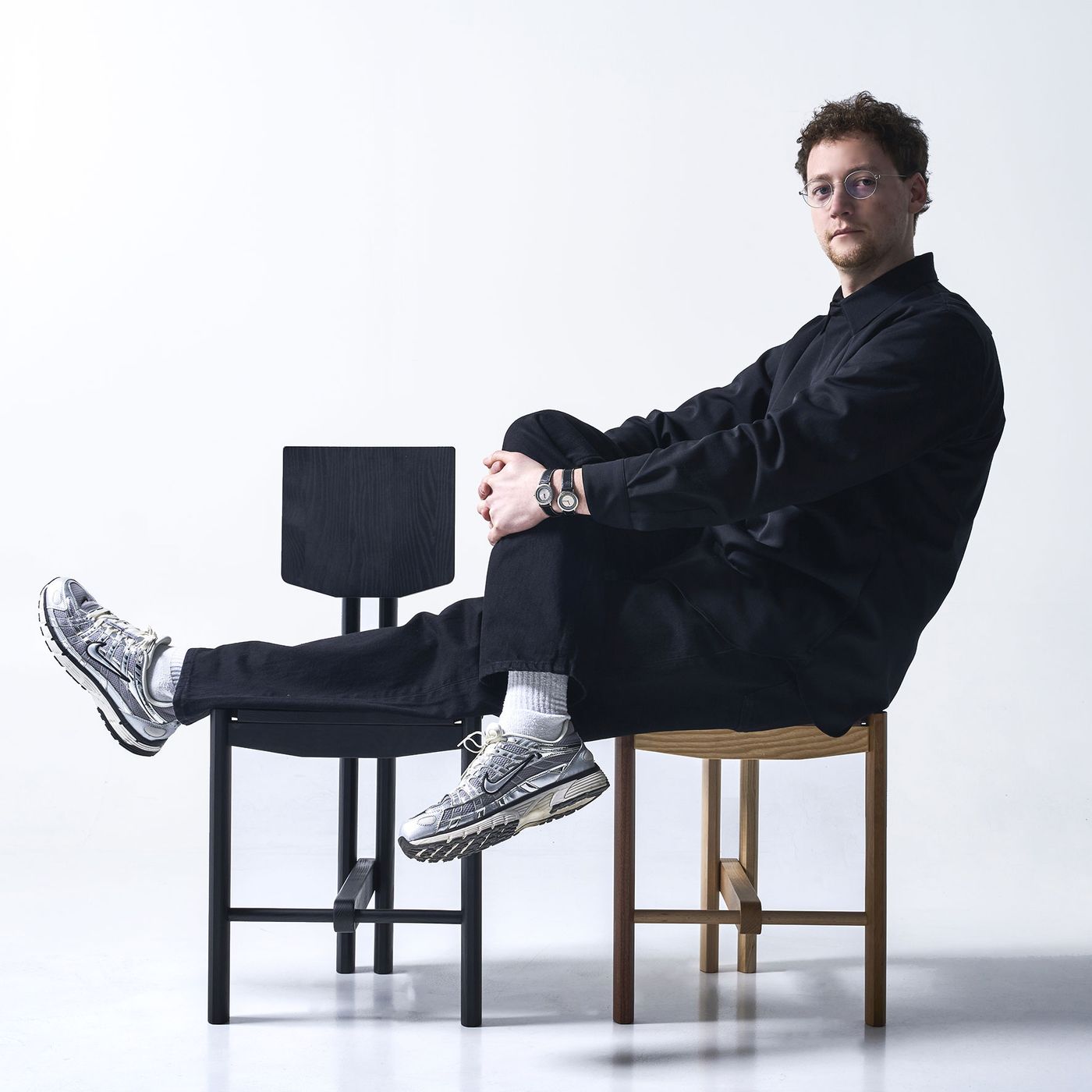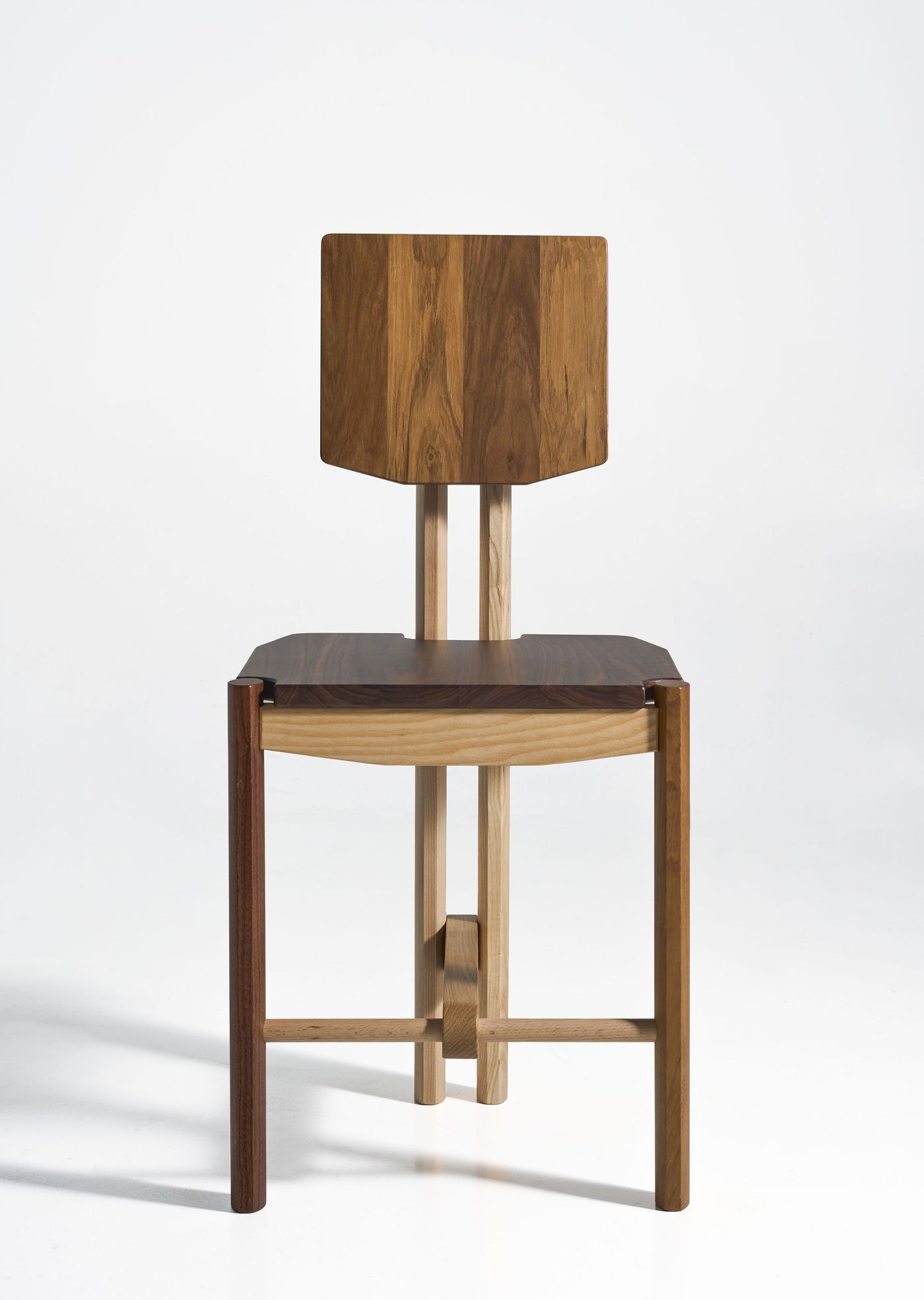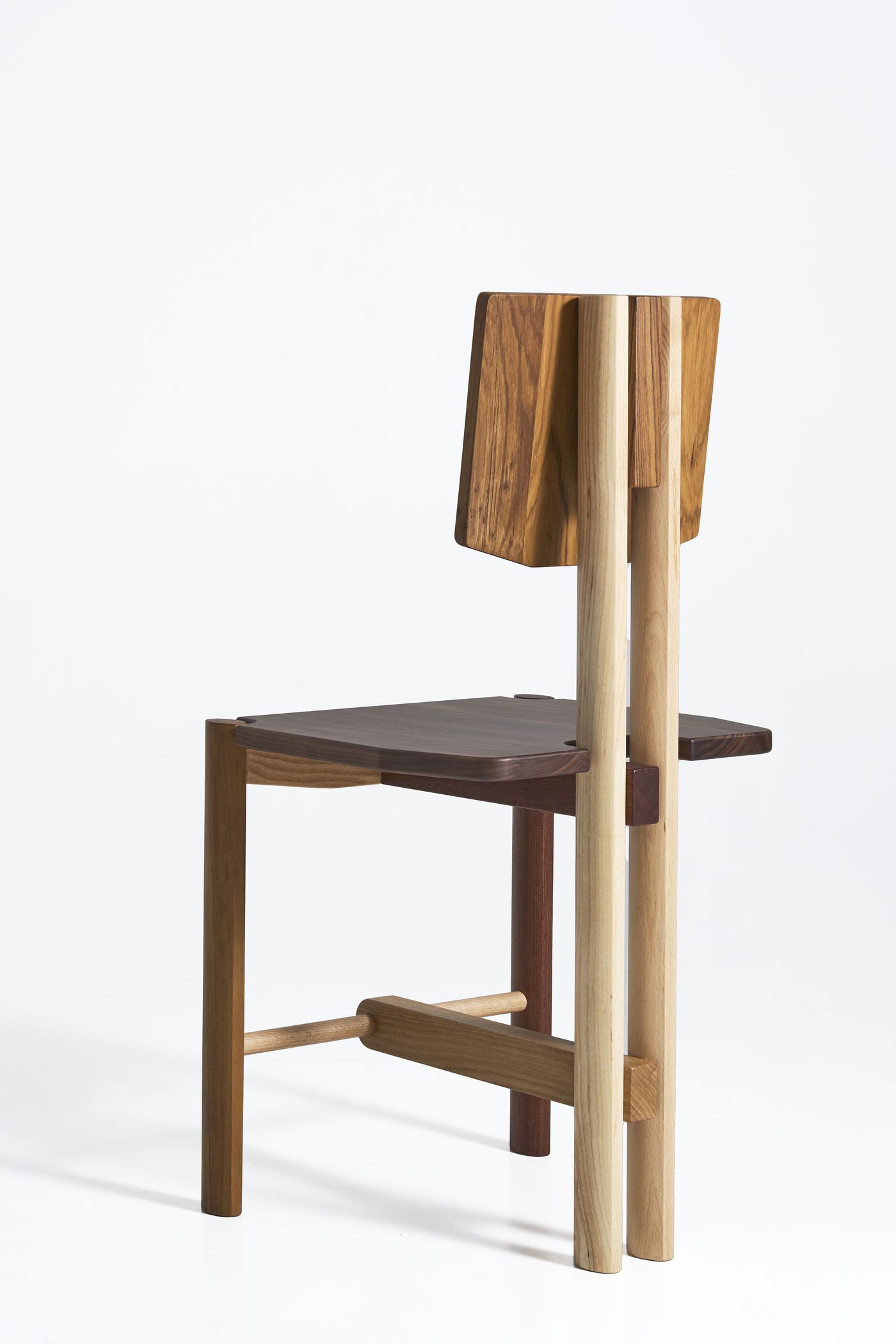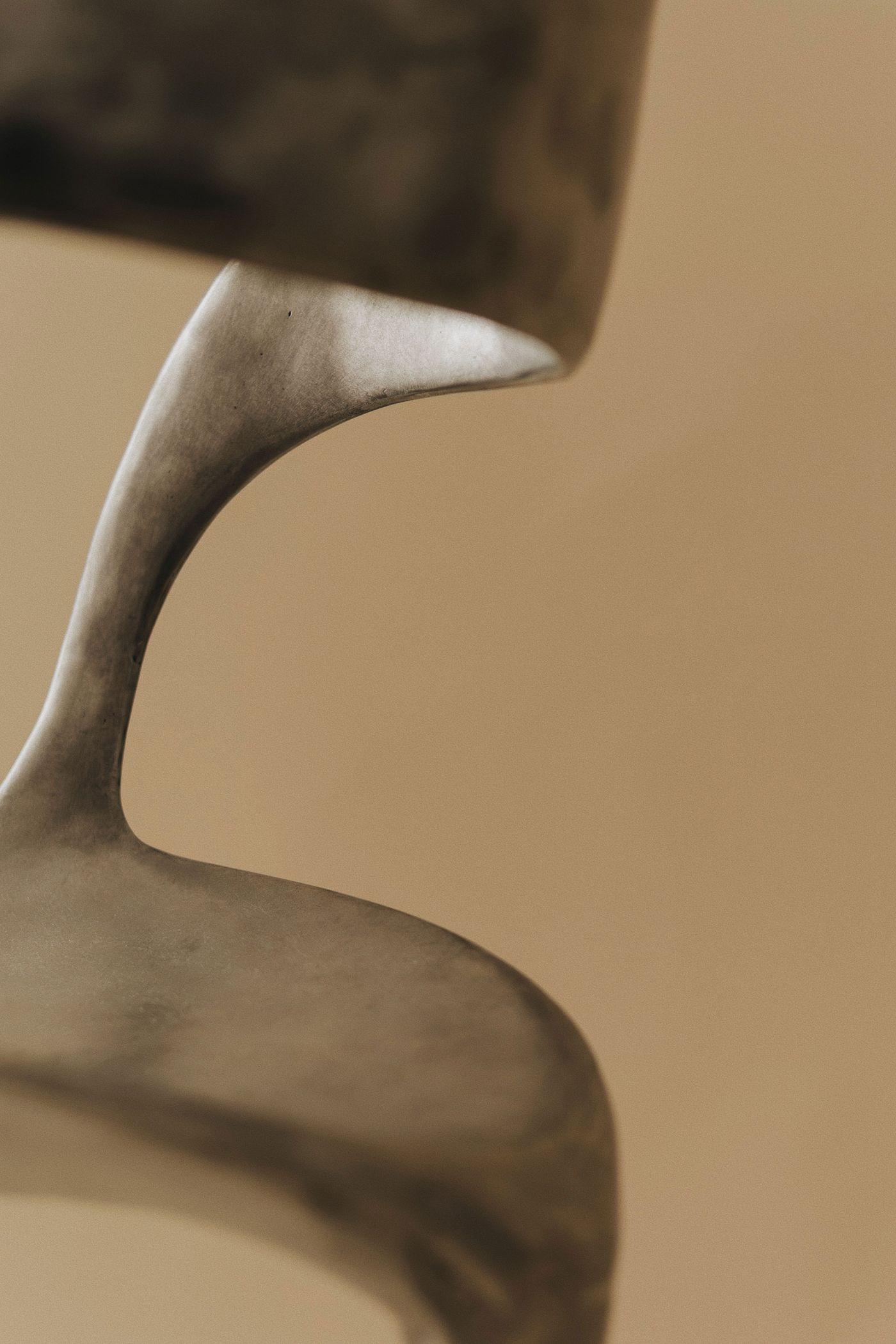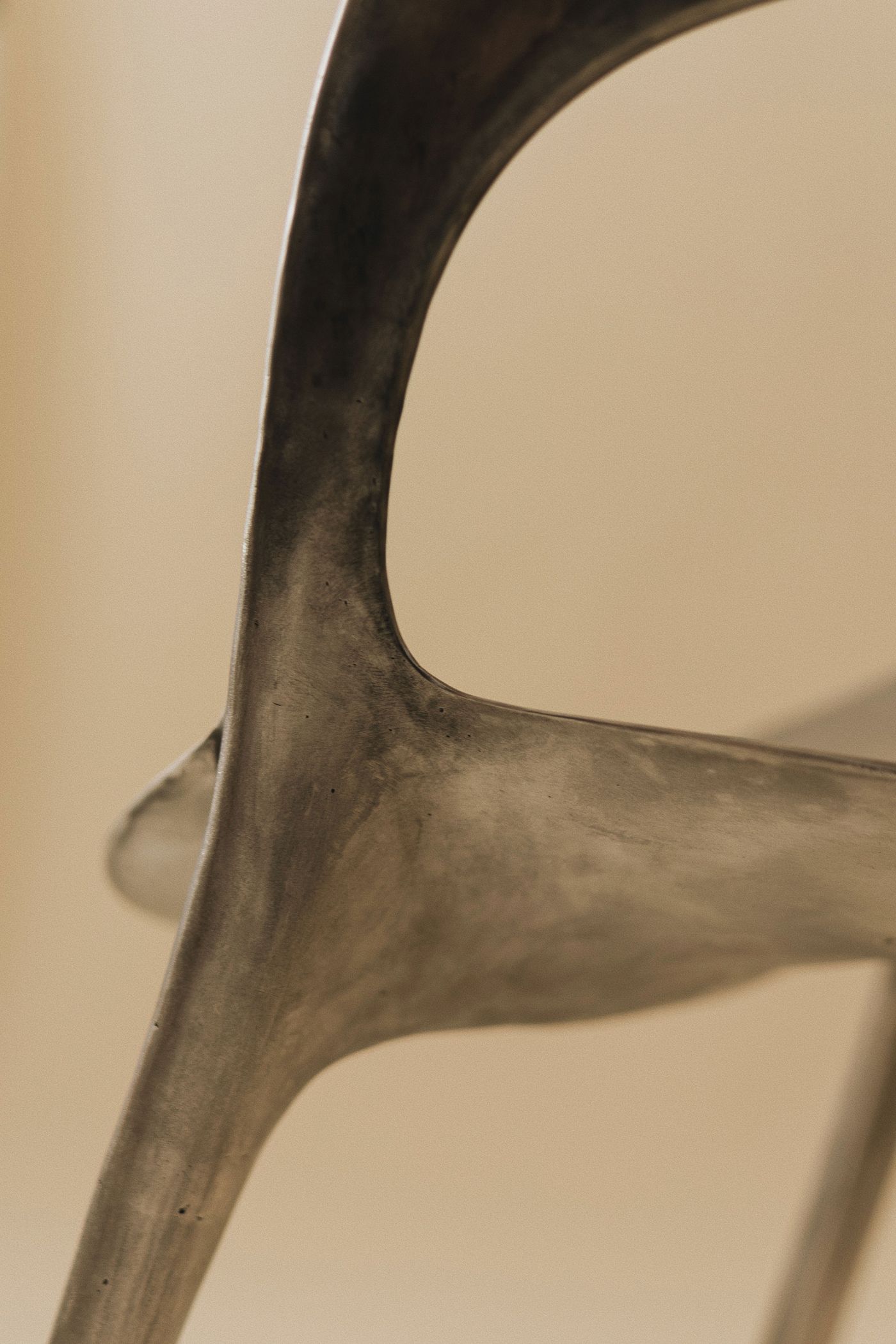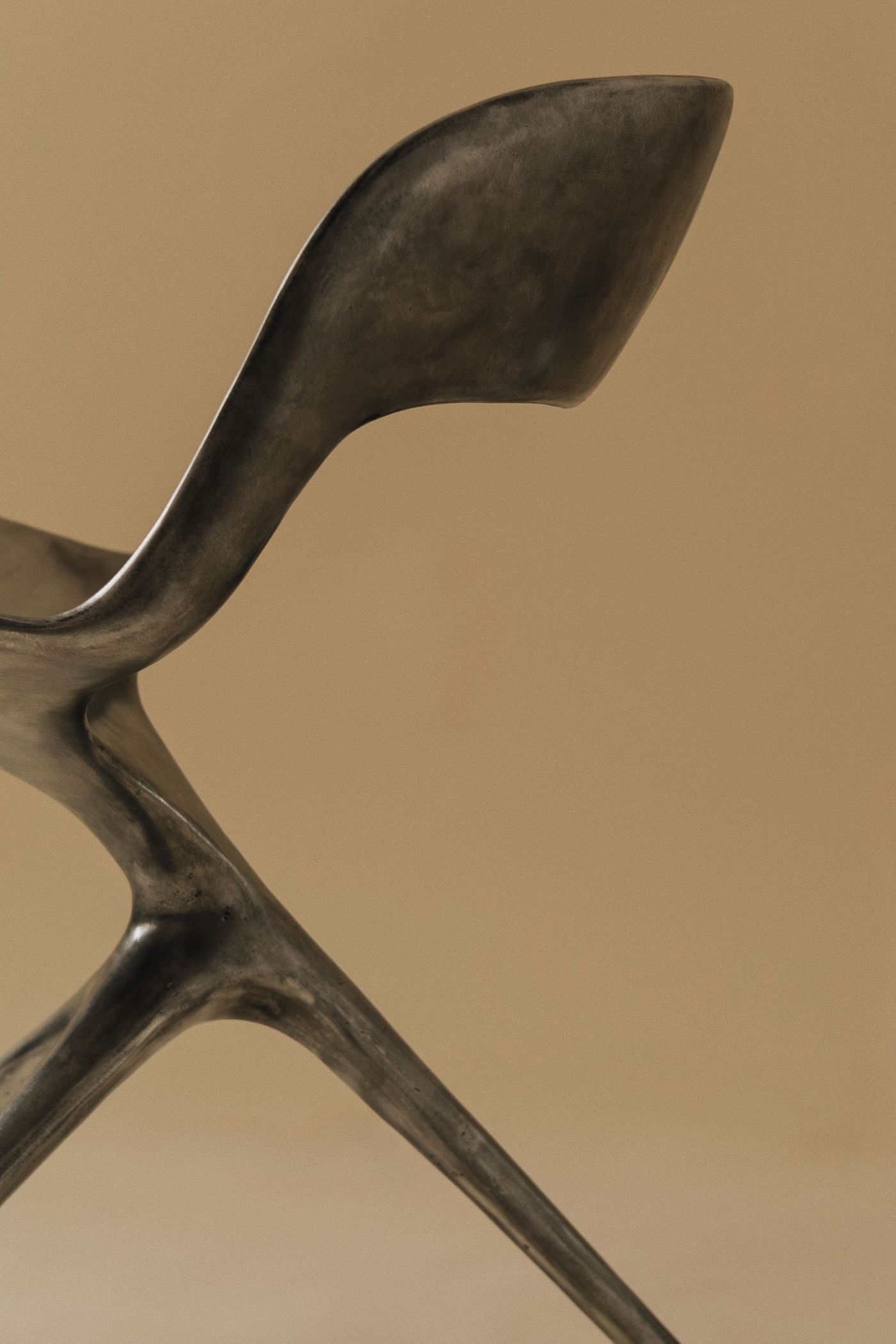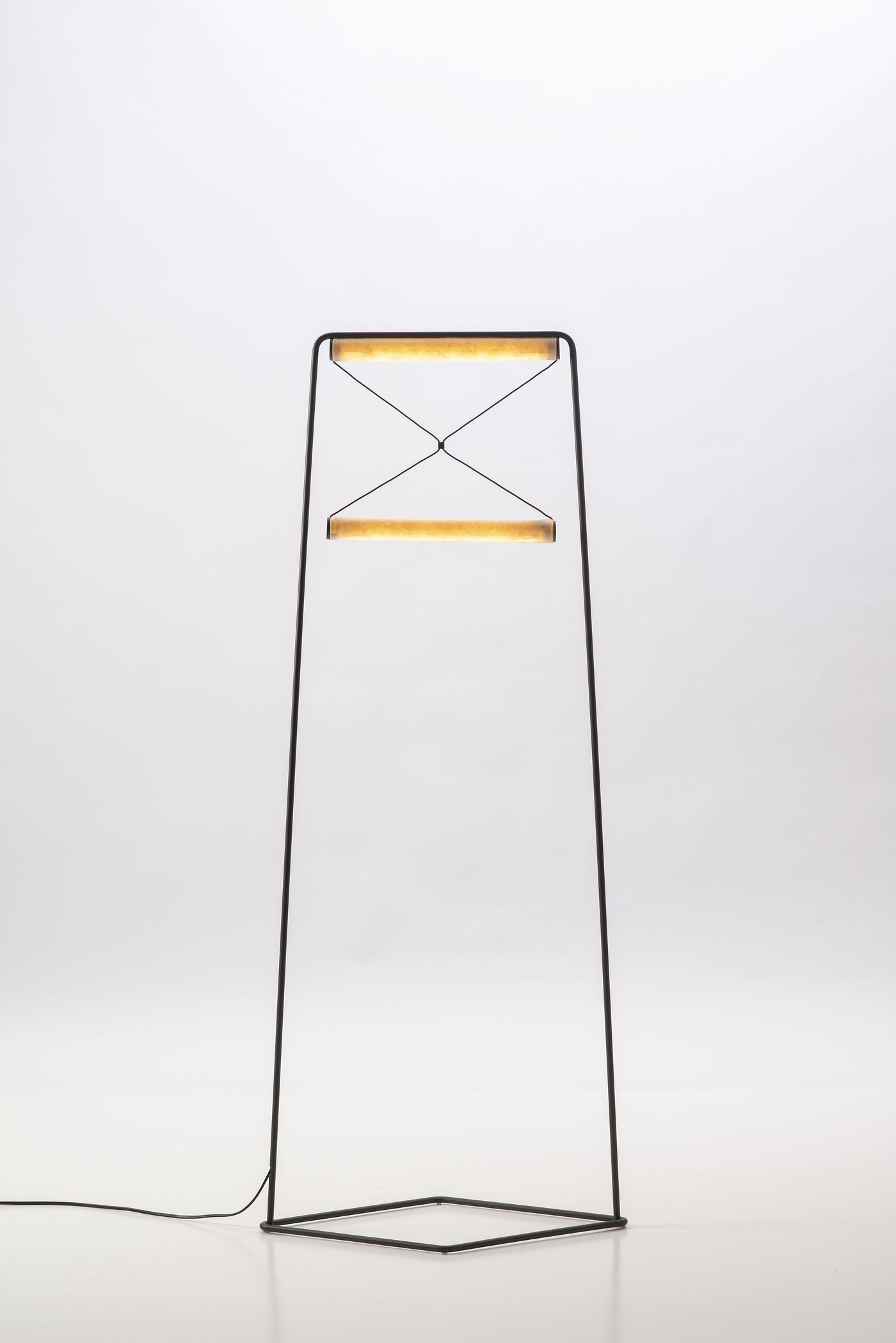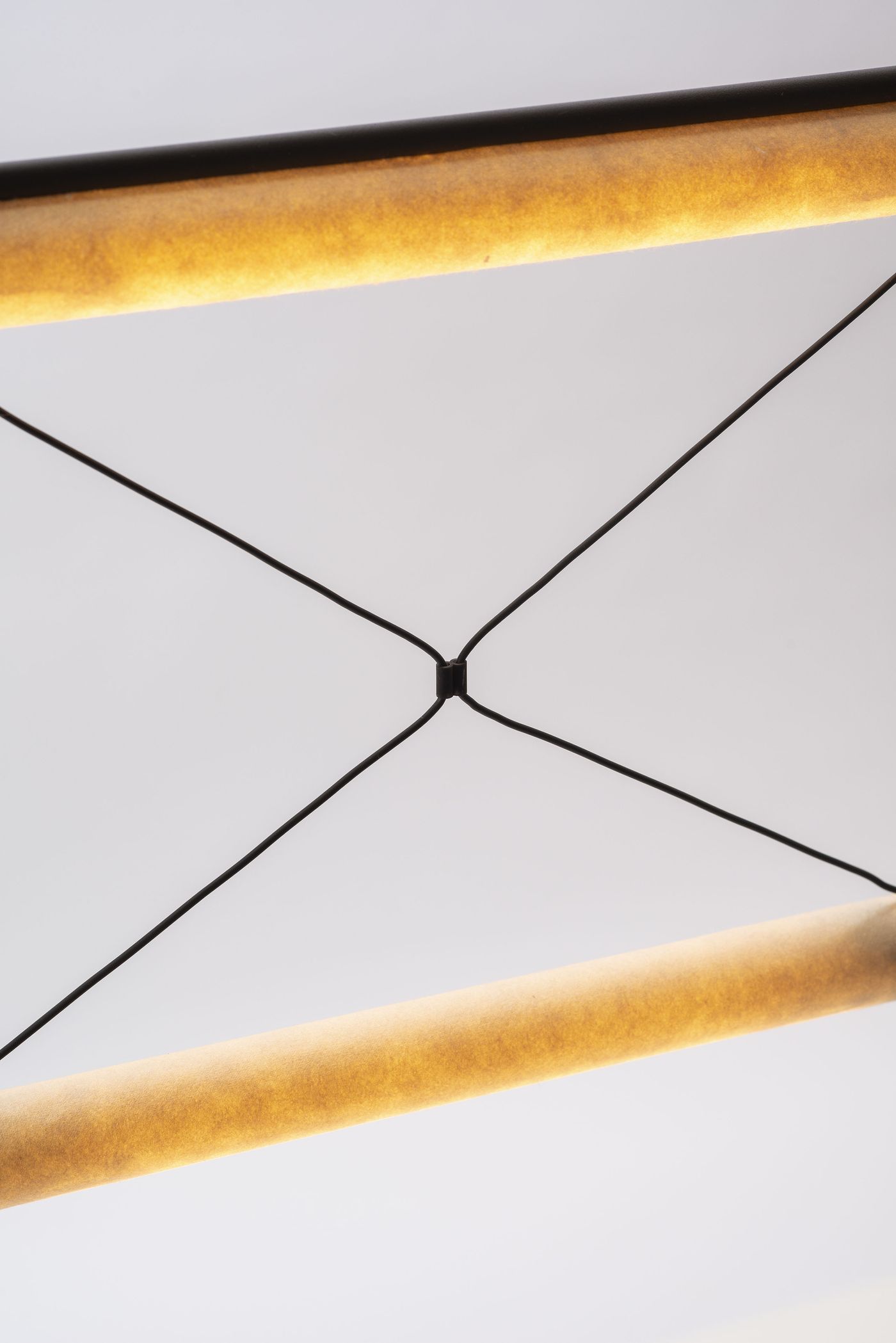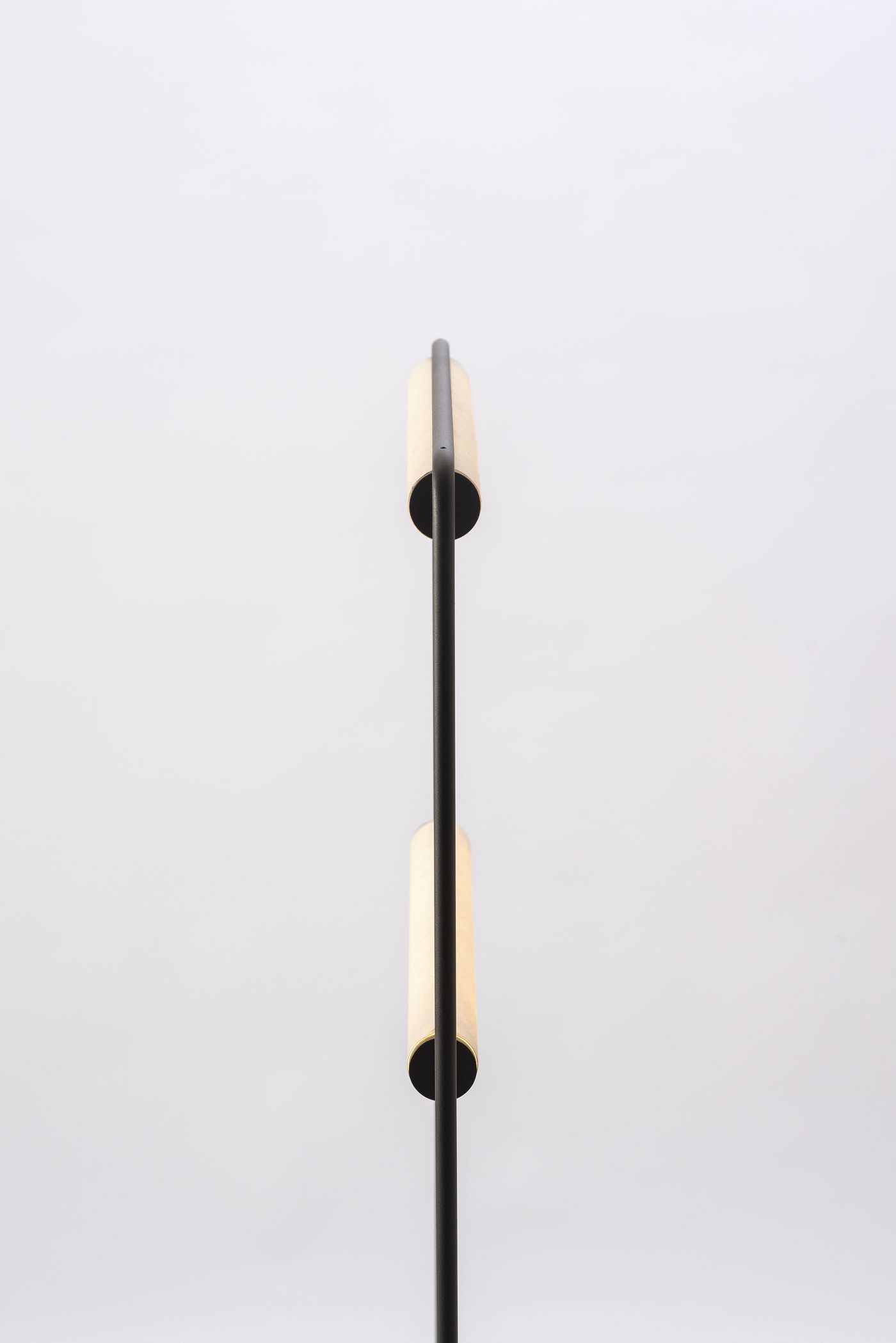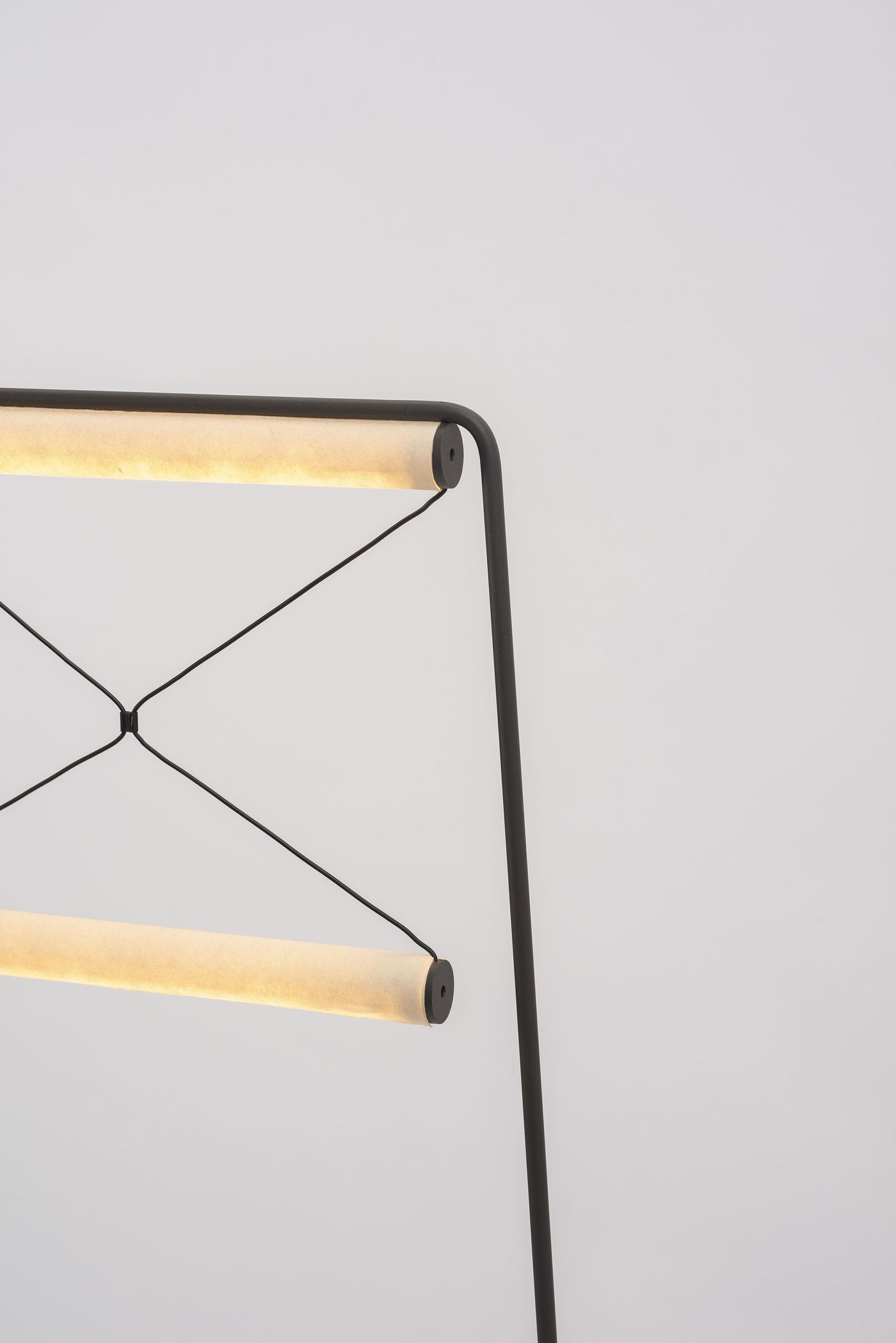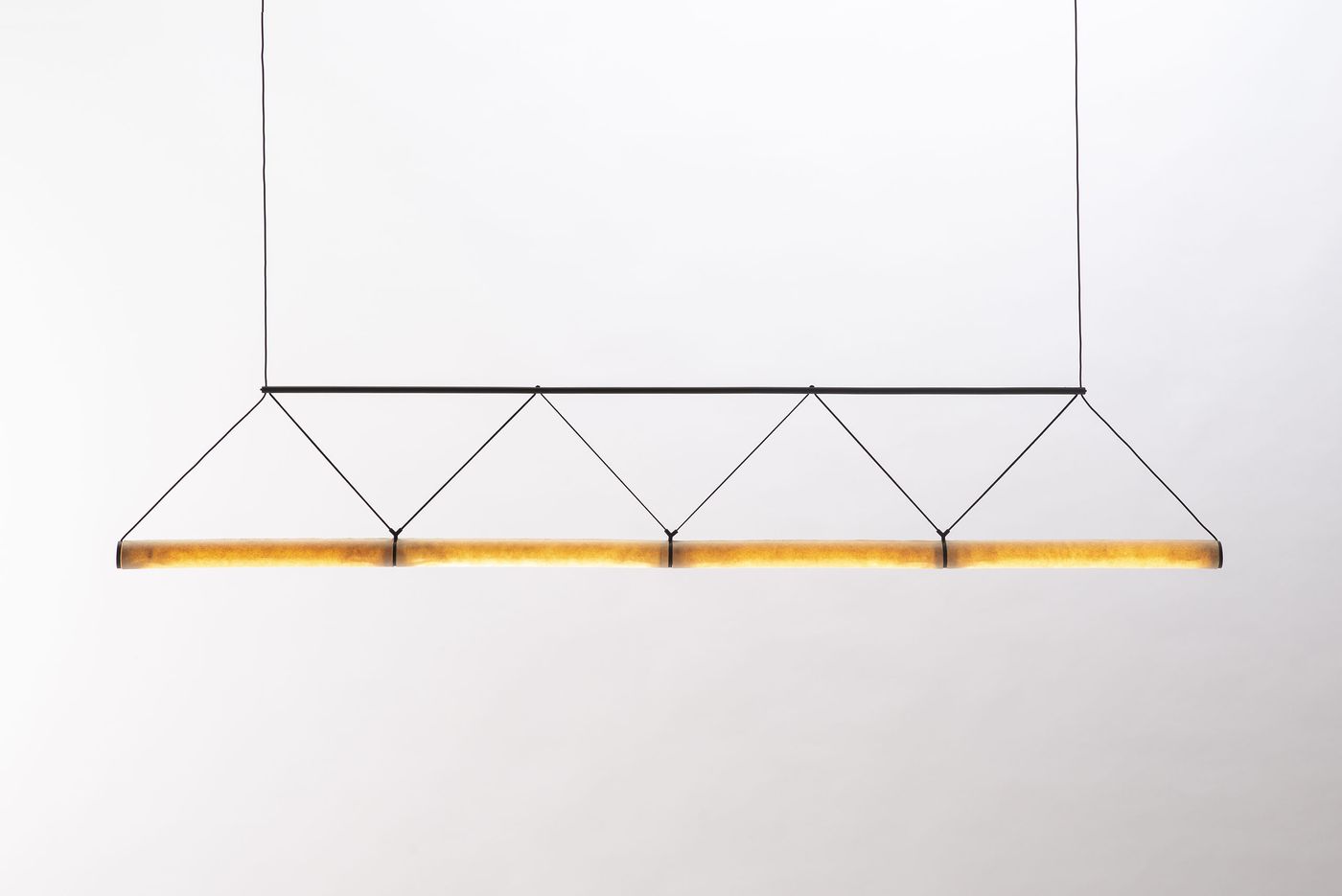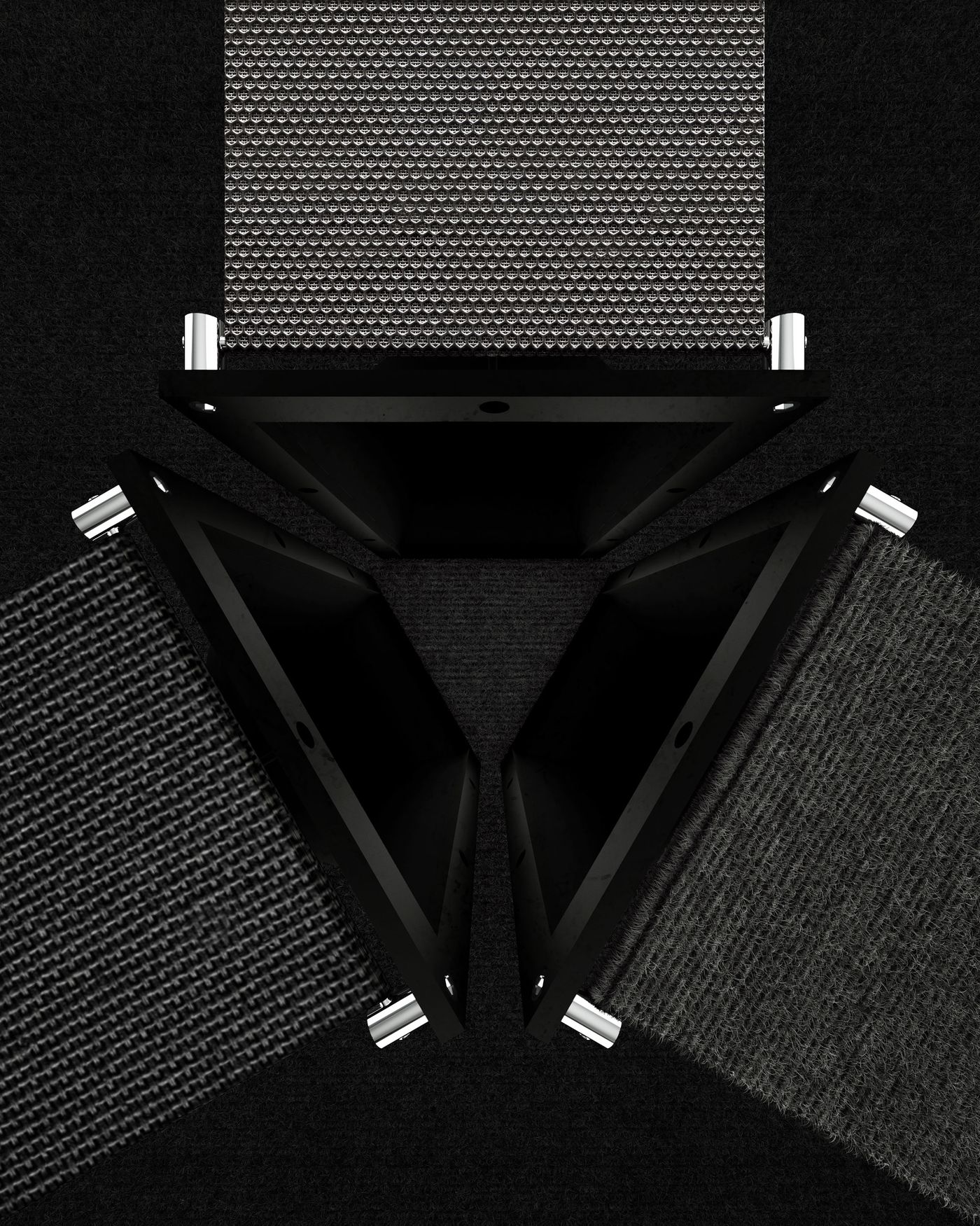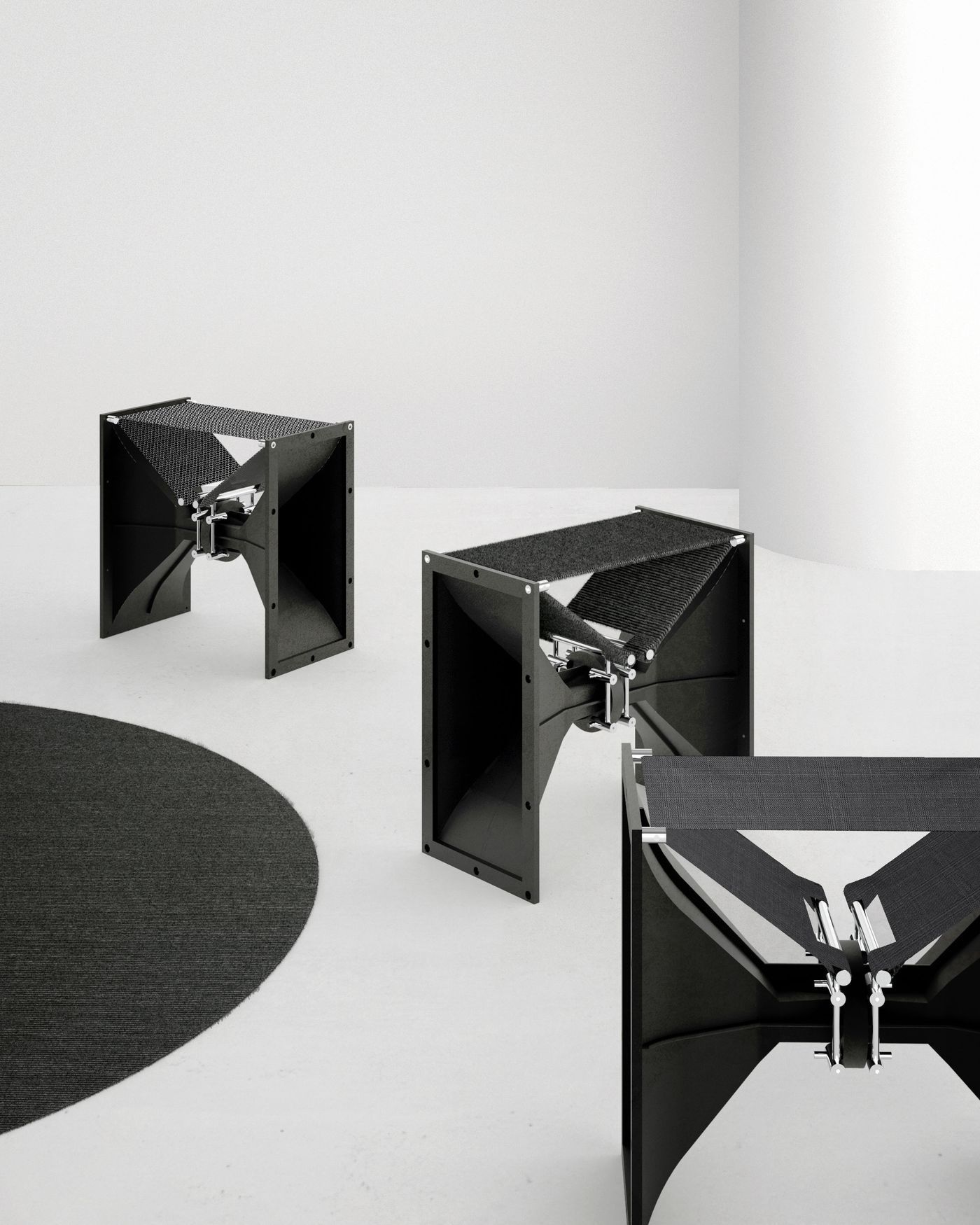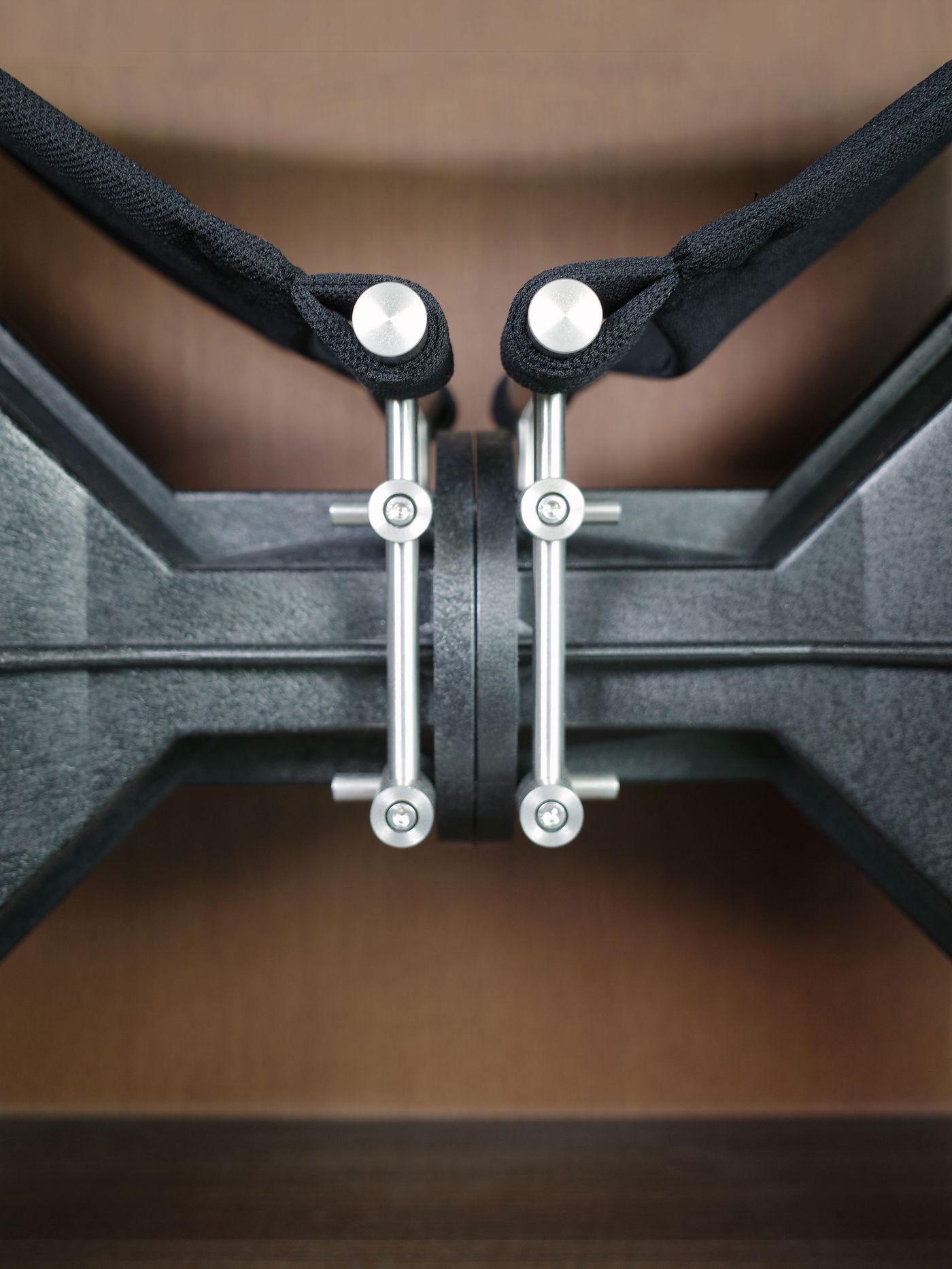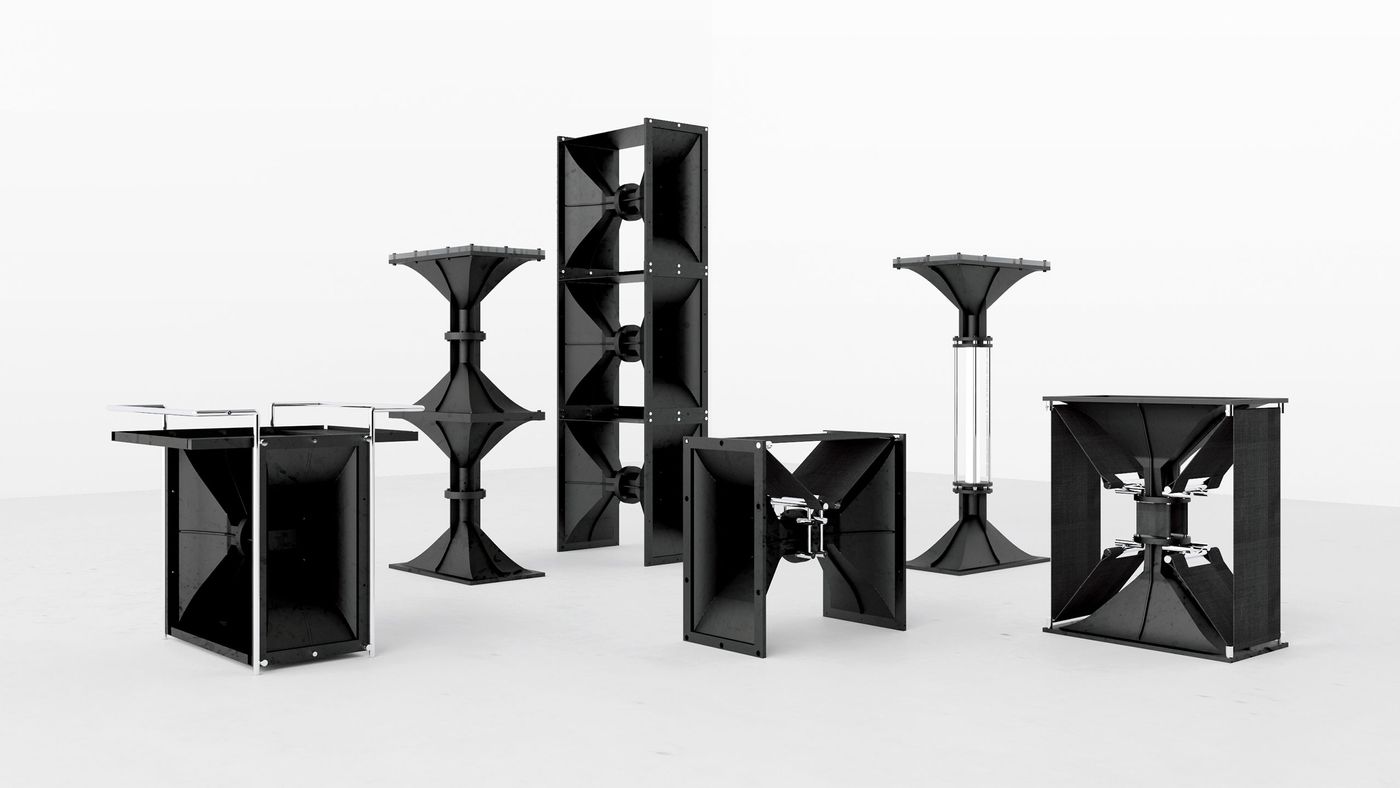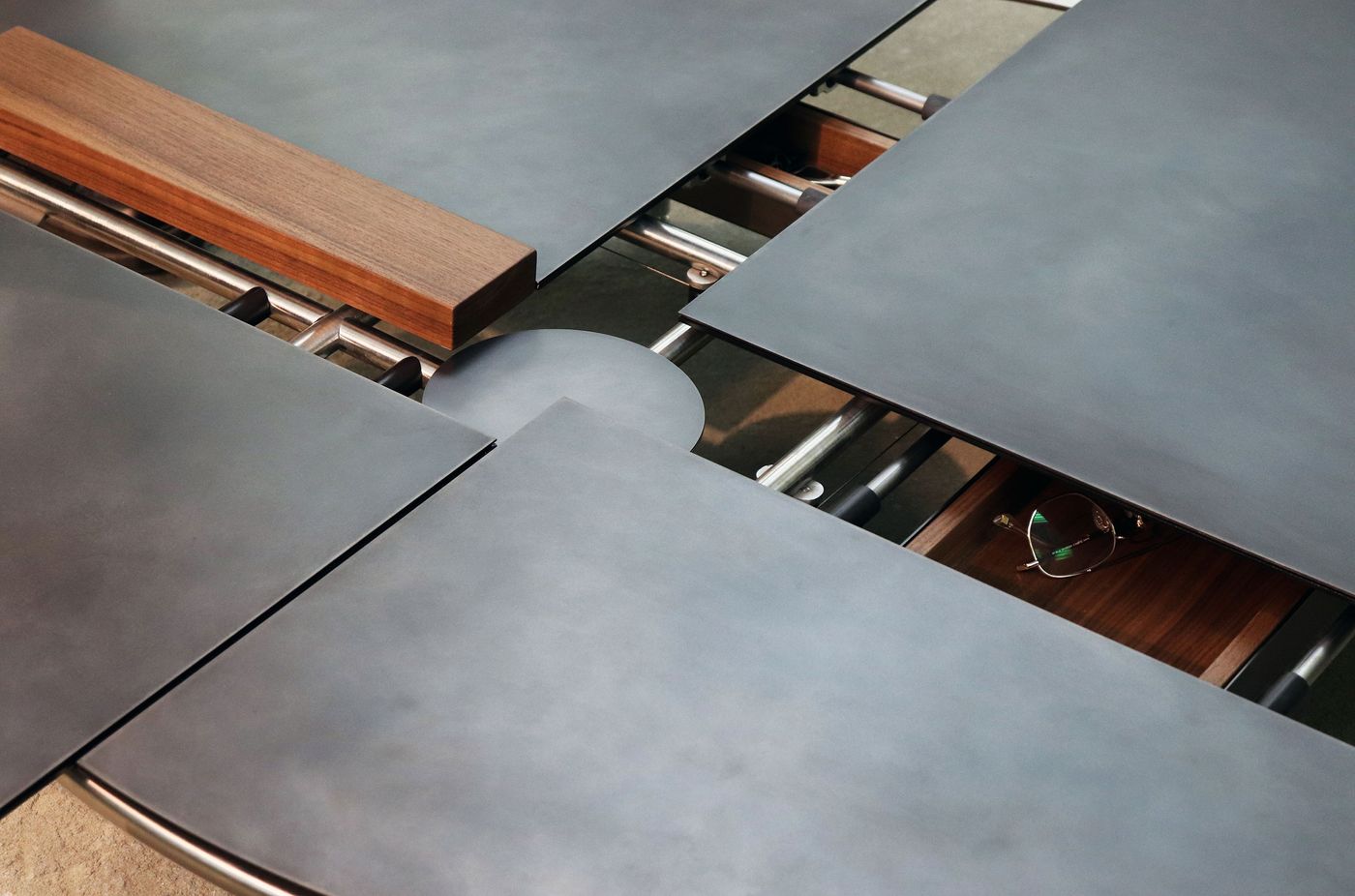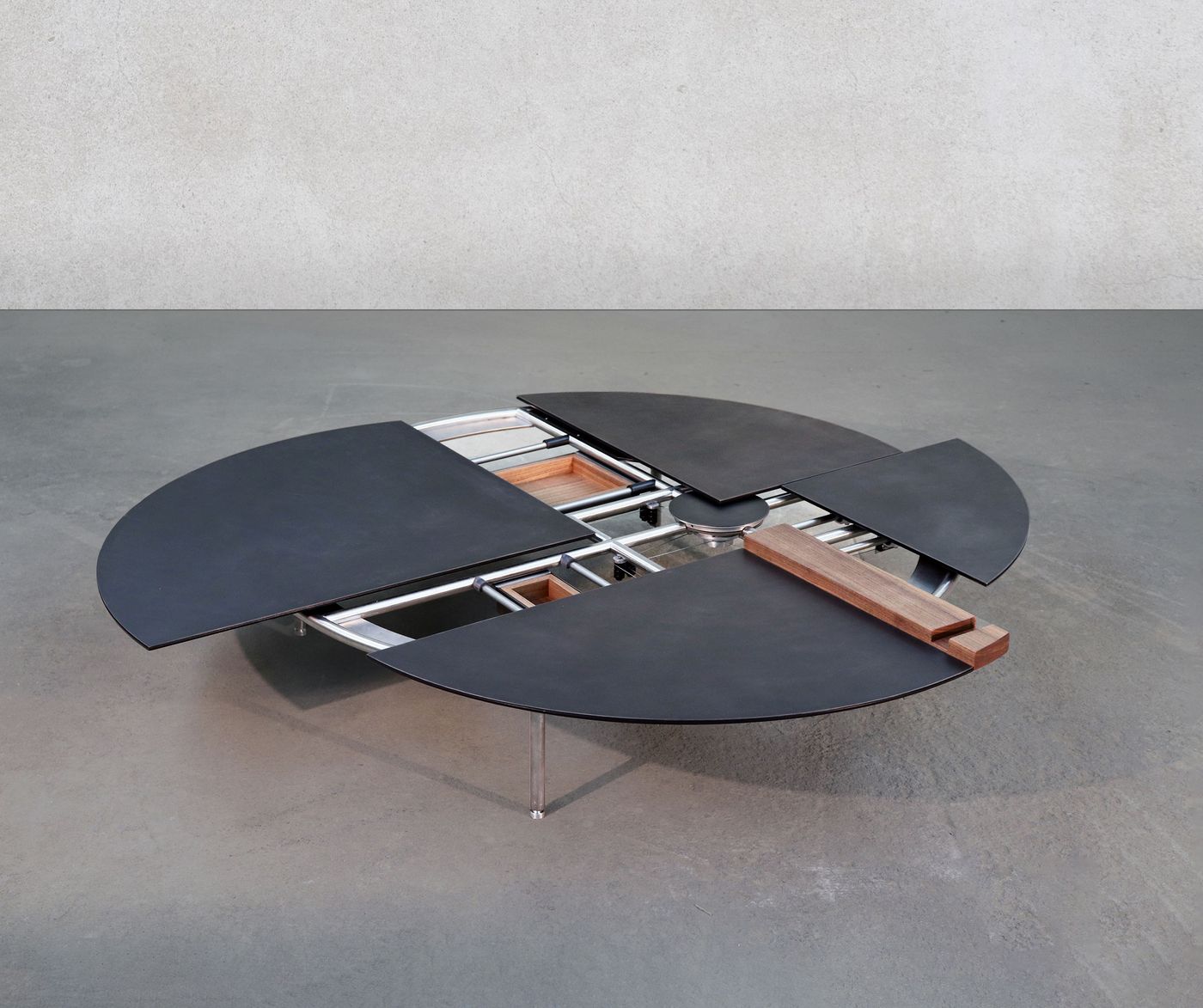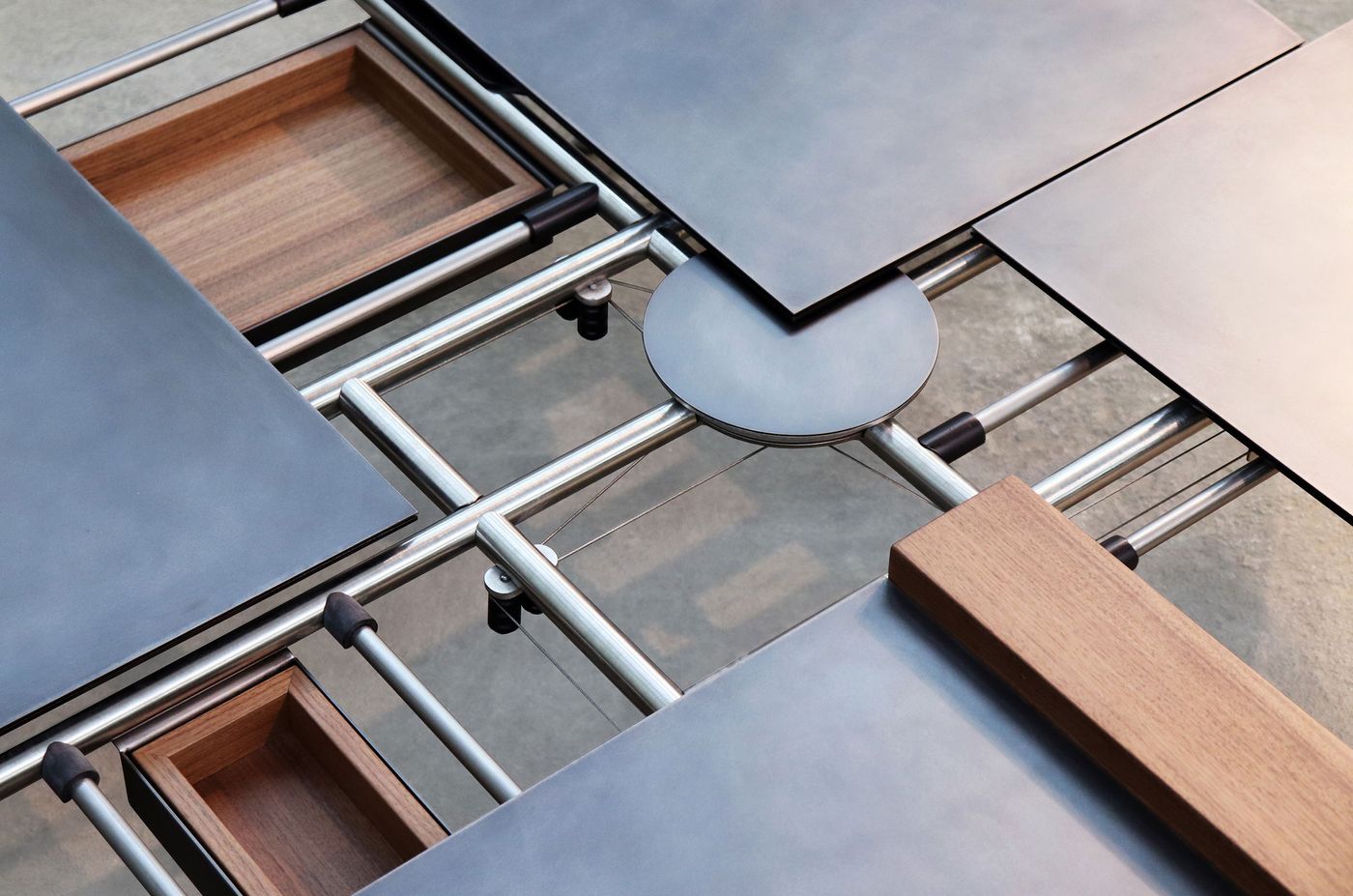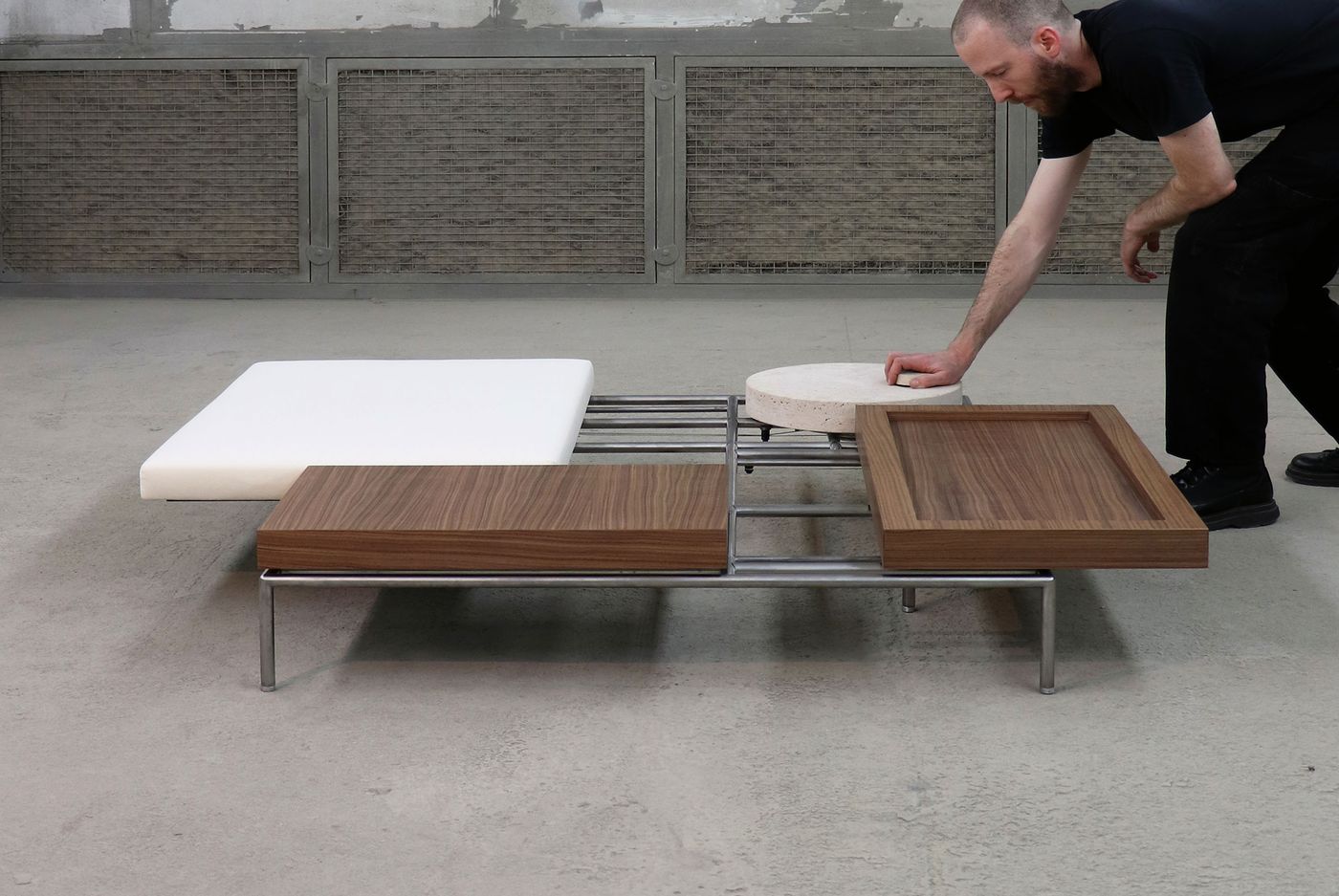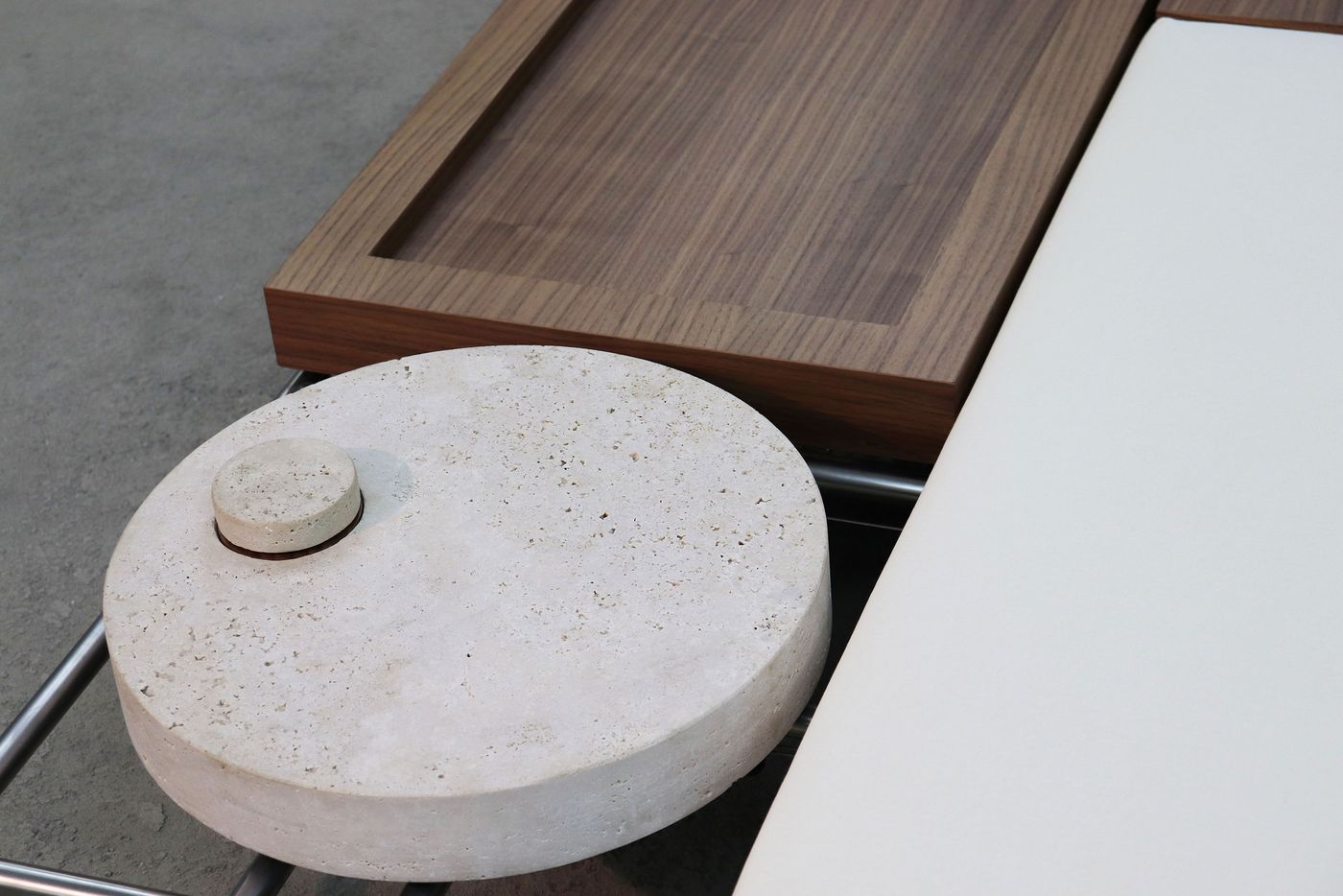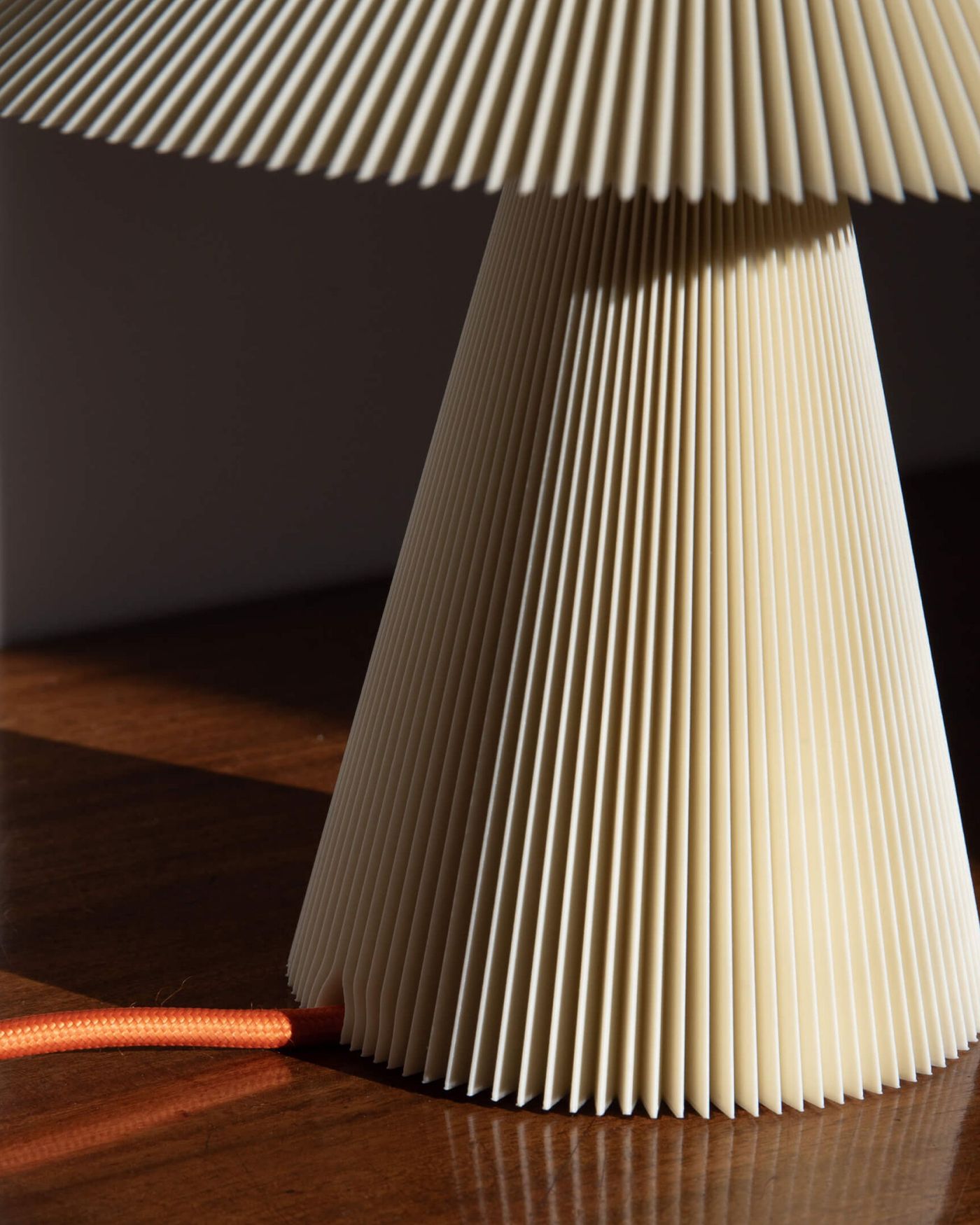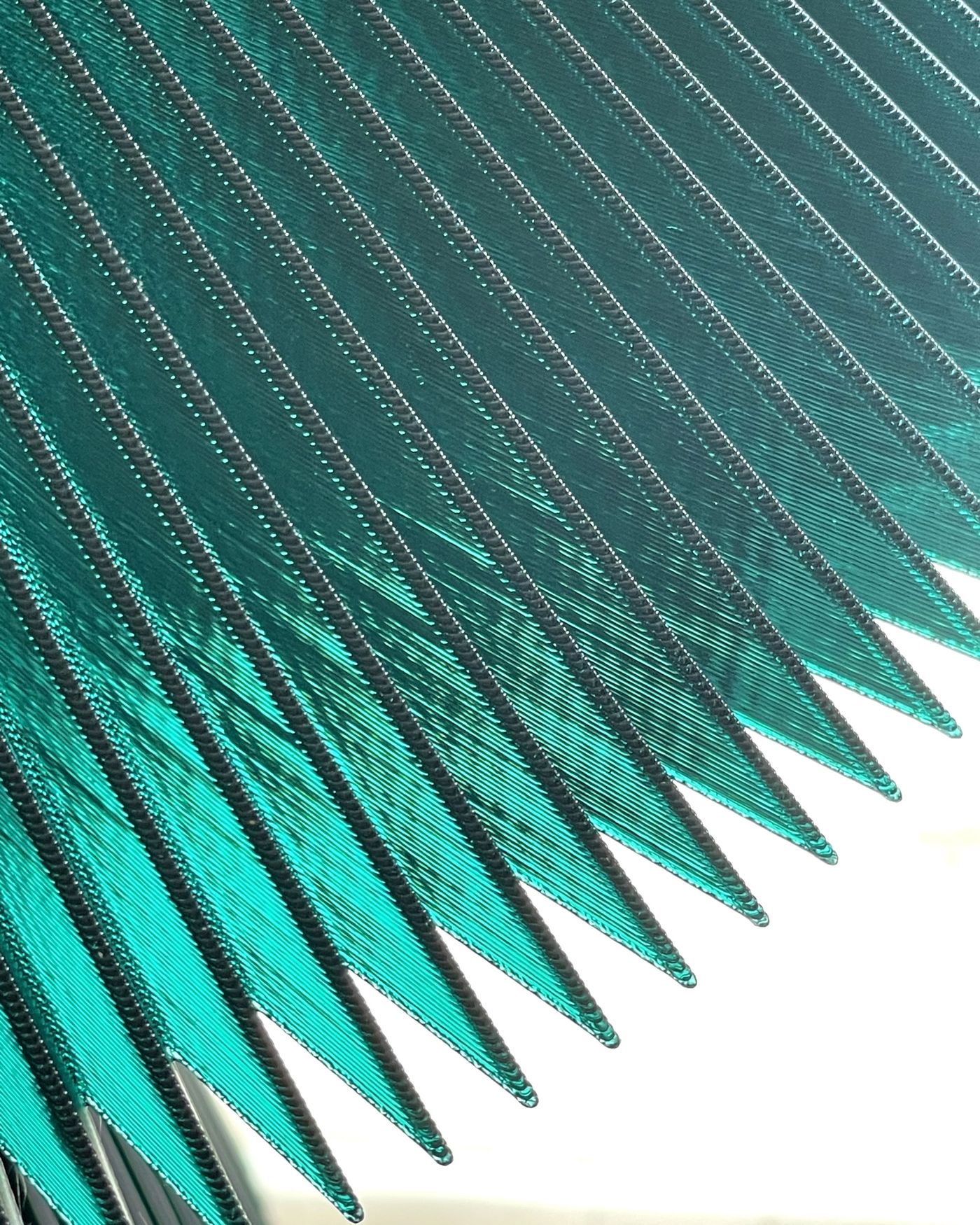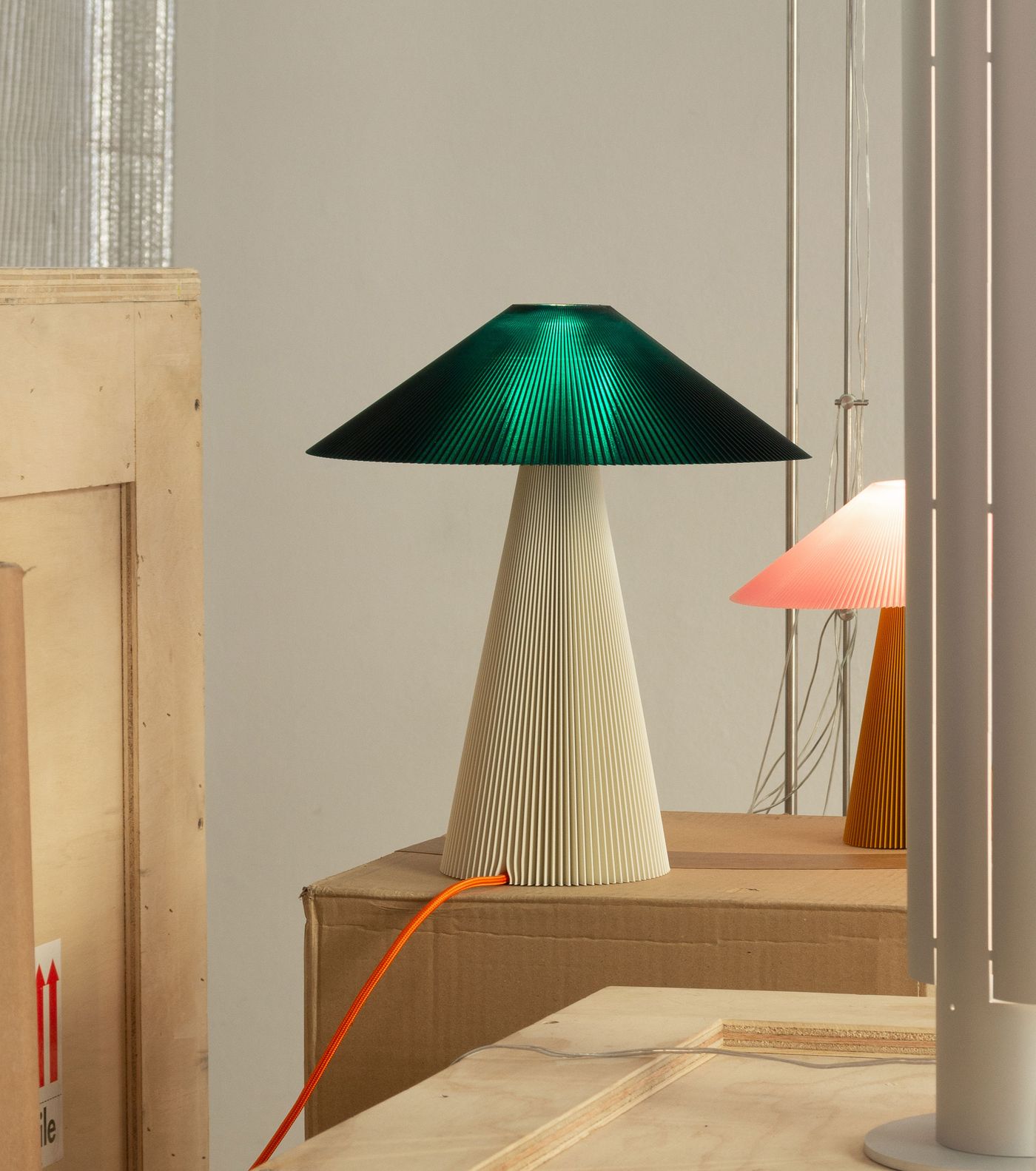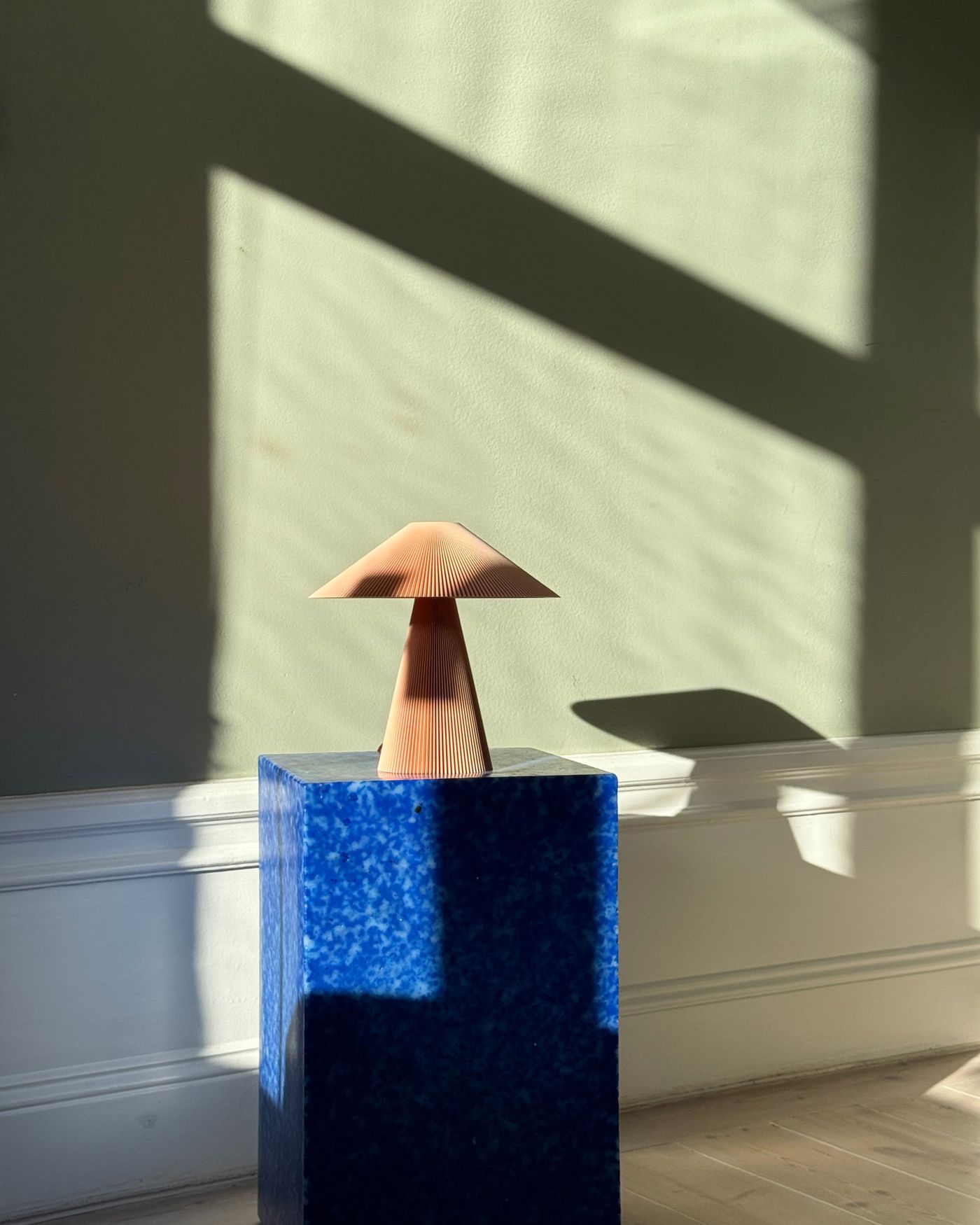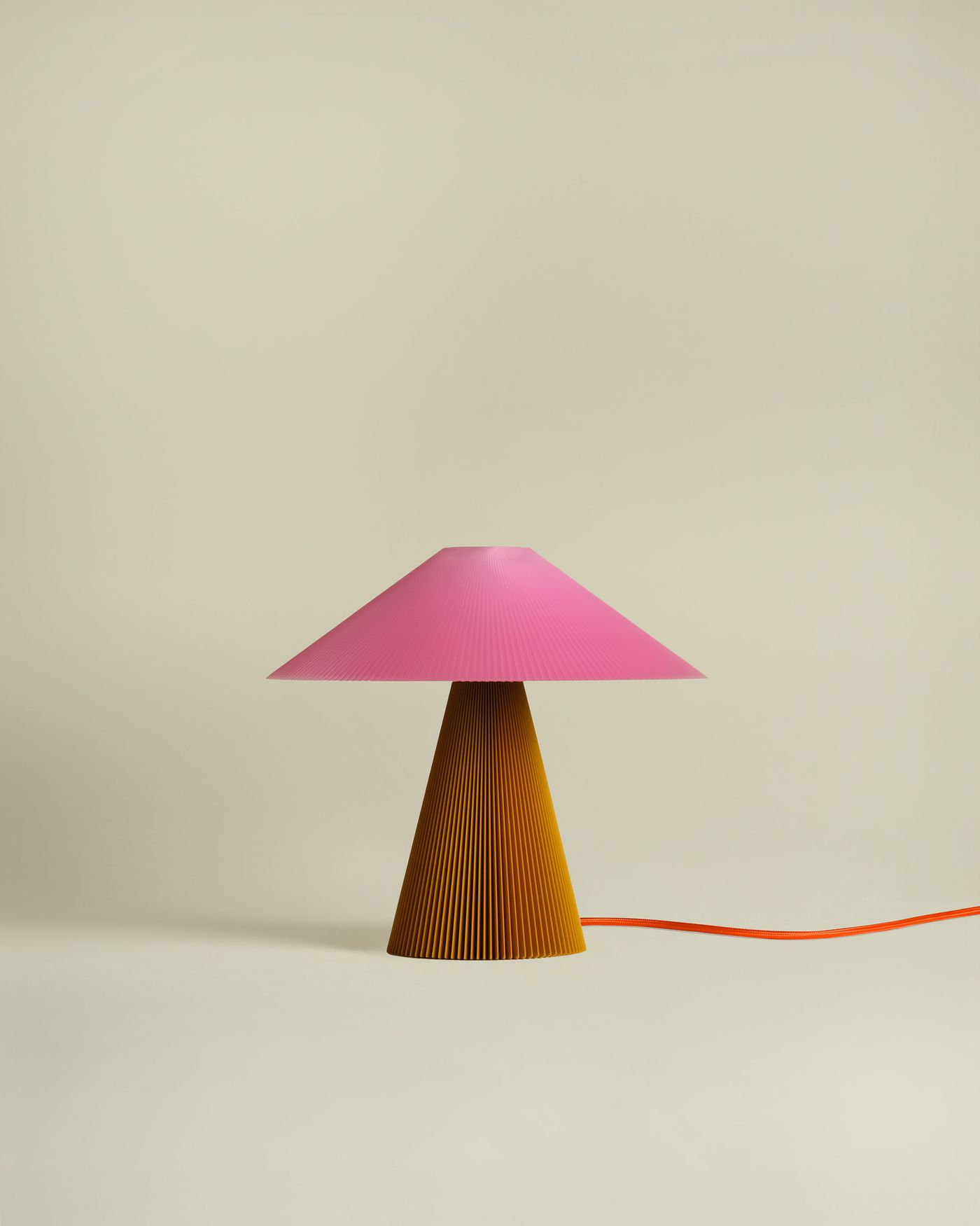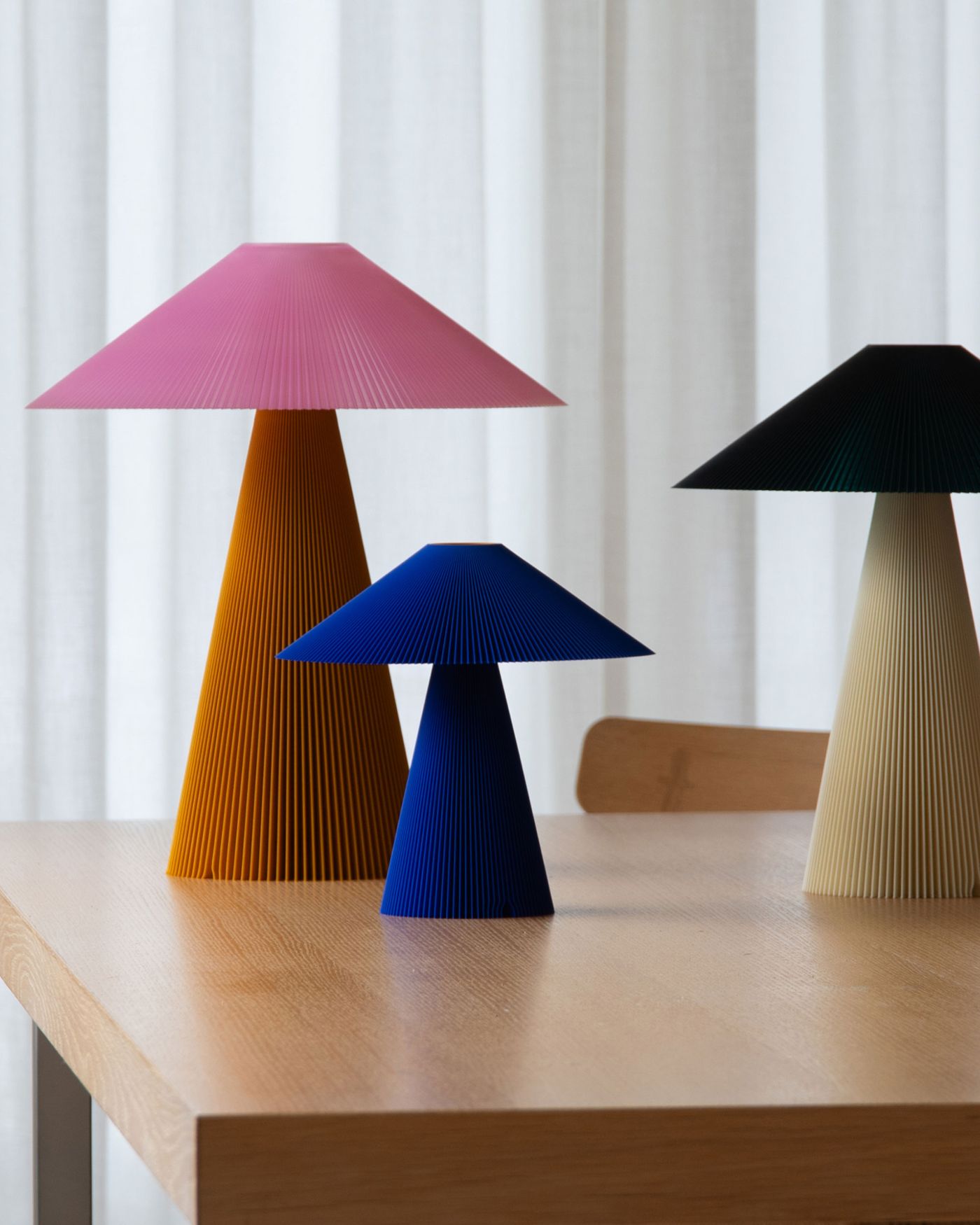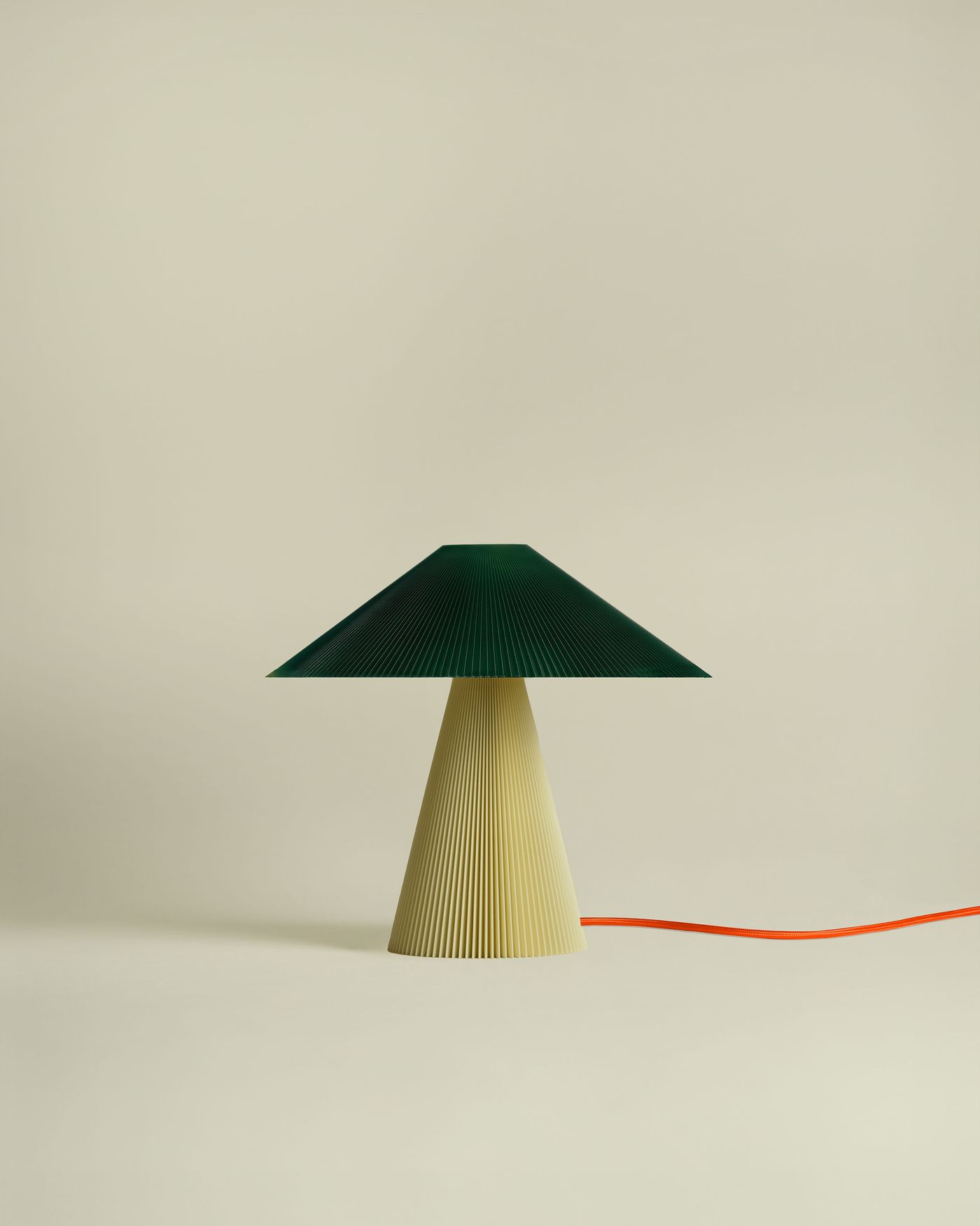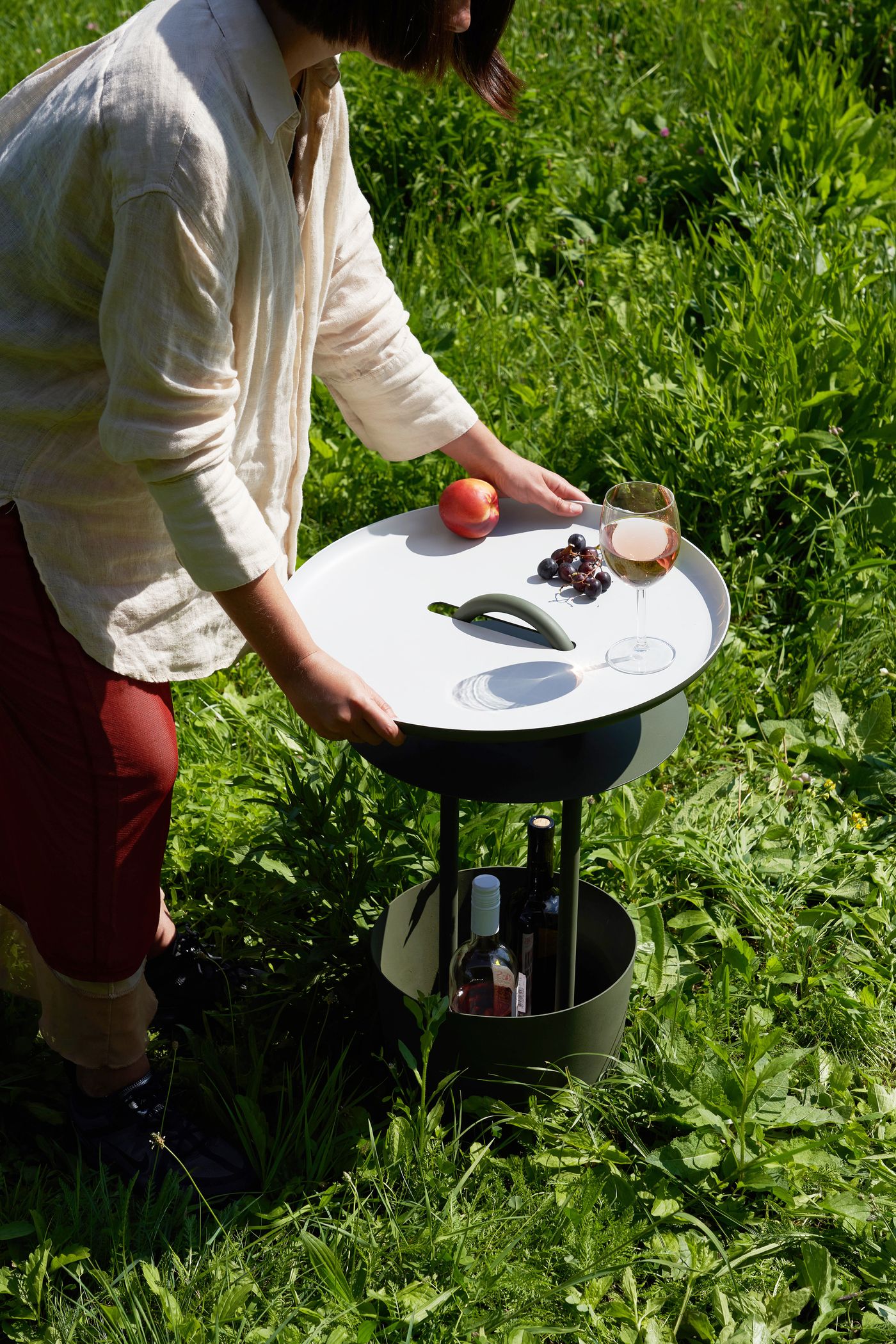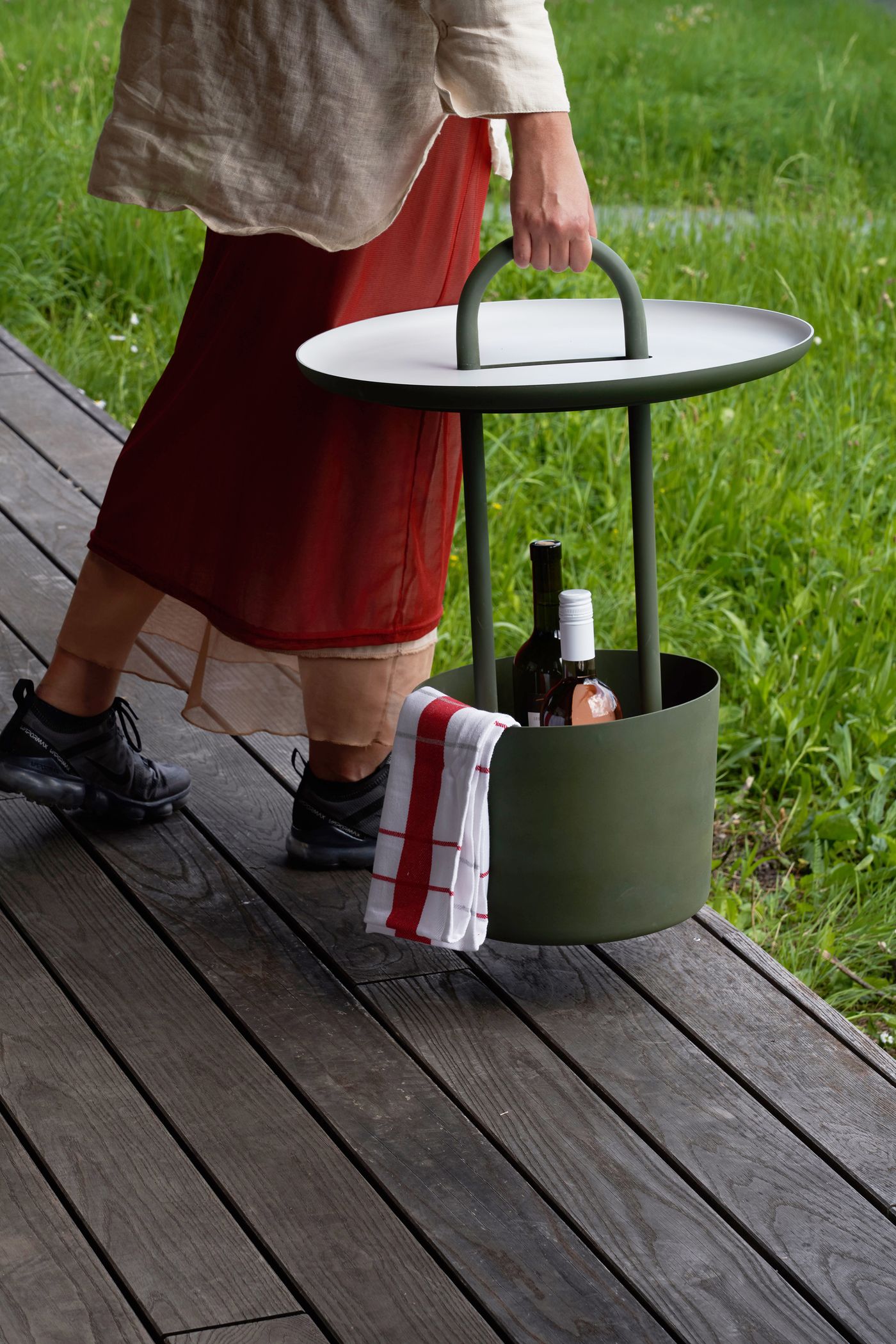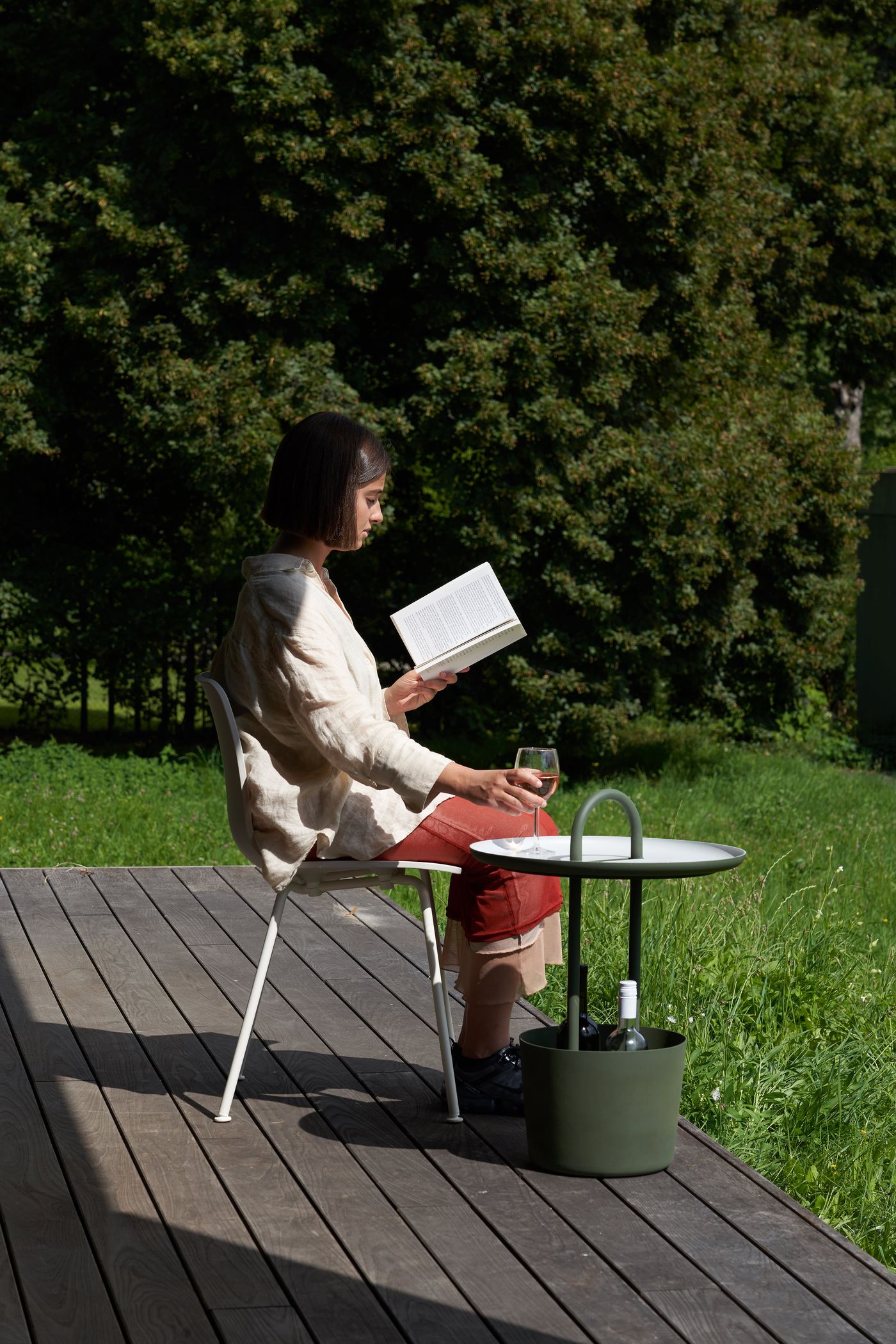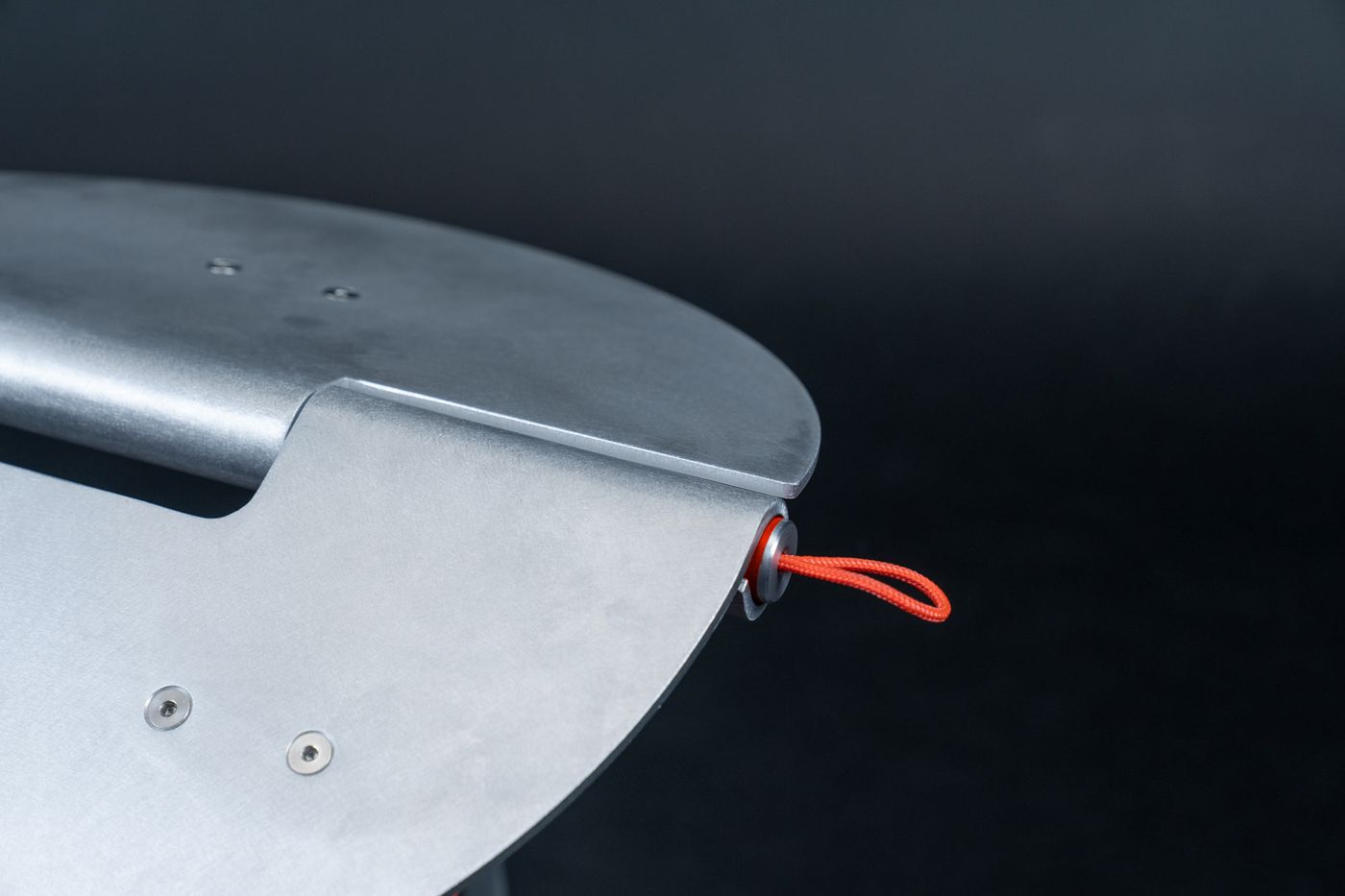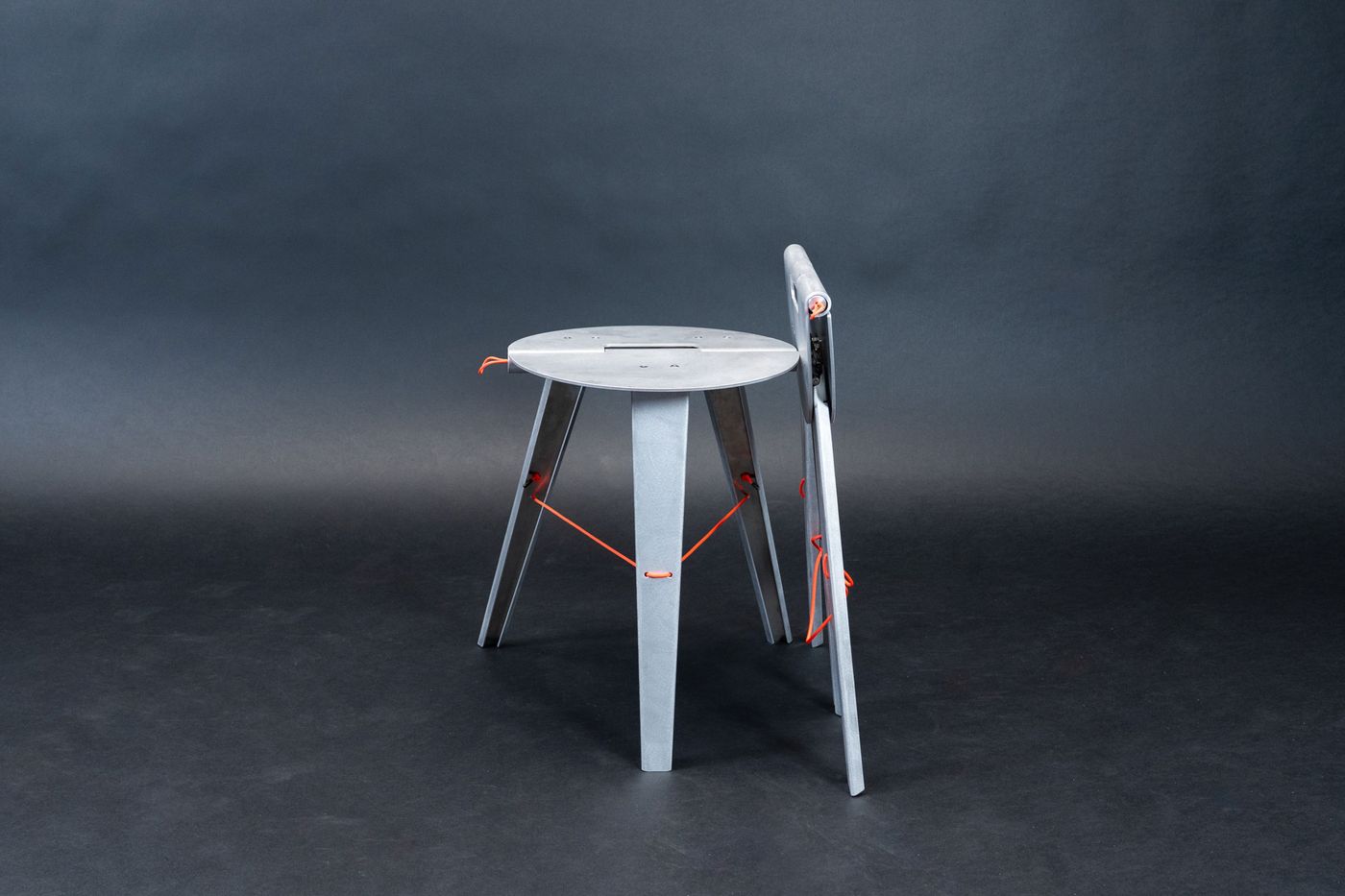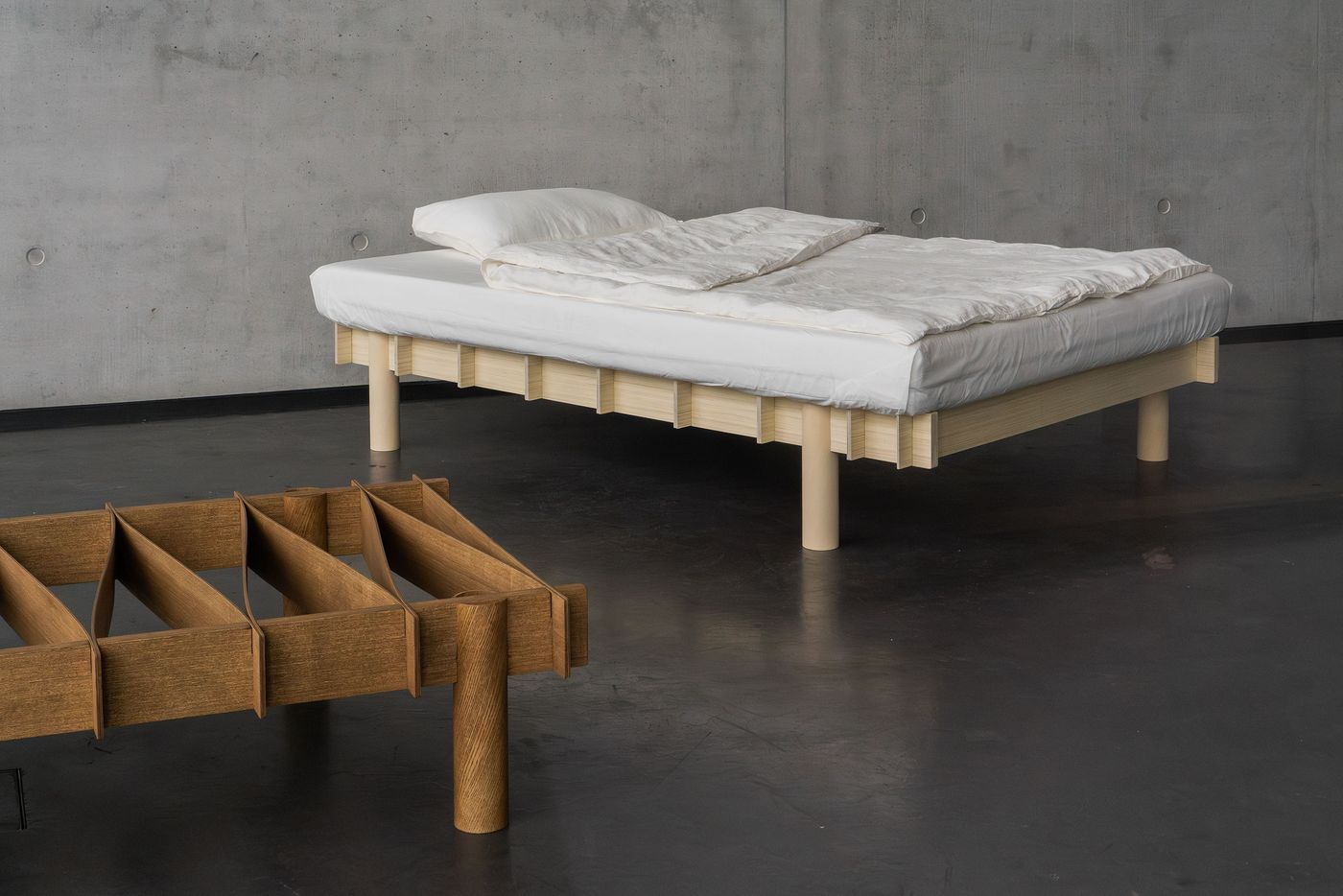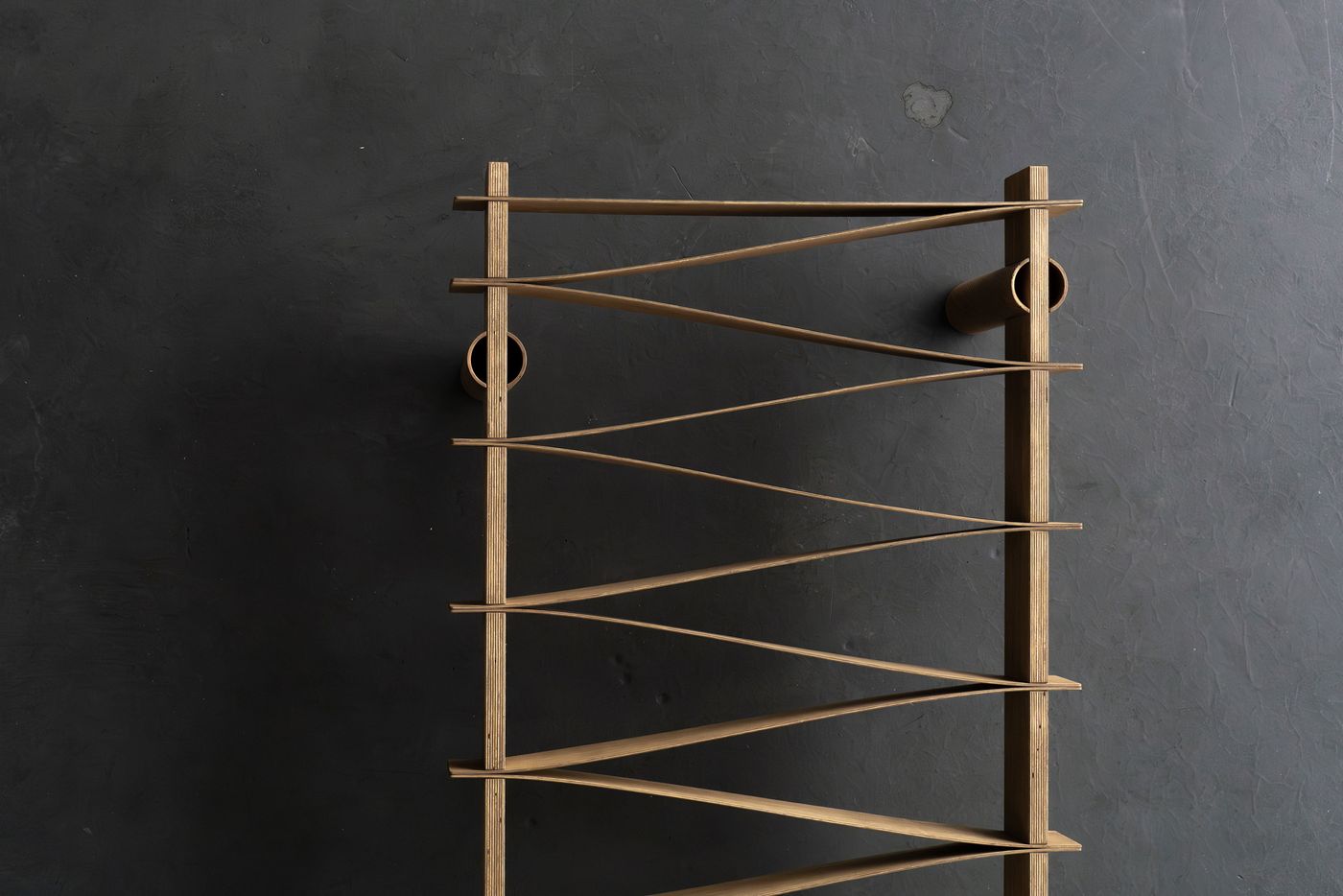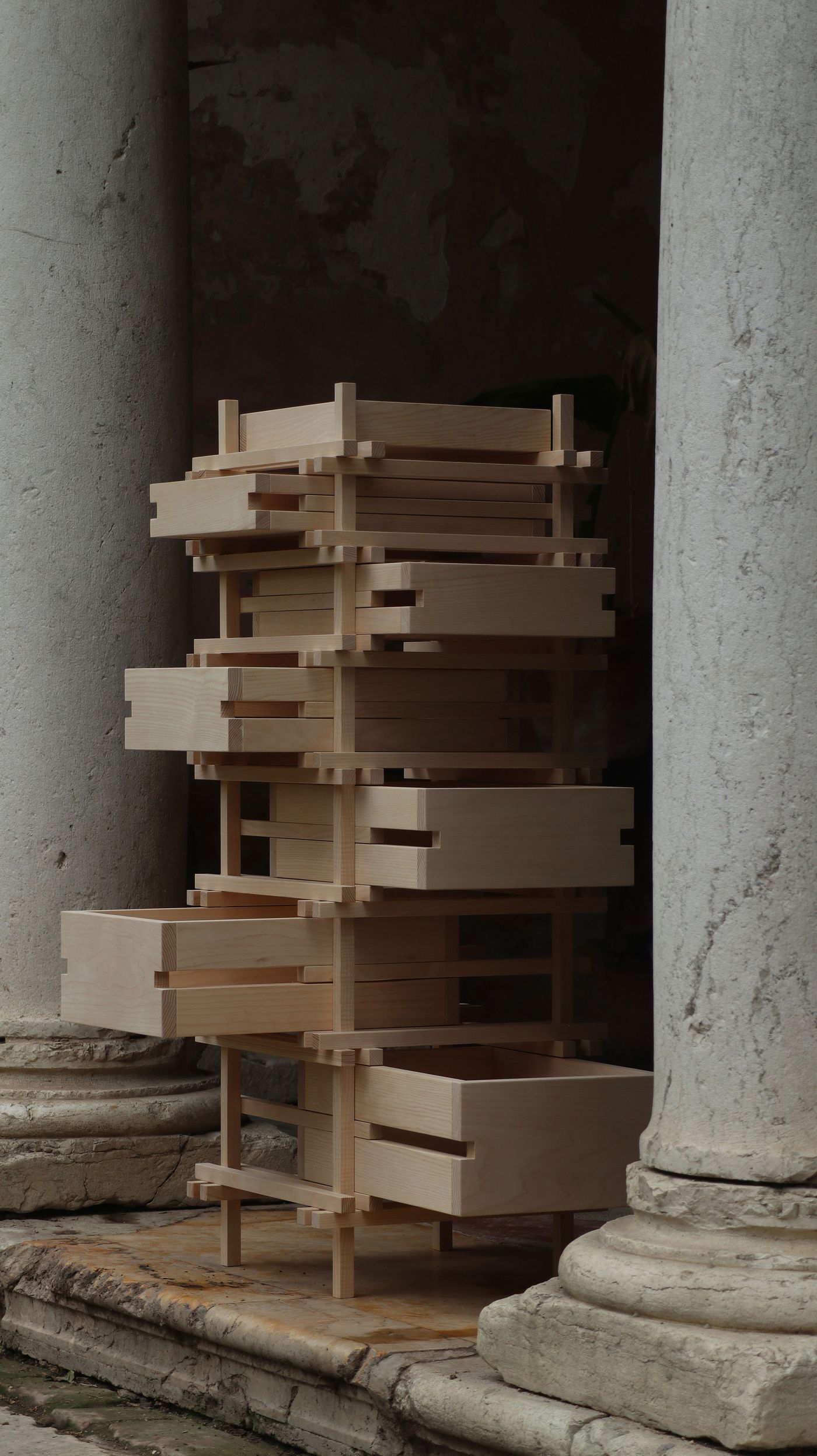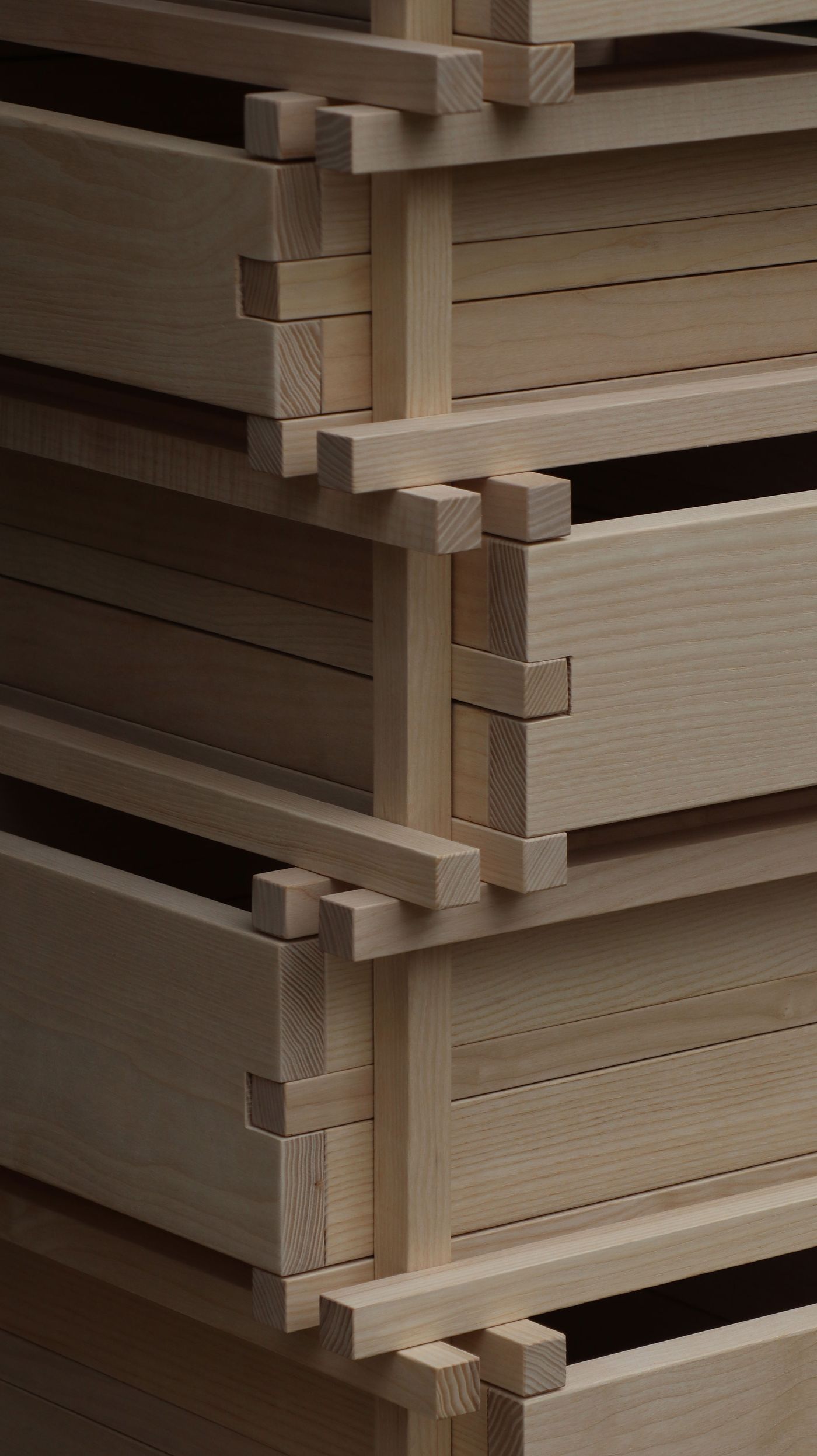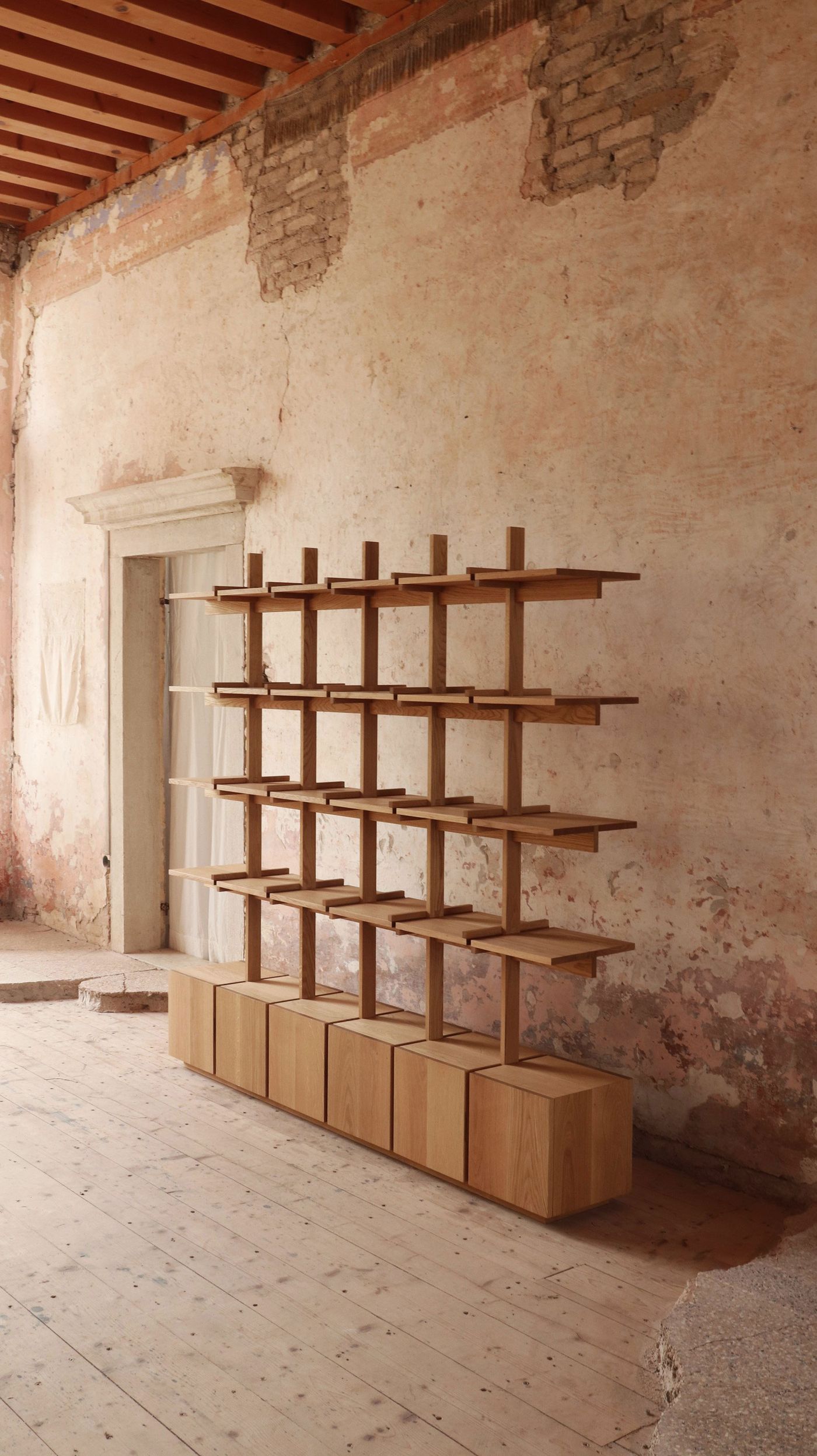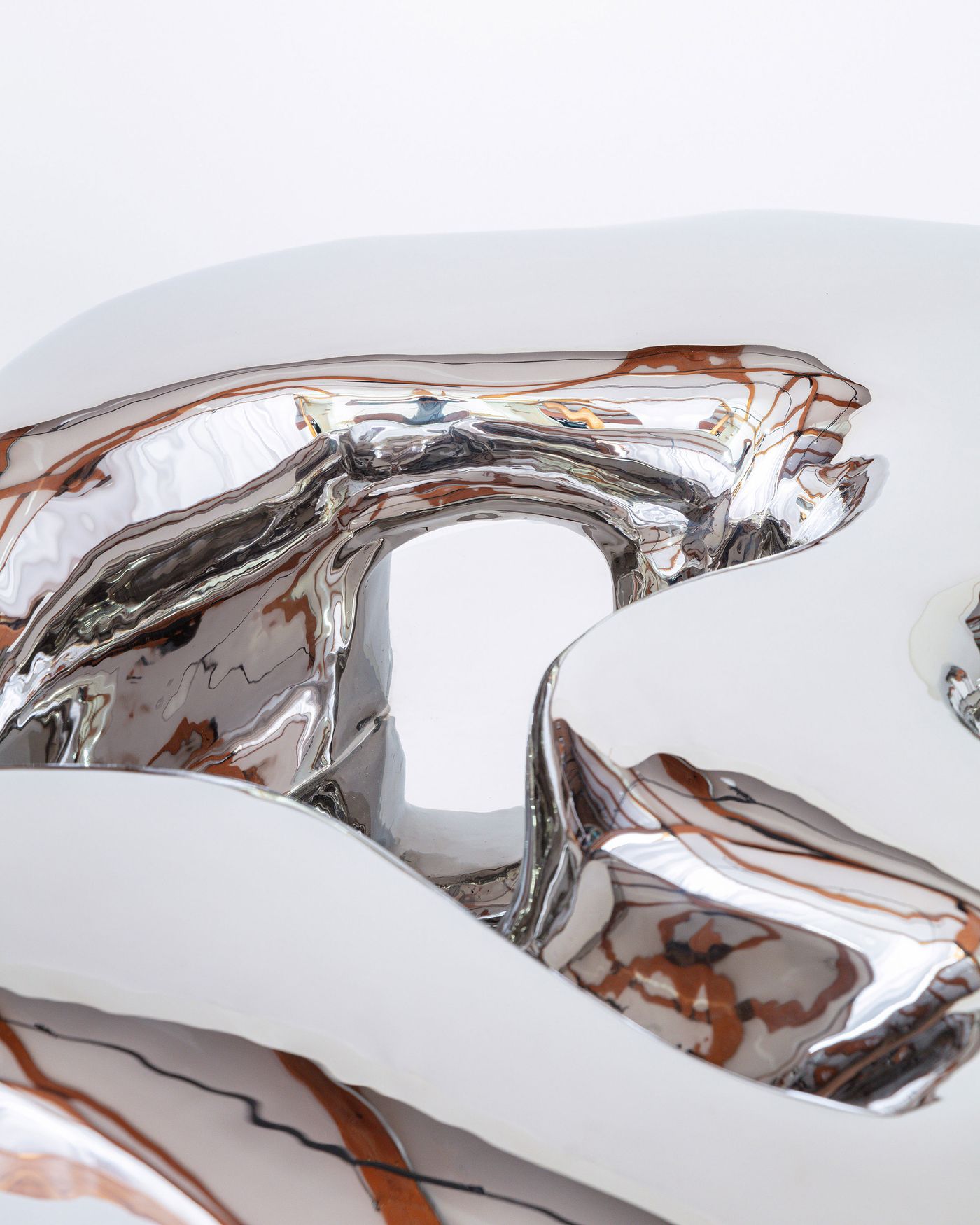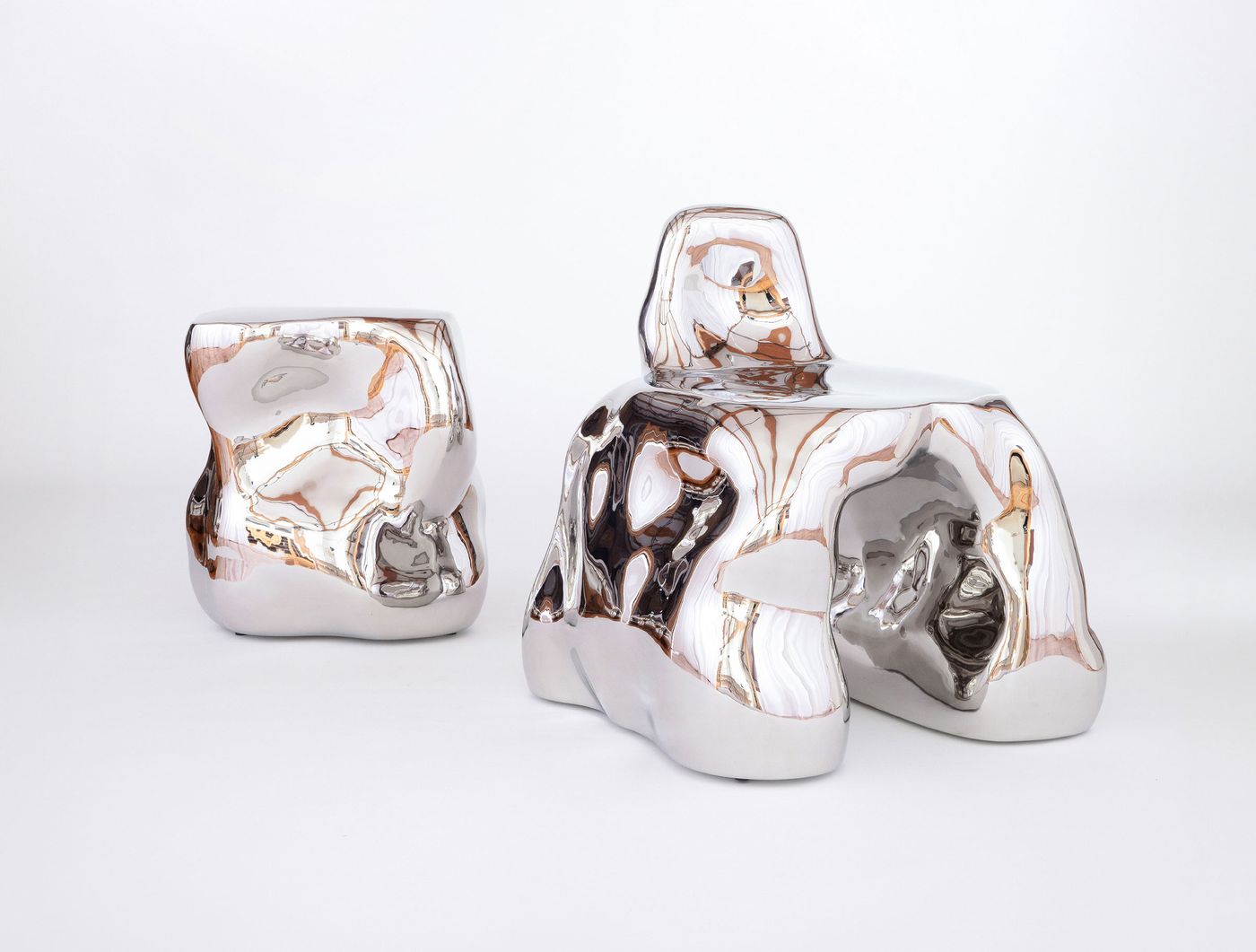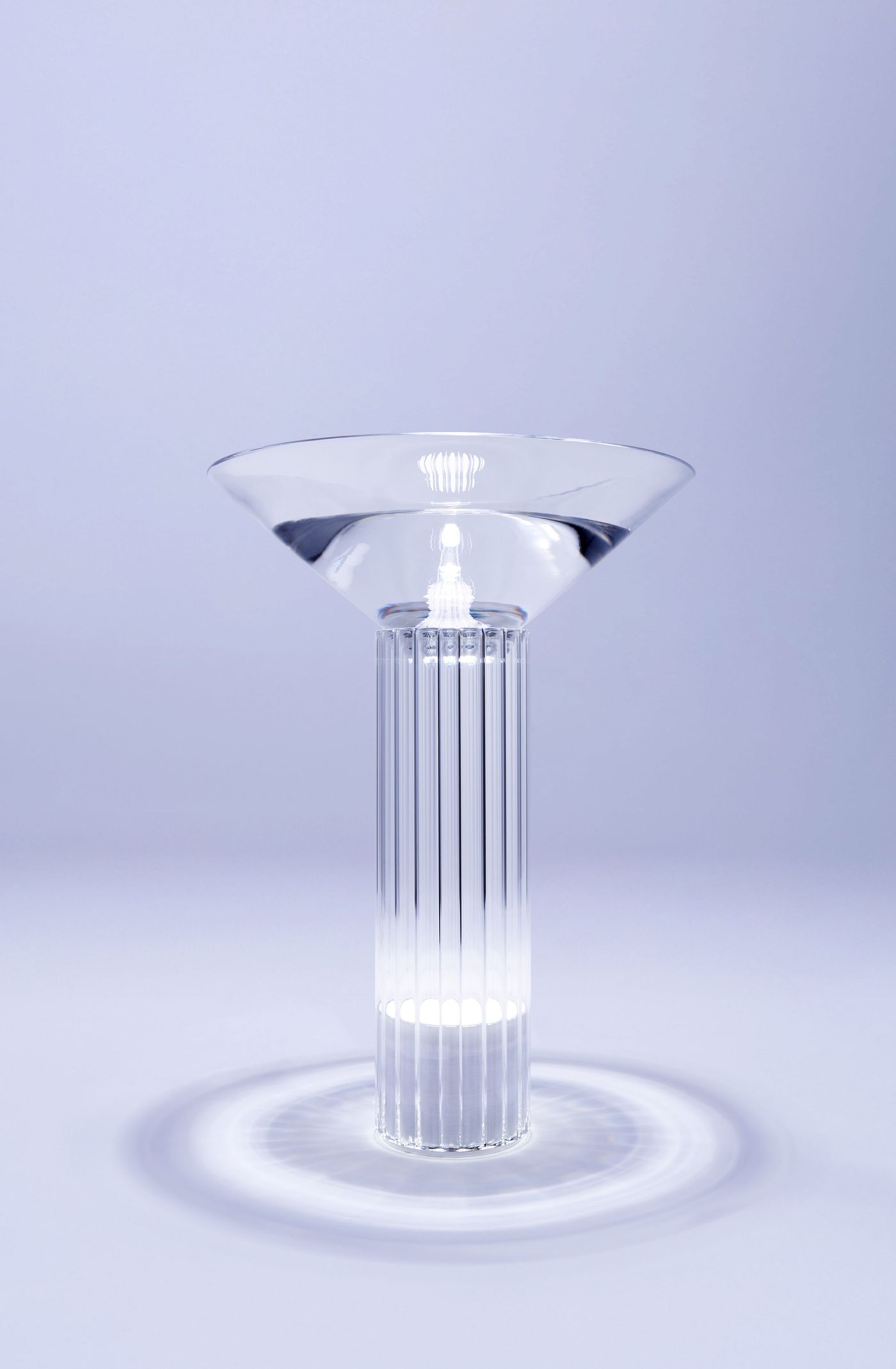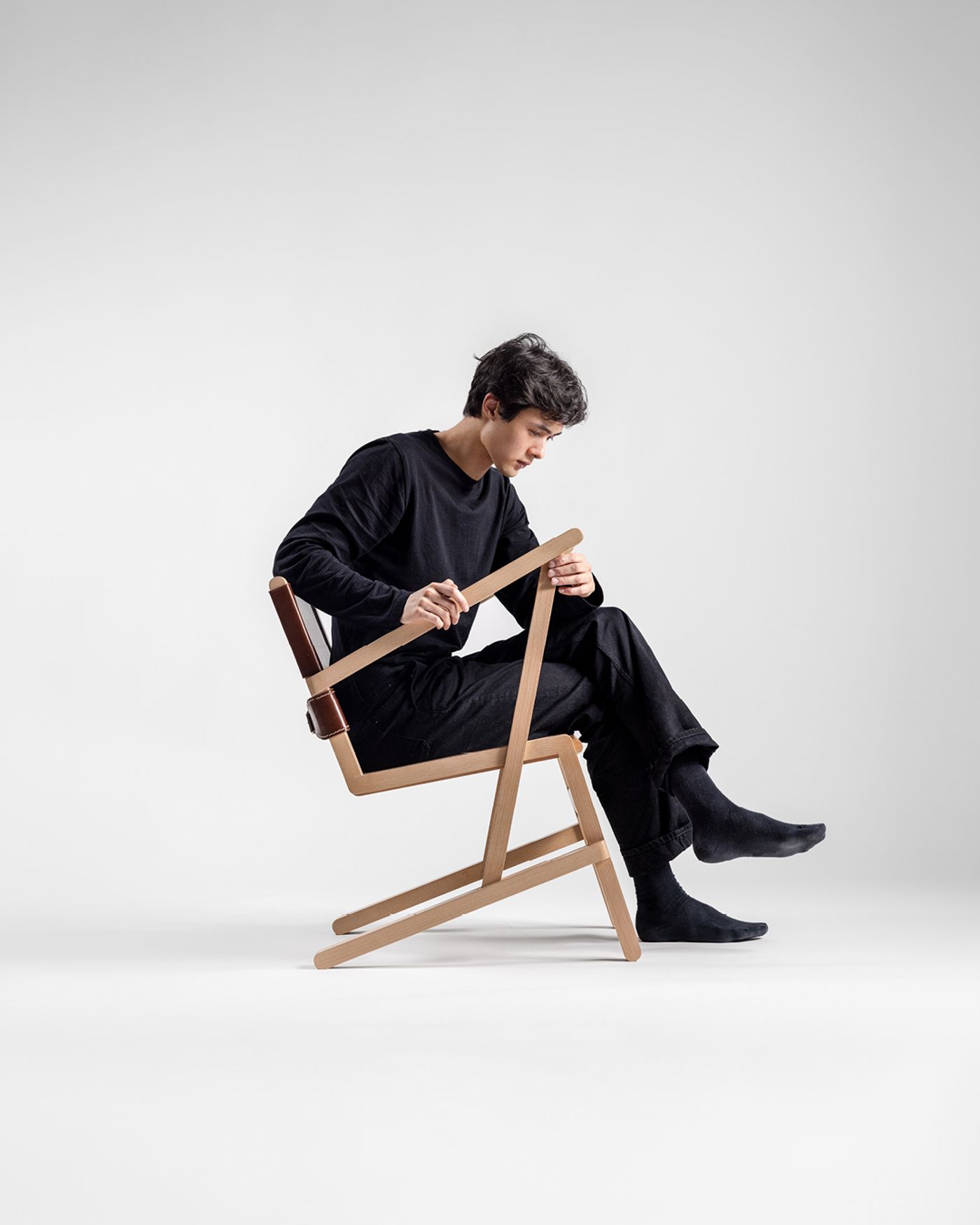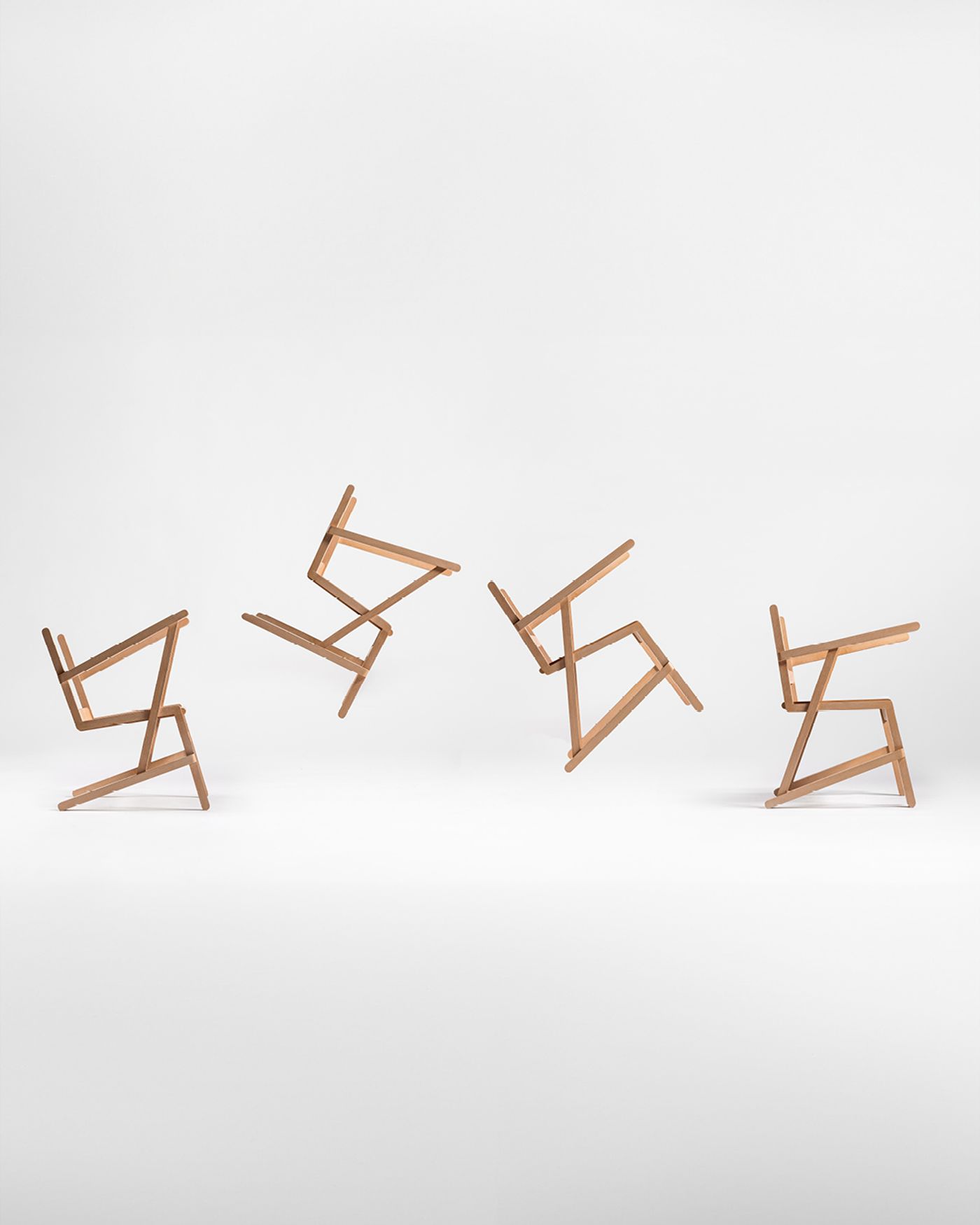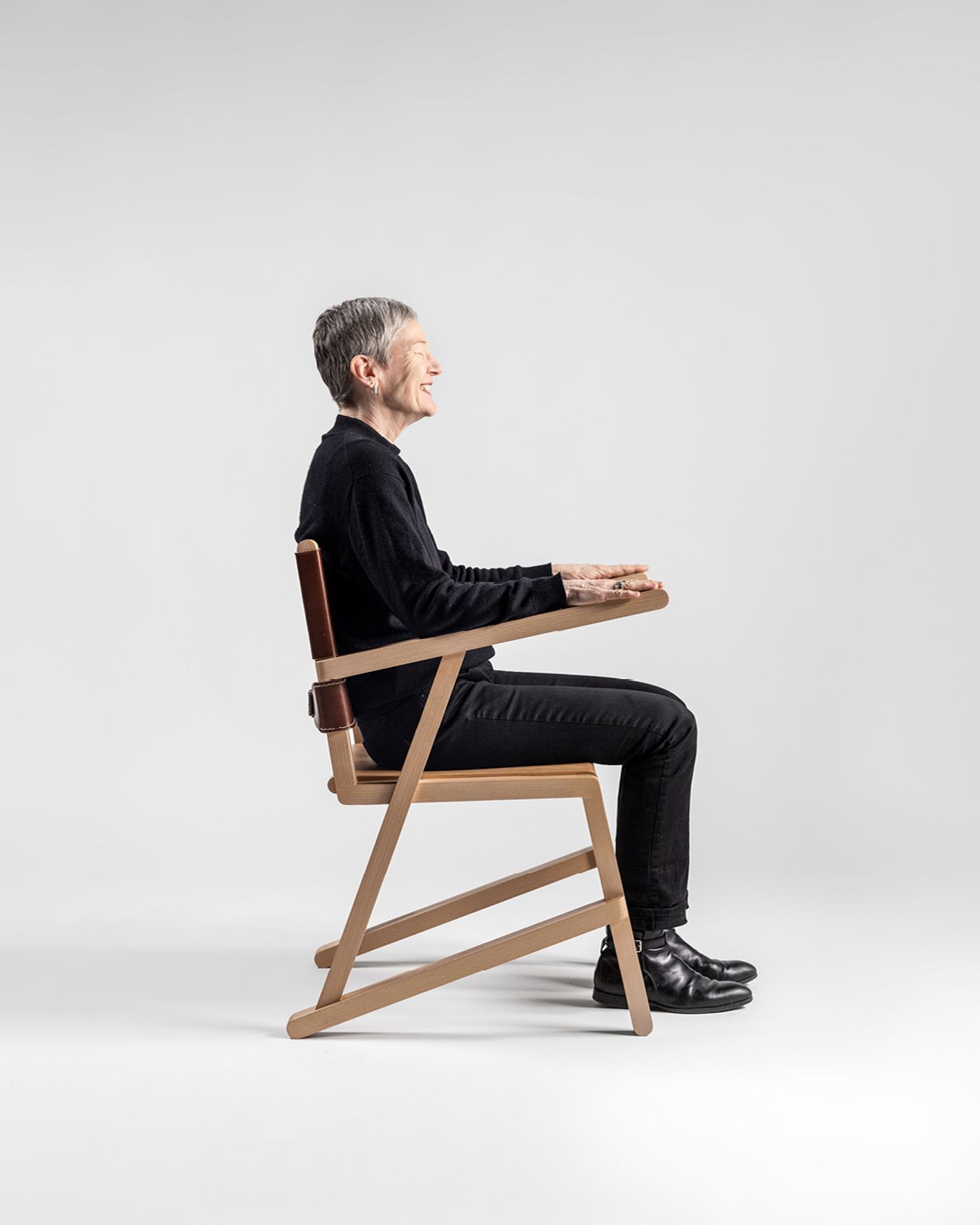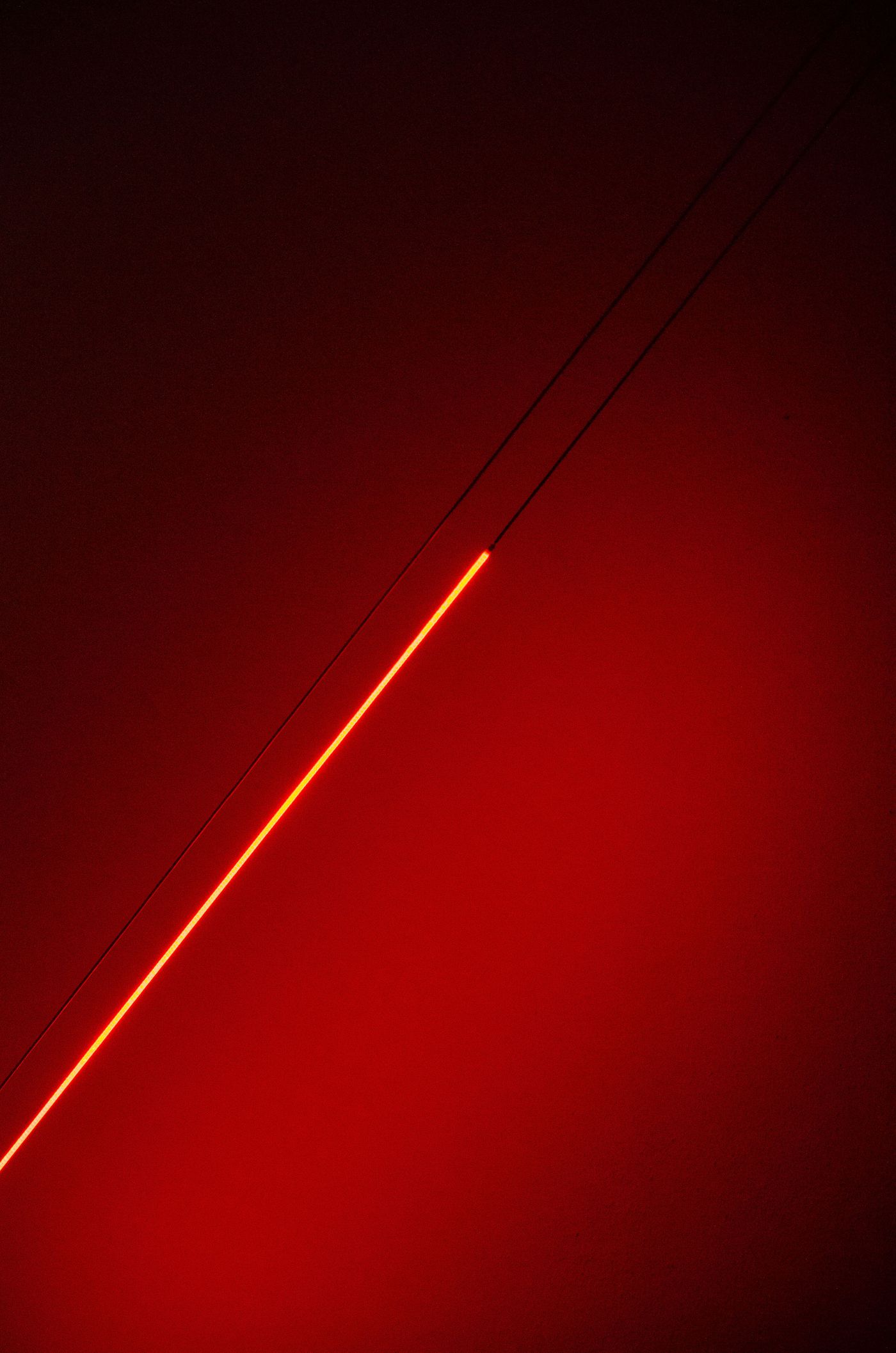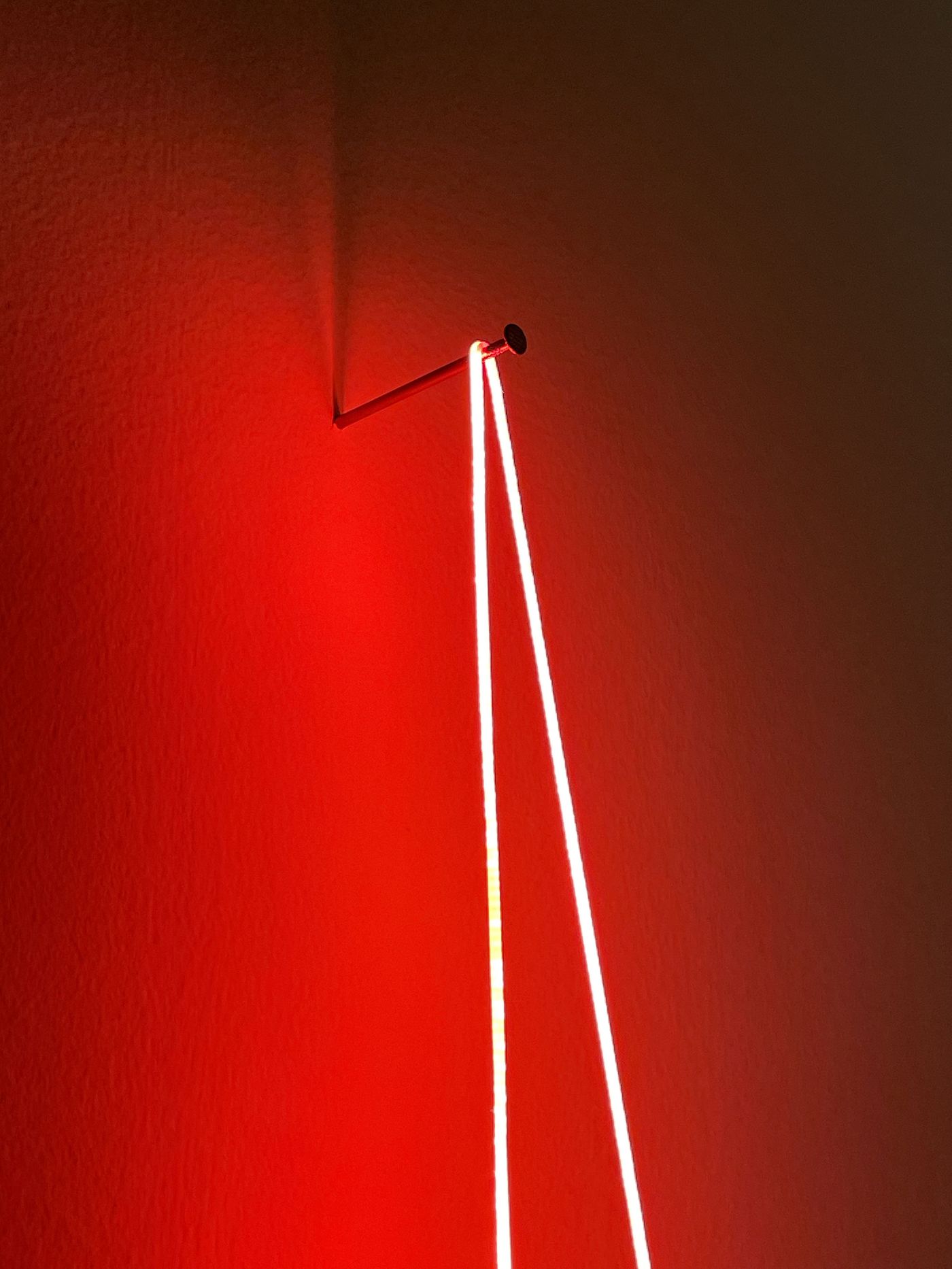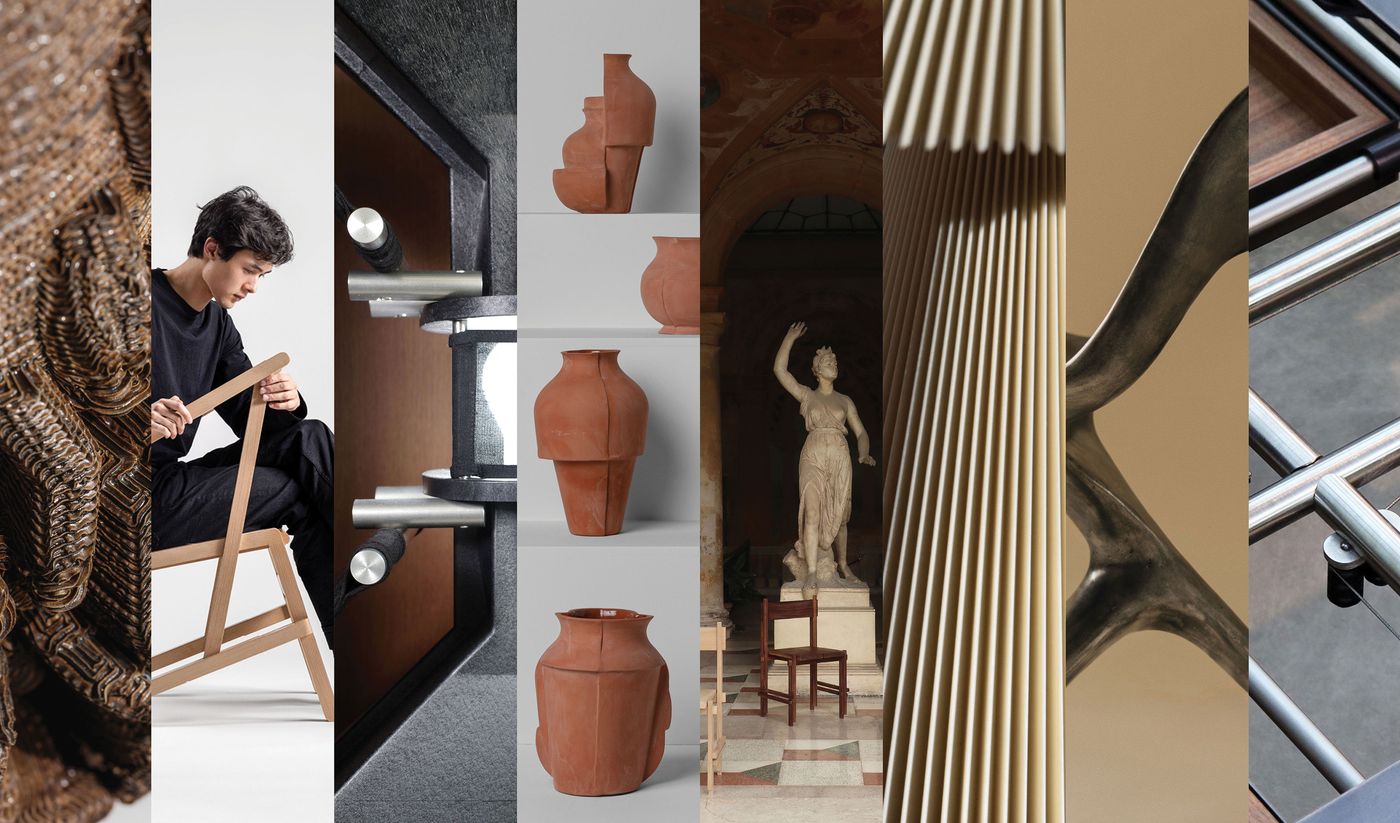
Crafting Tomorrow: Yatzer’s SaloneSatellite 2025 Highlights
Words by Costas Voyatzis
Location
Milan, Italy
Crafting Tomorrow: Yatzer’s SaloneSatellite 2025 Highlights
Words by Costas Voyatzis
Milan, Italy
Milan, Italy
Location
When it comes to Milan Design Week, we have to confess that exploring the plethora of installations scattered across the city is often more enthralling than perusing the endless aisles of furniture at Rho Fiera Milano—with one notable exception: SaloneSatellite, the youthful, forward-looking offshoot of Salone del Mobile.Milano dedicated to spotlighting emerging designers under the age of 35. The brainchild of Marva Griffin Wilshire, since its inception in 1998, the exhibition has served as a kind of talent incubator—part gallery, part launchpad—where new voices in design can test-drive their ideas before an international audience of industry heavyweights. The emphasis leans more toward fresh thinking than polished product lines, often spotlighting materials, technologies, and social concerns that quietly shape the next chapter of design itself.
Now in its 26th edition, this year’s showcase did not disappoint. Titled New Craftsmanship: A New World, it explored how artisanal know-how can become a driver for innovation, with 145 designers blending heritage and contemporary vision in ways that were both creative and thought-provoking.
Read on to discover our highlights.

Ugly Cup 3D-printed stoneware vase by Jan Contala (cera.LAB).
SaloneSatellite 2025, Milan. Photo © David Kratzer.
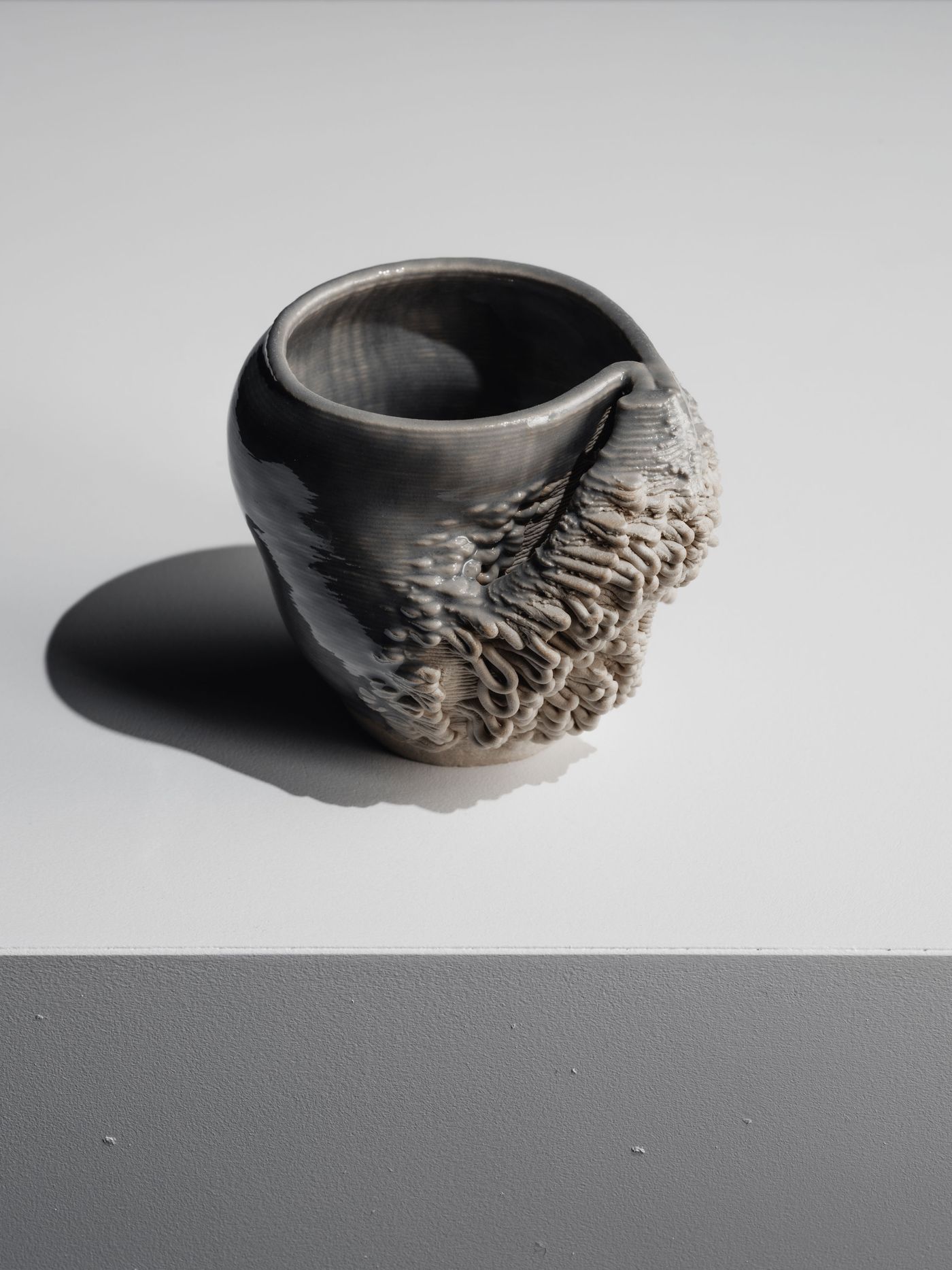
Ugly Cup 3D-printed stoneware vase by Jan Contala (cera.LAB).
SaloneSatellite 2025, Milan. Photo © David Kratzer.
Seamlessly fusing 3D printing technology with traditional ceramic craftsmanship, Austrian collective cera.LAB artfully encapsulated this year’s theme. Founded by German architectural designer Jan Contala, the Innsbruck-based studio translates age-old techniques into digital processes to explore form, texture, and sustainability without compromising any material integrity. From cups and vases to lamps and chairs, their work exemplifies a new kind of “digital craft,” where complex organic forms and intricate surface articulations become possible only through the precision of technology. “We digitize the craft to push design further,” Contala explains, “but it’s the return to materiality that gives our objects their soul.”
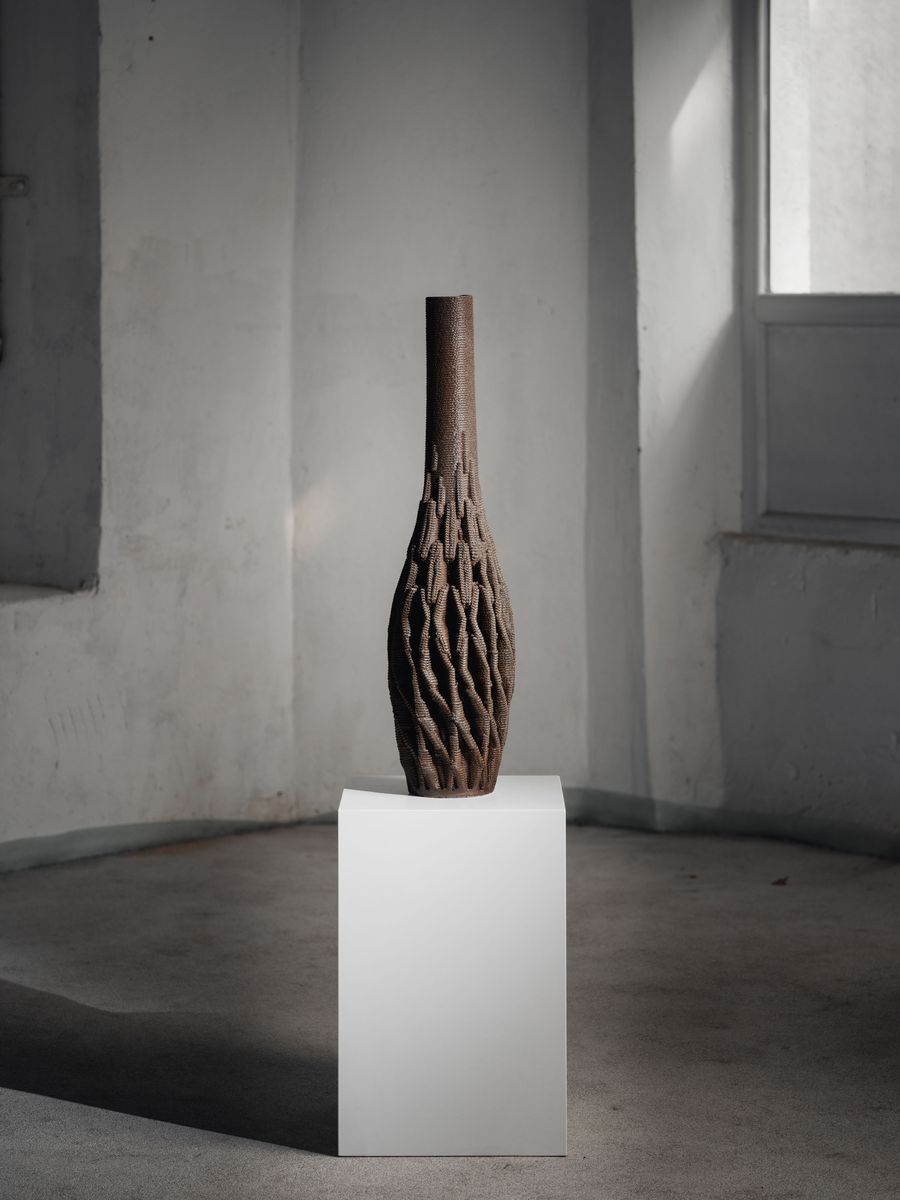
Doline 3D-printed stoneware vase by Jan Contala (cera.LAB).
SaloneSatellite 2025, Milan. Photo © David Kratzer.
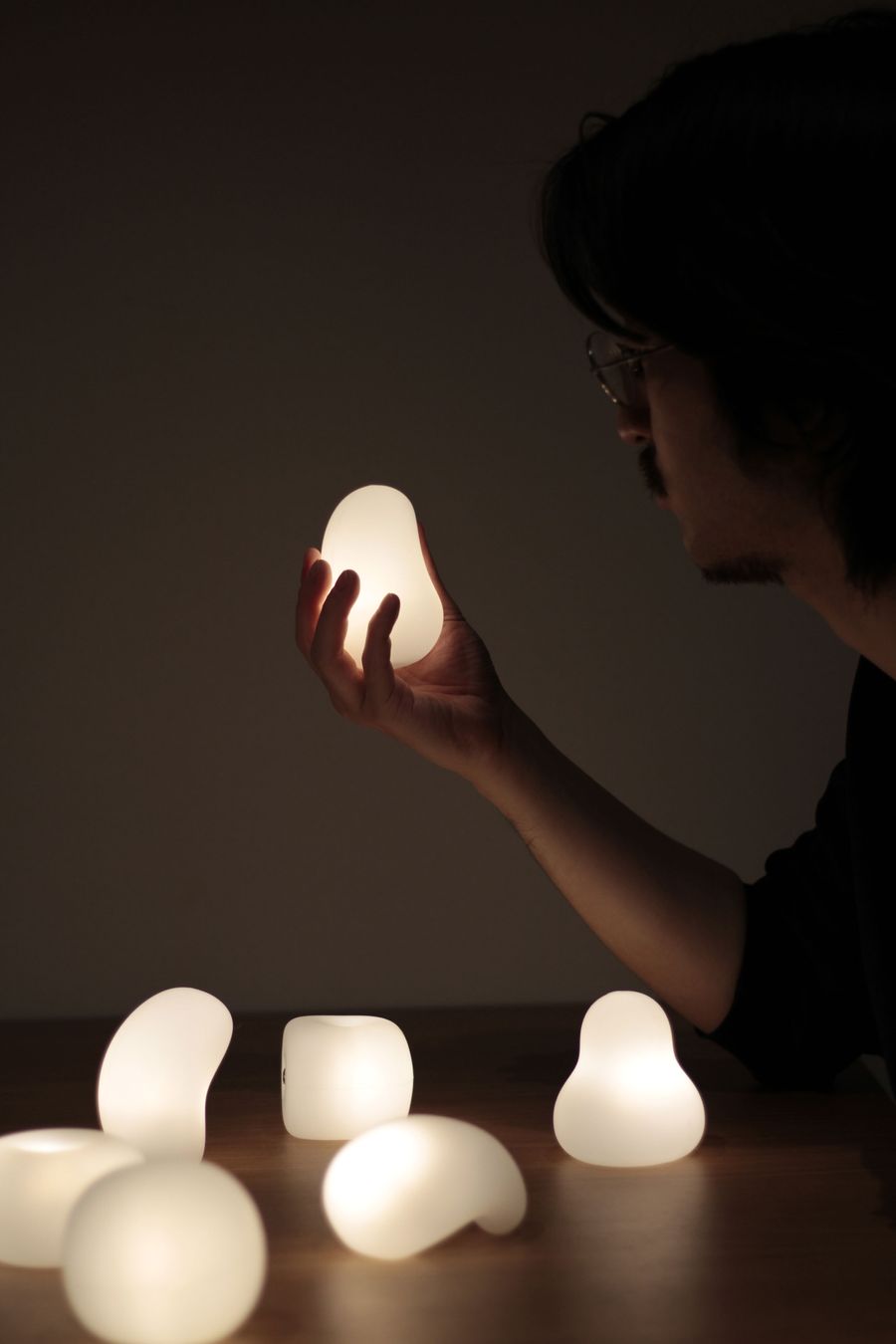
PUNINI portable lamp by Hiroki Nakayama. SaloneSatellite 2025, Milan.
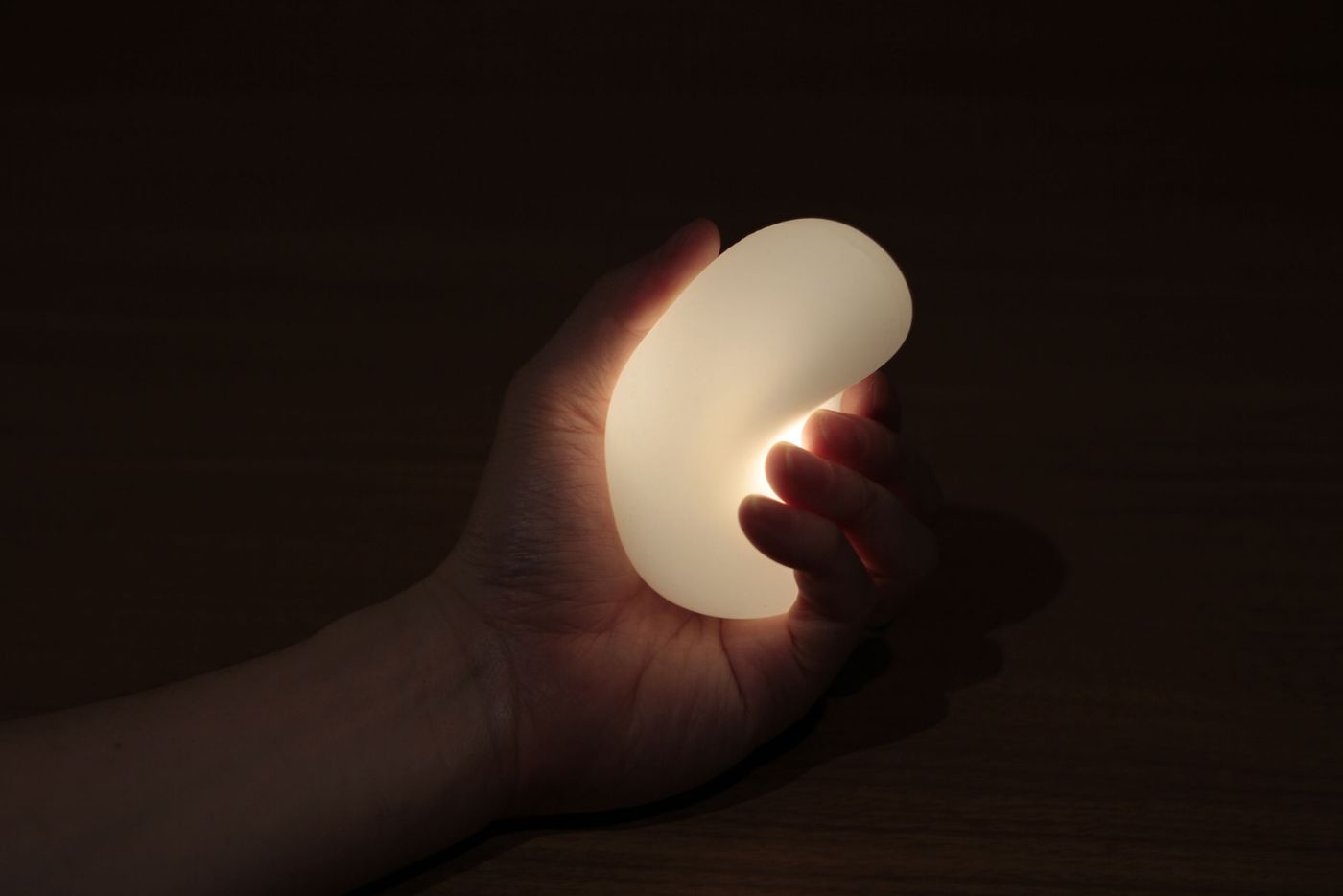
PUNINI portable lamp by Hiroki Nakayama. SaloneSatellite 2025, Milan.

Denny Candotto, SaloneSatellite 2025, Milan.
Italian designer Denny Candotto unveiled three projects which, while distinct in form, material, and reference, share a common soul rooted in craftsmanship. Plinto, a sculptural dumbbell rack, reimagines gym equipment through the lens of artisanal design. Pairing an elegant wooden rack with rugged stone weights, each one handcrafted by a stonecutter, it offers a more symbolic and tactile alternative to the sleek, impersonal aesthetics of conventional gym gear.
Diva, a chair inspired by high-tech and industrial architecture, exposes its metal skeleton through transparent methacrylate, making structure and engineering part of its visual language. Bruta, meanwhile, embraces brutalism in both name and design.
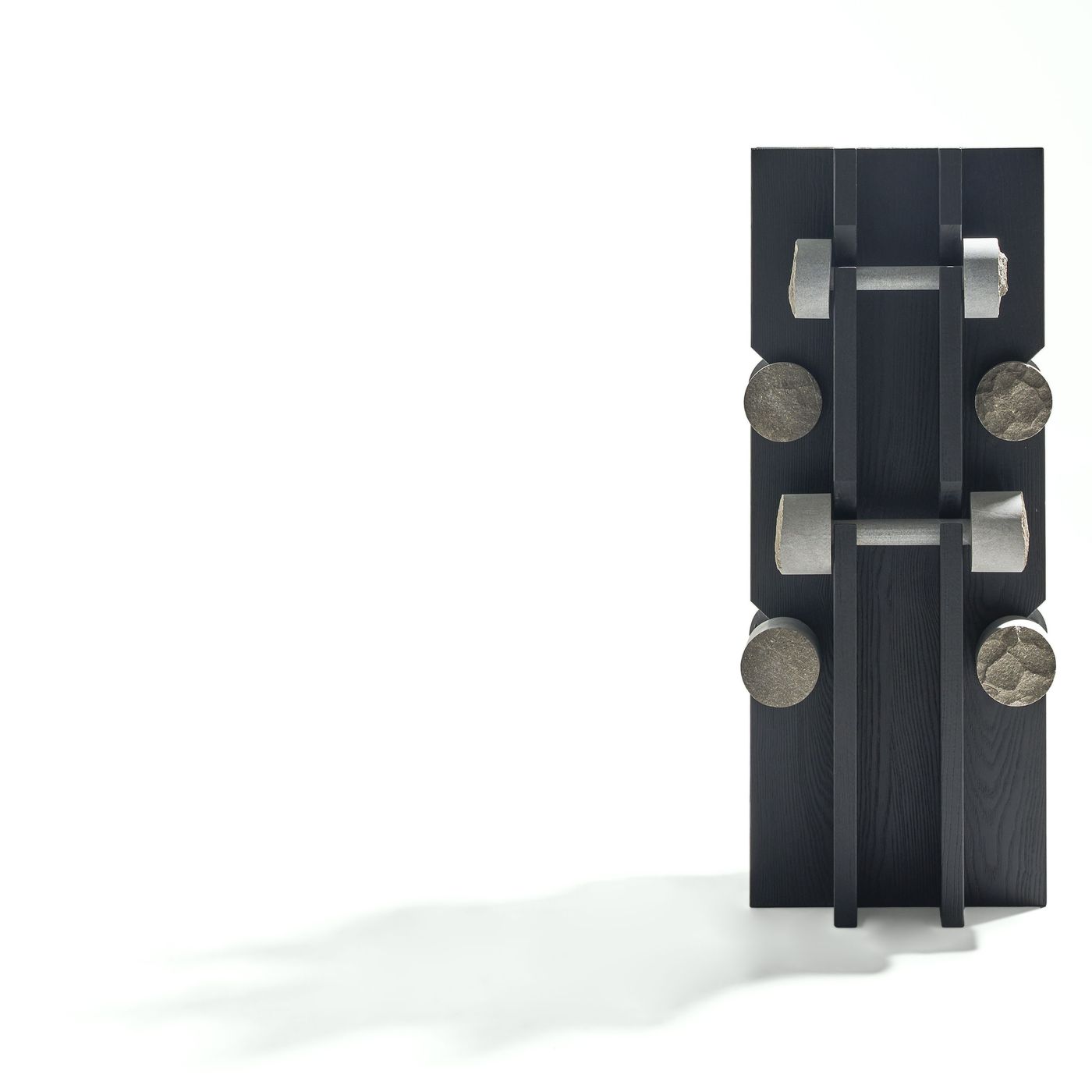
Plinto by Denny Candotto, SaloneSatellite 2025, Milan.
Candotto’s work proposes a new synthesis: not a rejection of technology, but a rebalancing. The use of the machine doesn’t replace the artisan but rather amplifies their vision. In this merging of the artificial and the crafted, we are able to take a glimpse at a future where design is defined not by sterile perfection, but by the tactile intelligence of the hand.
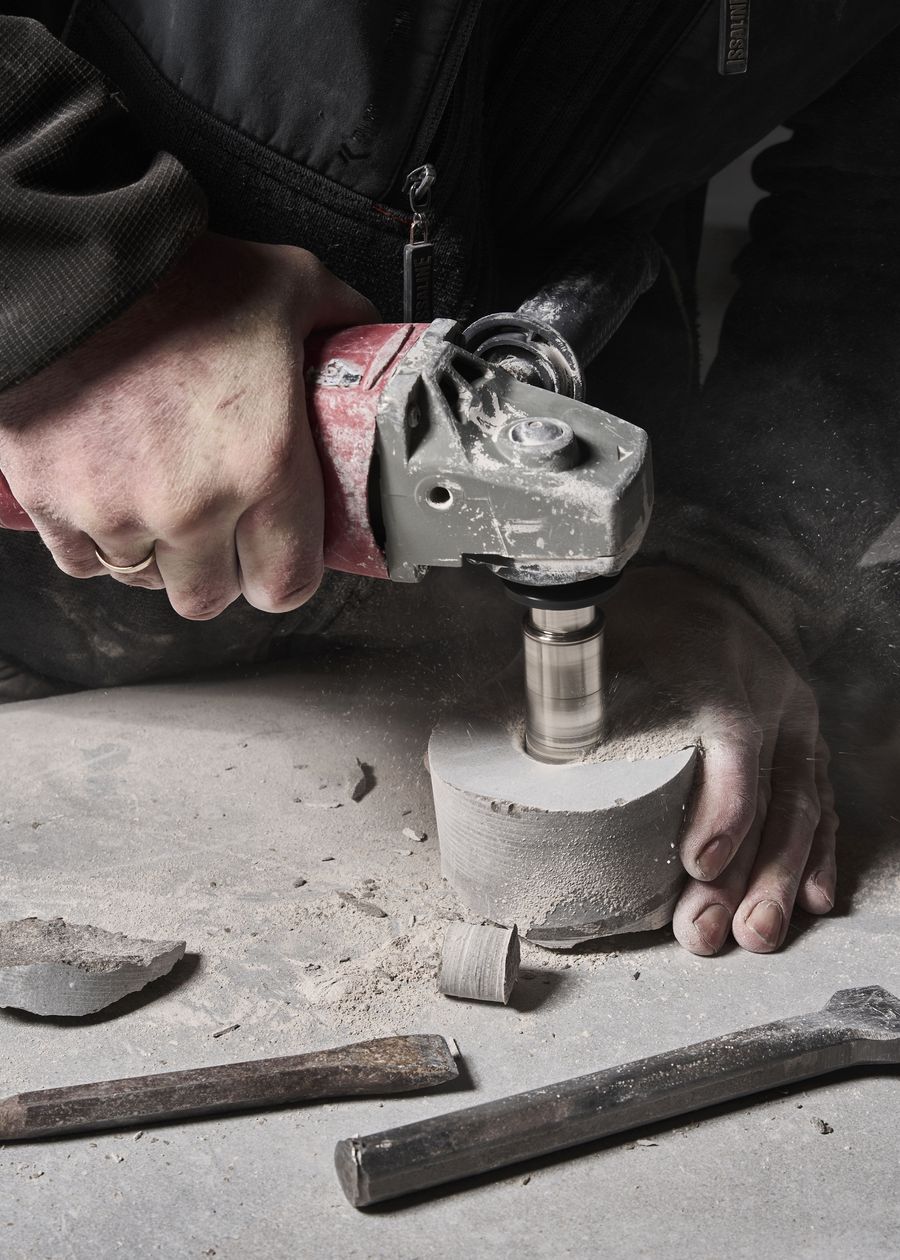
Plinto (making of) by Denny Candotto, SaloneSatellite 2025, Milan.
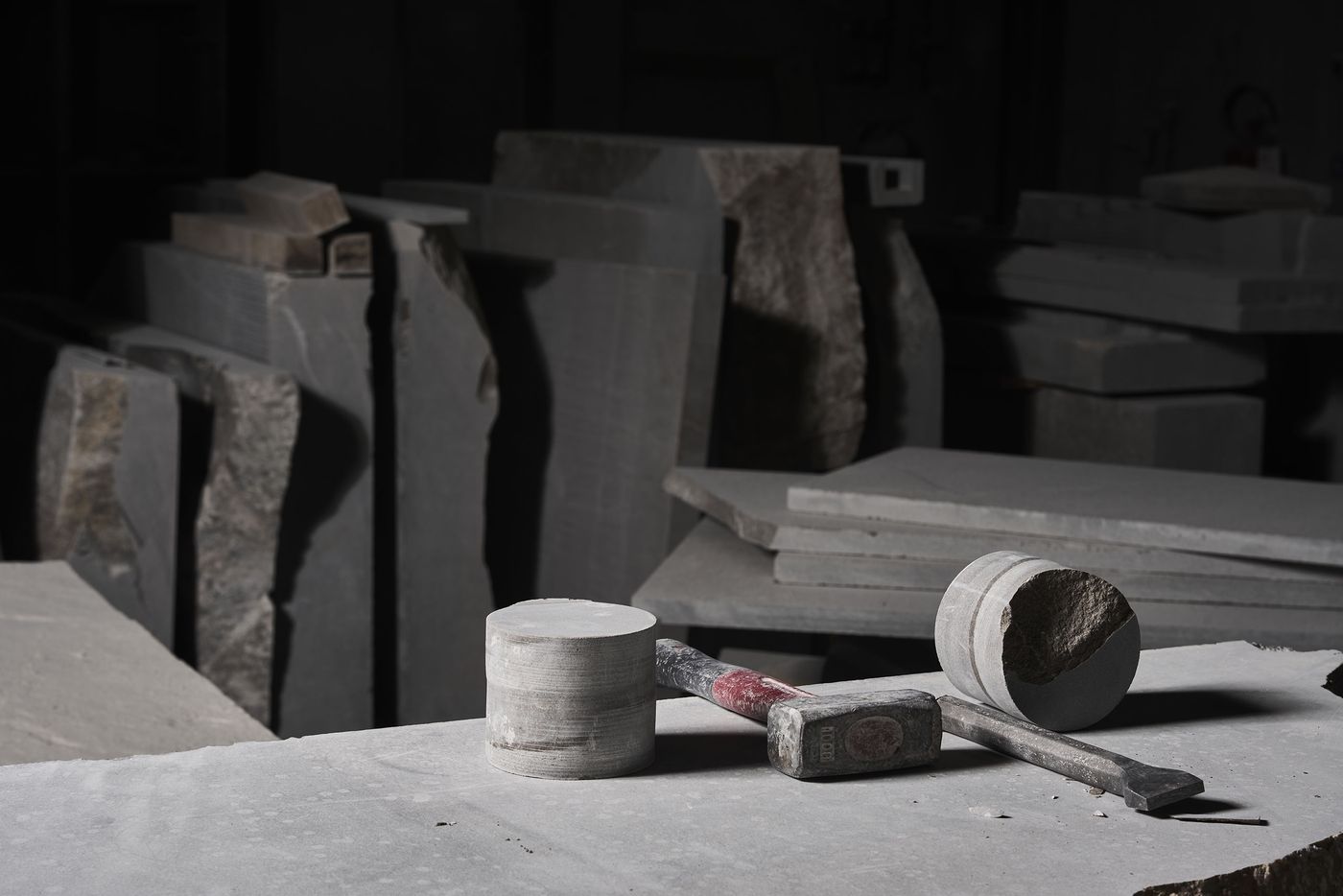
Plinto (making of) by Denny Candotto, SaloneSatellite 2025, Milan.
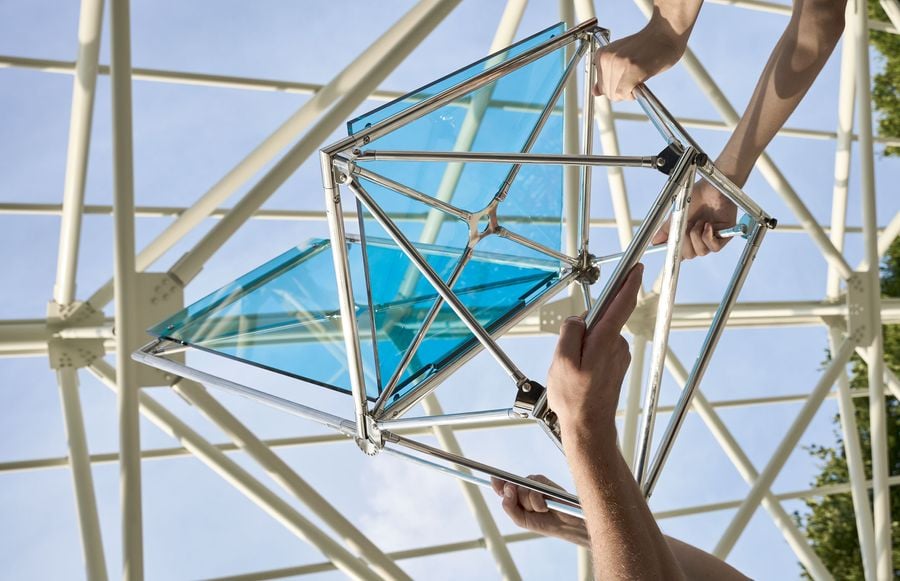
Diva by Denny Candotto, SaloneSatellite 2025, Milan.
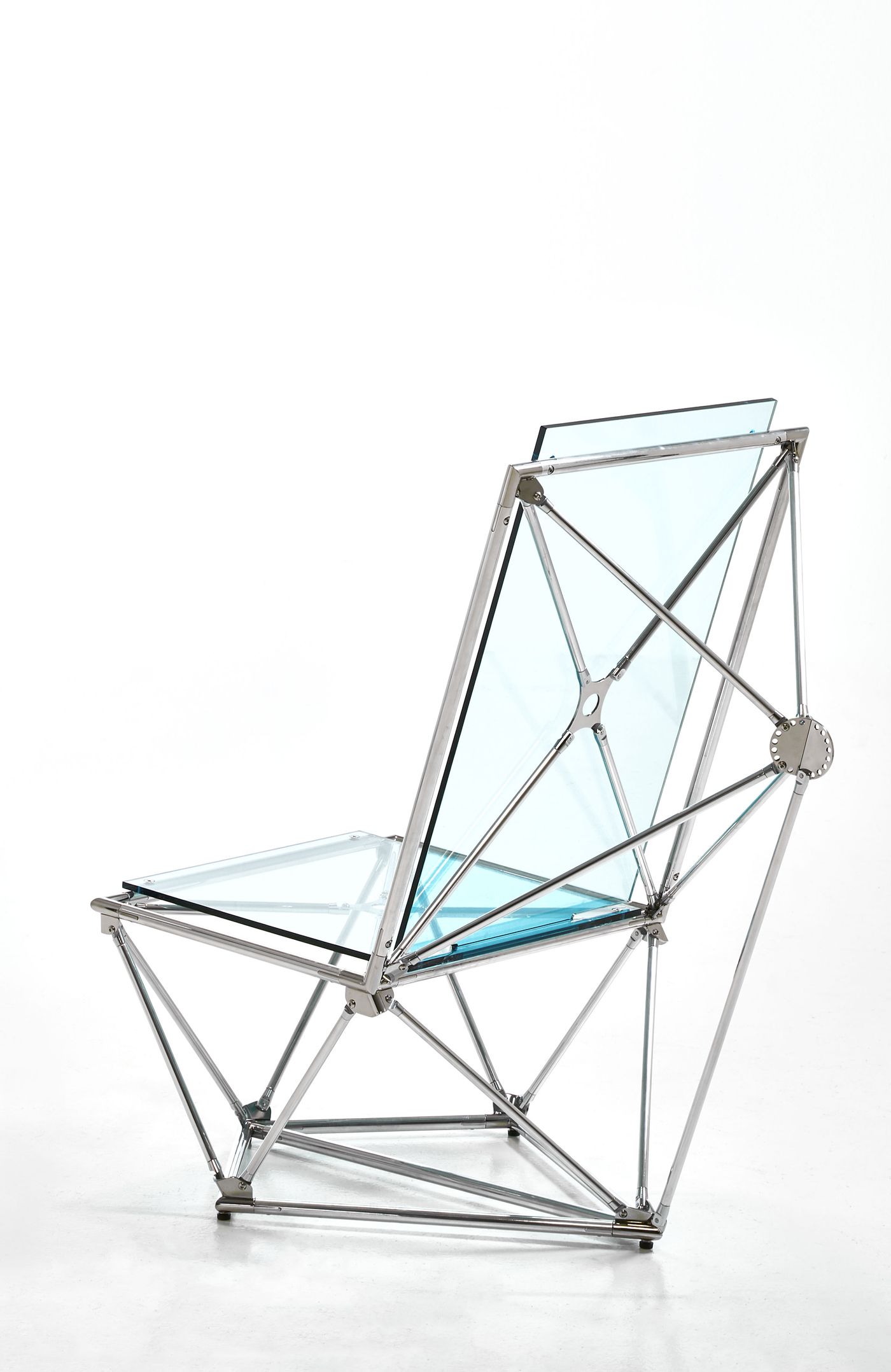
Diva by Denny Candotto, SaloneSatellite 2025, Milan.
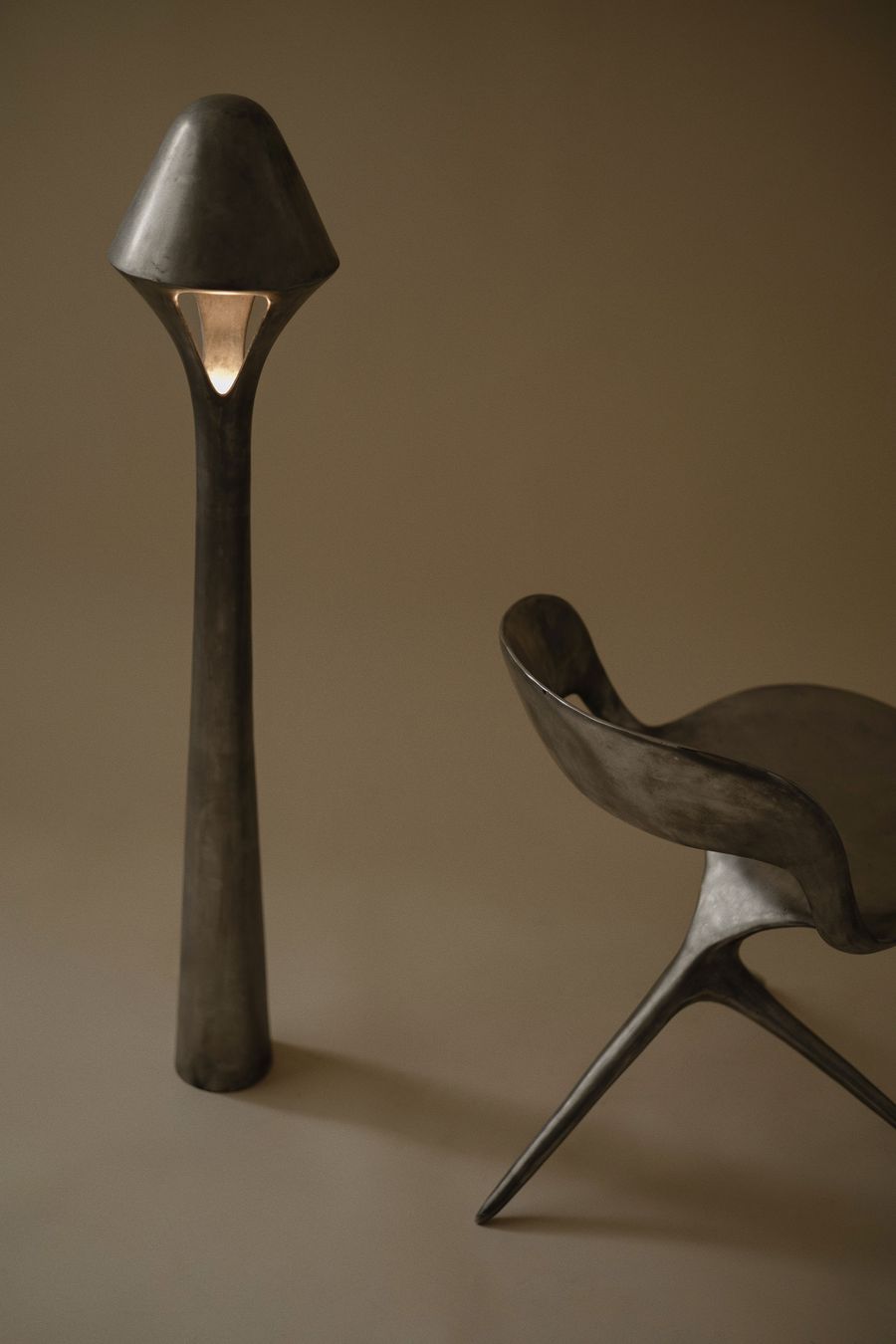
396hz Chair (Healing) And 741hz Lamp (Purity / Stability), Frequency collection by Sebastián Ángeles, SaloneSatellite 2025, Milan.
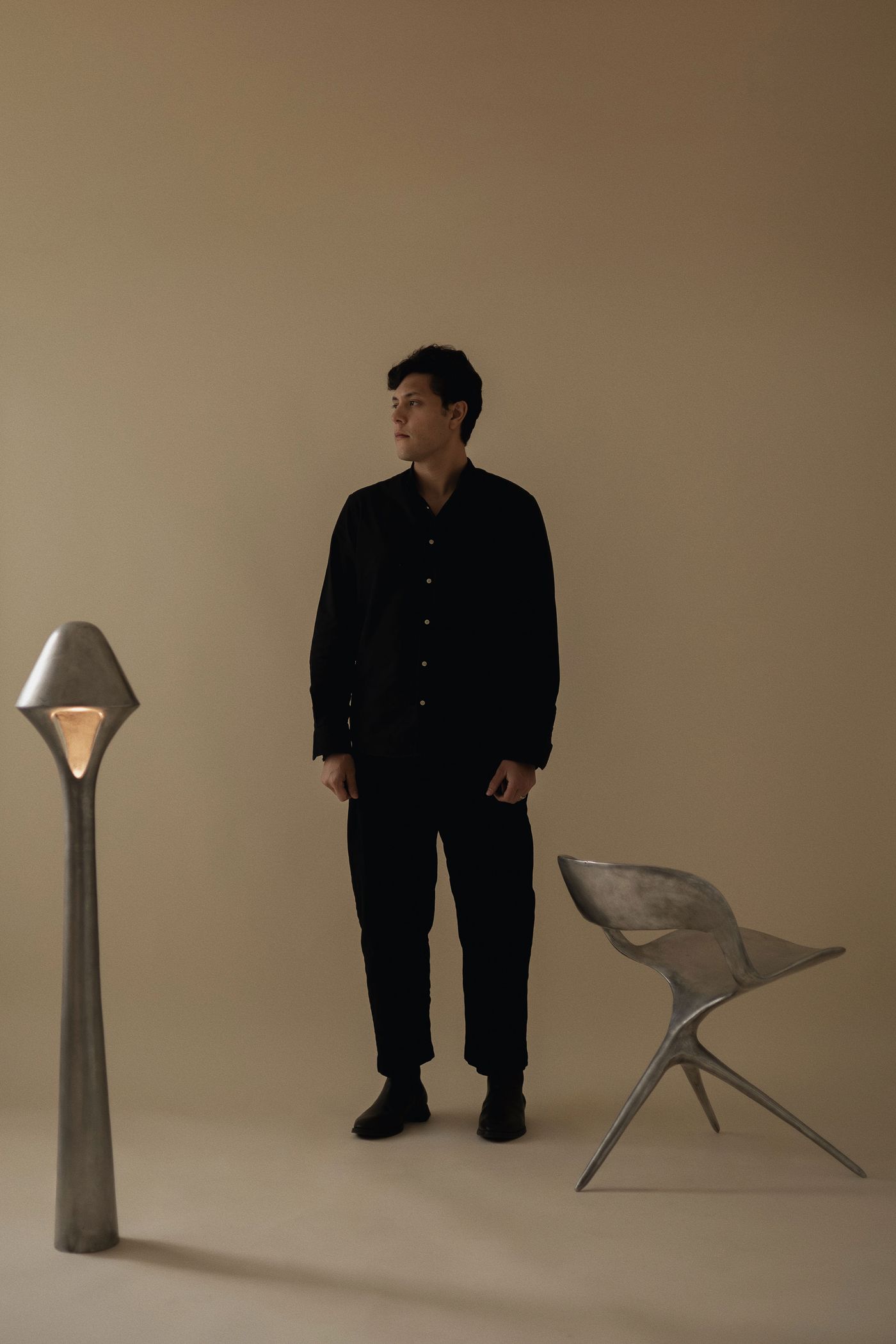
Sebastián Ángeles among his Frequency collection, SaloneSatellite 2025, Milan.
Mexican designer Sebastián Ángeles' Frequency collection translates the healing potential of sound into sculptural furniture and lighting, blending emotional resonance with tactile form. Each piece is inspired by specific sound frequencies known for their therapeutic properties, with designs shaped by cymatic patterns—in other words, visual representations of sound vibrations. Crafted in cast bronze, a material chosen for its rich texture and sonic responsiveness, the collection invites both touch and contemplation.
Taking its name from a frequency associated with harmony and spiritual balance, the 432Hz lounge chair features a three-legged base symbolizing the connection between body, mind, and spirit, and a curved, ergonomic seat that evokes the fluidity of sound waves. Another key piece, the 741Hz lamp is named after a frequency linked to purity and stability, creating a warm, meditative glow thanks to its bell-shaped shade. More than just design objects, these works are vessels of well-being, offering a multisensory experience where form, light, and sound converge in calming harmony.
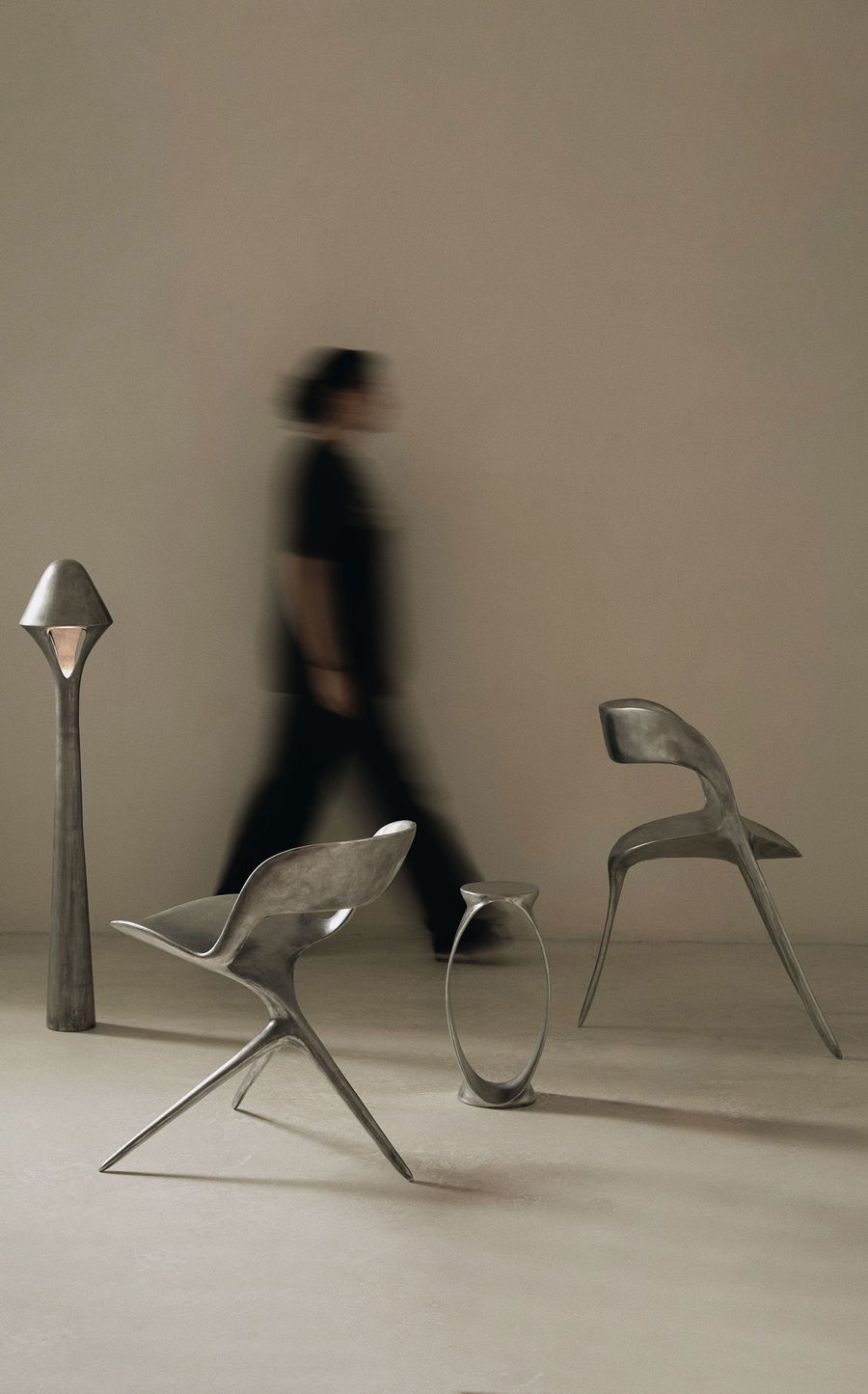
396hz Chair (Healing), 741hz Lamp (Purity / Stability) and 528hz Side Table (Love), Frequency collection by Sebastián Ángeles, SaloneSatellite 2025, Milan.
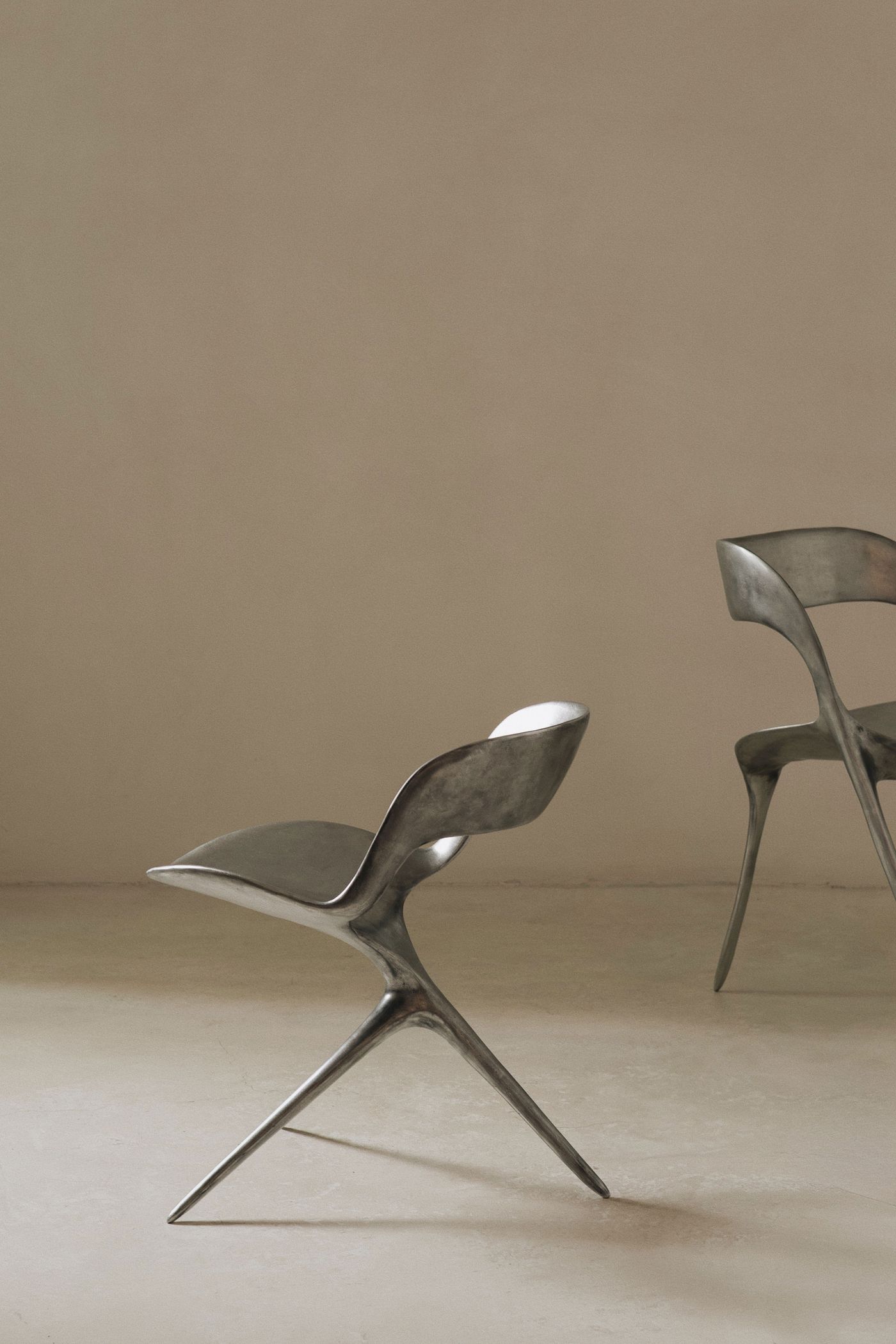
396hz Chair (Healing), Frequency collection by Sebastián Ángeles, SaloneSatellite 2025, Milan.

KUU – Husks of Light by Haruka Mitani, SaloneSatellite 2025, Milan.
With the return of the biennial Euroluce lighting exhibition this year, a slew of lighting projects ensued at SaloneSatellite. Standouts included products championing unconventional materials such as Swedish studio MANU’ Jane table lamps made from recycled PET bottles, Japanese designer Haruka Mitani’s KUU – Husks of Light series which incorporate a translucent light membrane made of 0.03-millimeter-thin washi paper (traditionally used for restoring ancient documents), and Argentine designer Santiago Orionte’s Balance series featuring handcrafted cylindrical light diffusers made through an artisanal cold-pressing process using recycled cellulose and cotton pulp paper.
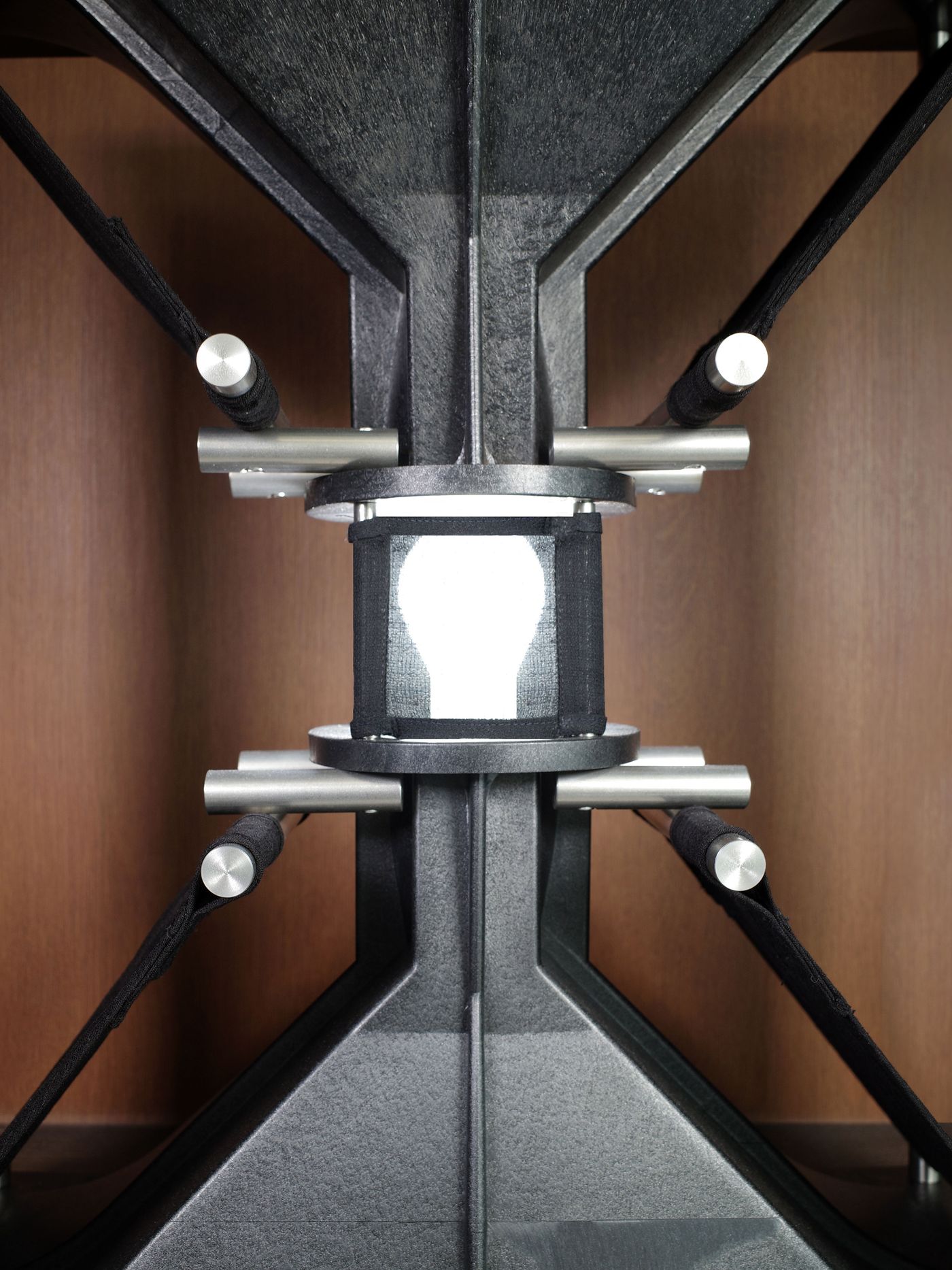
Table lamp (detail), Horn Series by Juyong Shim, SaloneSatellite 2025, Milan.

Table lamp, Horn Series by Juyong Shim, SaloneSatellite 2025, Milan.
Among the most striking examples of creative reuse at SaloneSatellite was Seoul-based designer Juyong Shim’s Horn Series, a modular furniture collection crafted from horn loudspeakers—industrial castoffs now largely obsolete. By transforming these relics into sleek, utilitarian objects—stools, tables, shelving units, lamps, and even trolleys—Shim deftly challenges conventional notions of utility and value, giving new purpose to the discarded.
Berlin-based Emma Johann is another designer who aims to upend conventional perceptions of value, having devised an innovative use of scrapyard-found materials to create unique, textured molds for glassblowing. The resulting series (ALTGLAS) of hand-blown carafes, glasses, and bowls feature unique textures, blending functionality with visual intrigue—proof that beauty can emerge from what was once discarded.
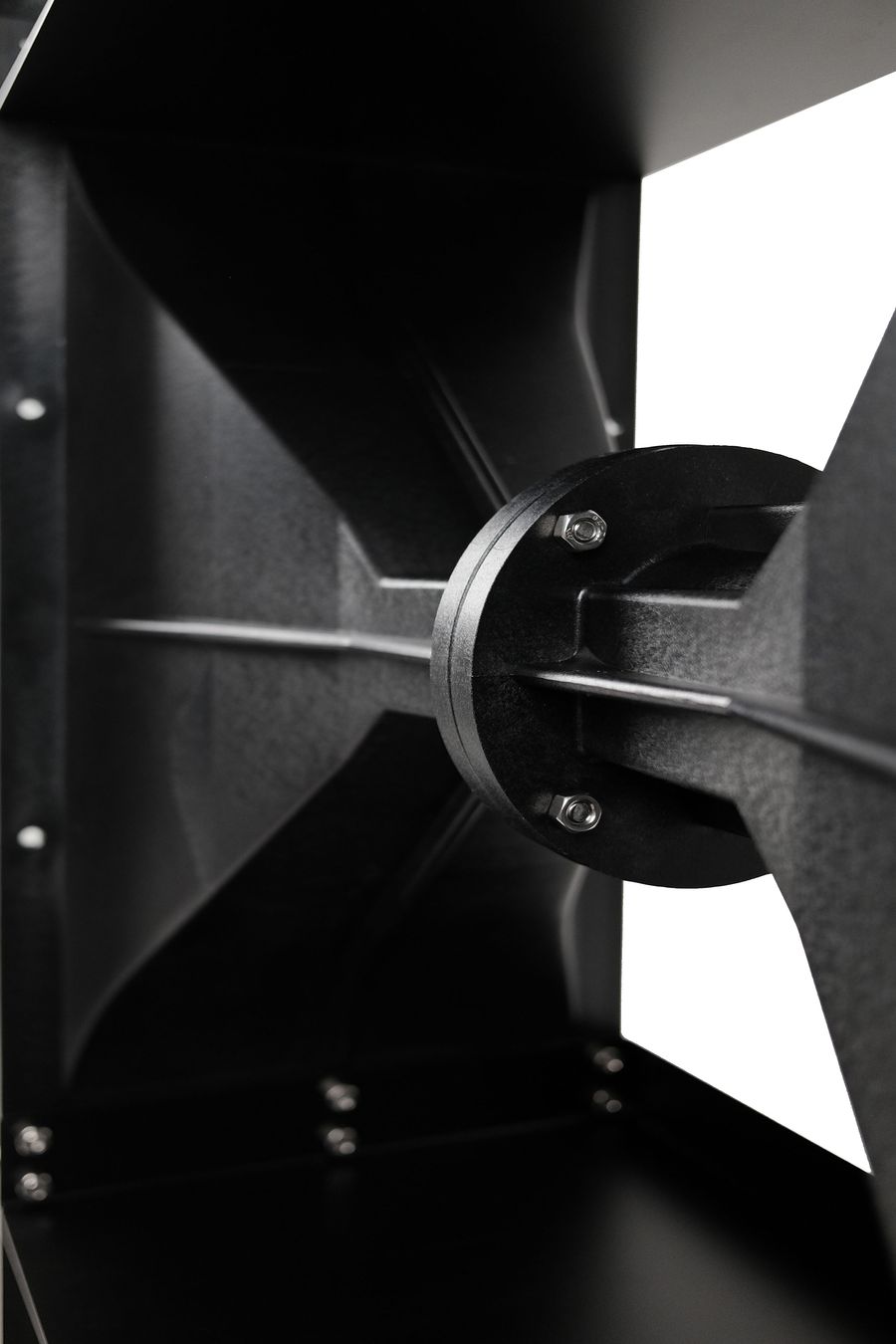
Module Shelf (detail), Horn Series by Juyong Shim, SaloneSatellite 2025, Milan.
Berin-based architect Assaf Kimmel’s Xpander Tables captivated us with their precise engineering and sculptural fluidity. Doubling as kinetic sculptures, these dynamic pieces adapt effortlessly to shifting needs and spaces, challenging our assumptions about what a table can be. The rectangular version expands in two directions and incorporates a sliding ottoman, while the round model opens in three, revealing hidden compartments beneath its surface. Crafted from stainless steel and aluminium, with customizable tops ranging from wood to stone and even concrete, the tables blur the line between furniture and machine.
Xpander Tables by Assaf Kimmel Studio, SaloneSatellite 2025, Milan.
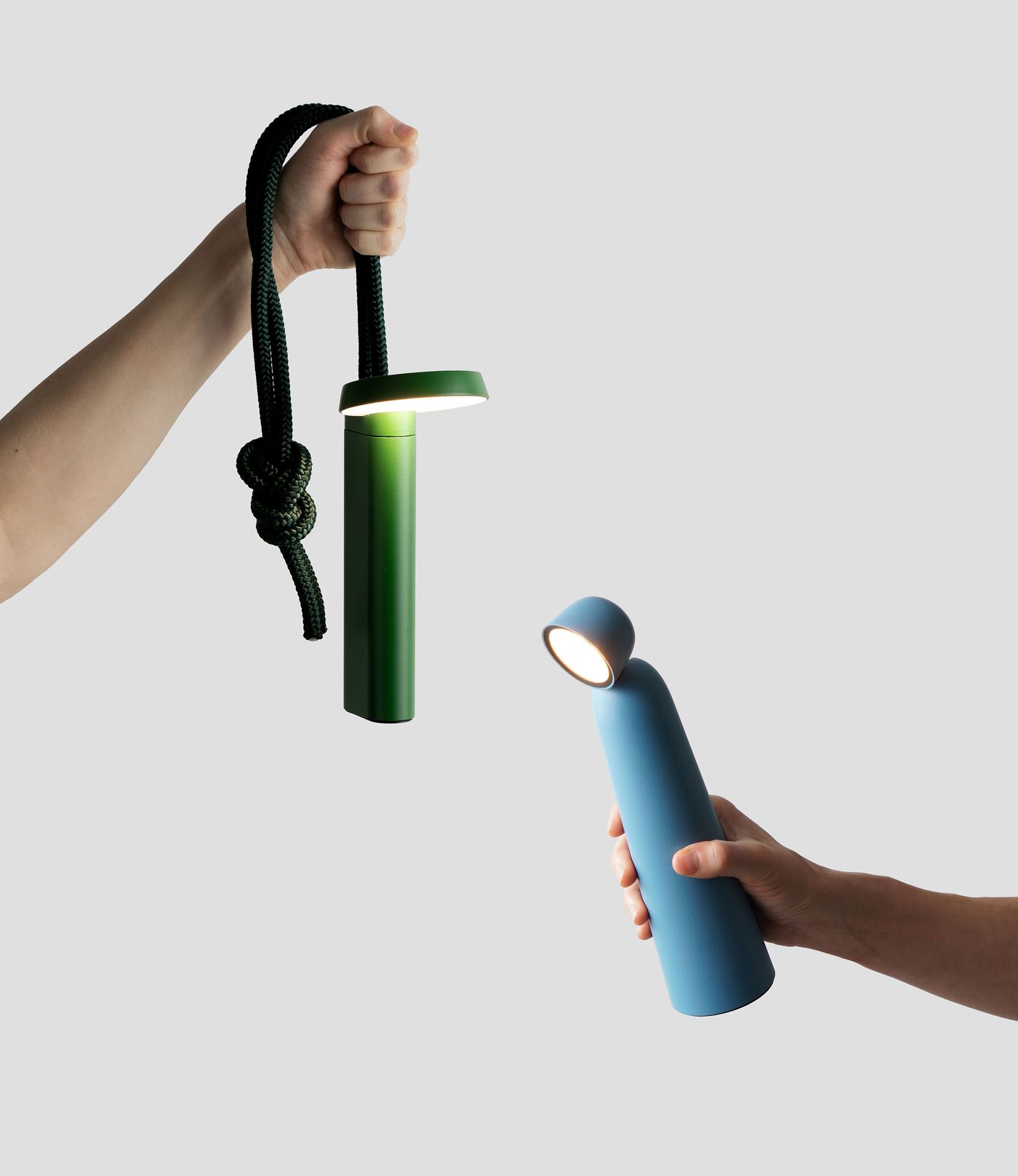
EXTRUDE (left) and AMI (right) portable lamps by Jos van Roosmalen, SaloneSatellite 2025, Milan.
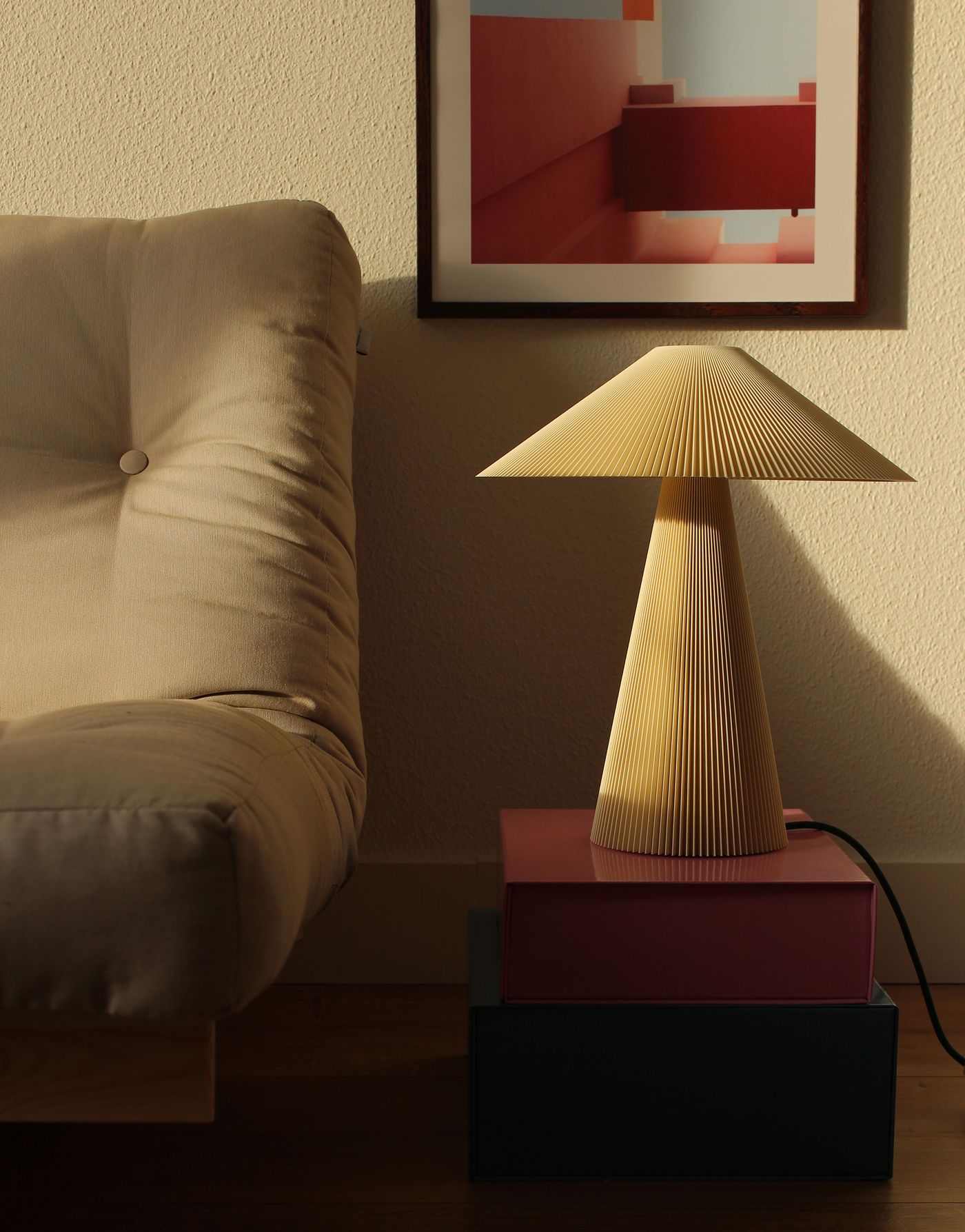
MANU Jane table lamp, crafted entirely from recycled PET bottles. SaloneSatellite 2025, Milan.
MANU's Jane table lamps, the Swedish product design studio's debut collection, brings together sustainability, craft, and emotional design. Made from recycled PET bottles, each lamp is 3D-printed over 10 hours in MANU’s Swedish micro-factory, with local production now expanding to the U.S. Rooted in the belief that objects have souls, MANU invites users to “adopt” rather than buy their products—encouraging deeper, more mindful connections. With a focus on local, on-demand production and waste-based materials, MANU champions a future where design is meaningful, joyful, and guilt-free.
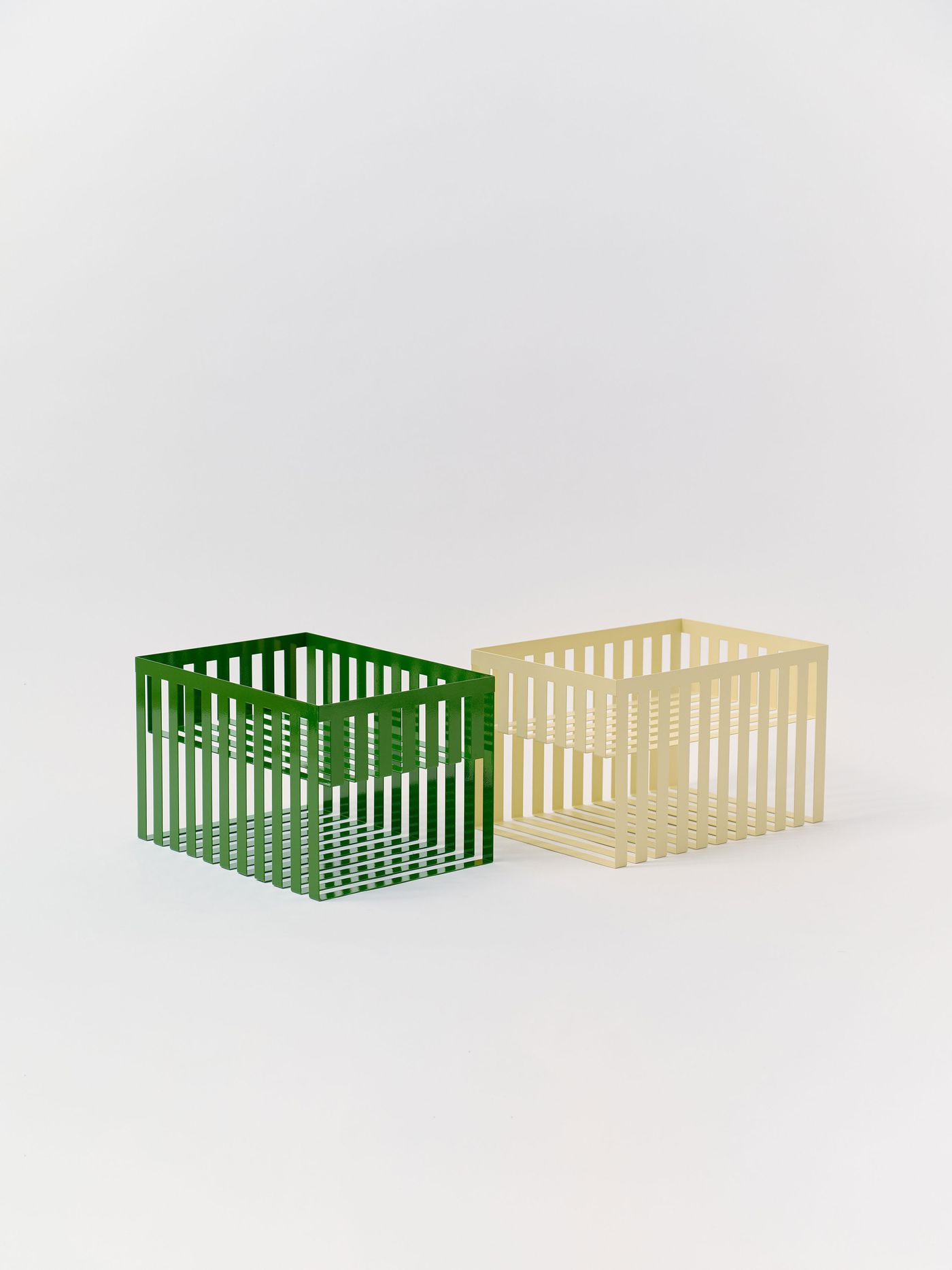
Kōsa Baskets by Erina Caldeira, SaloneSatellite 2025, Milan.
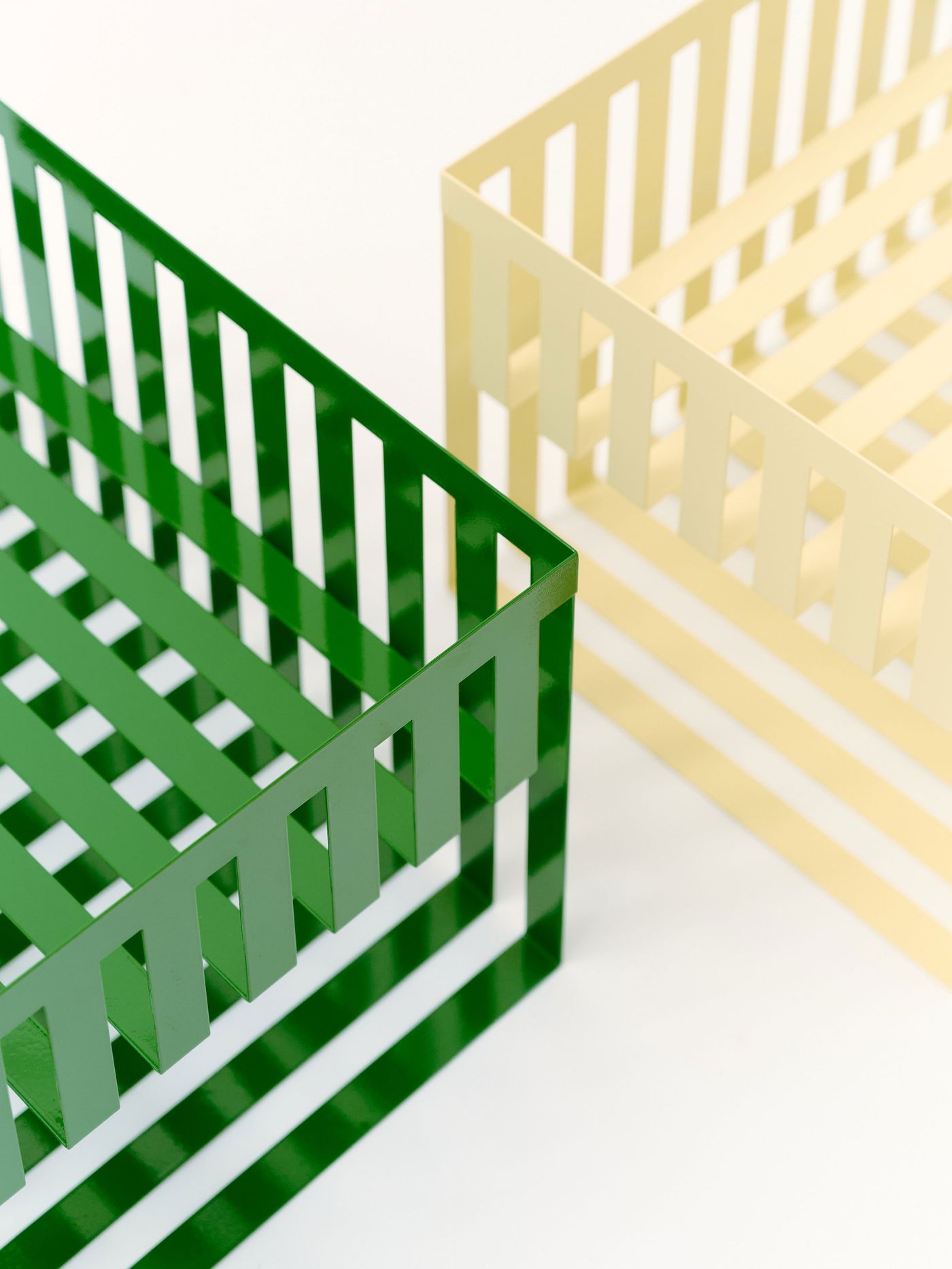
Kōsa Baskets by Erina Caldeira, SaloneSatellite 2025, Milan.
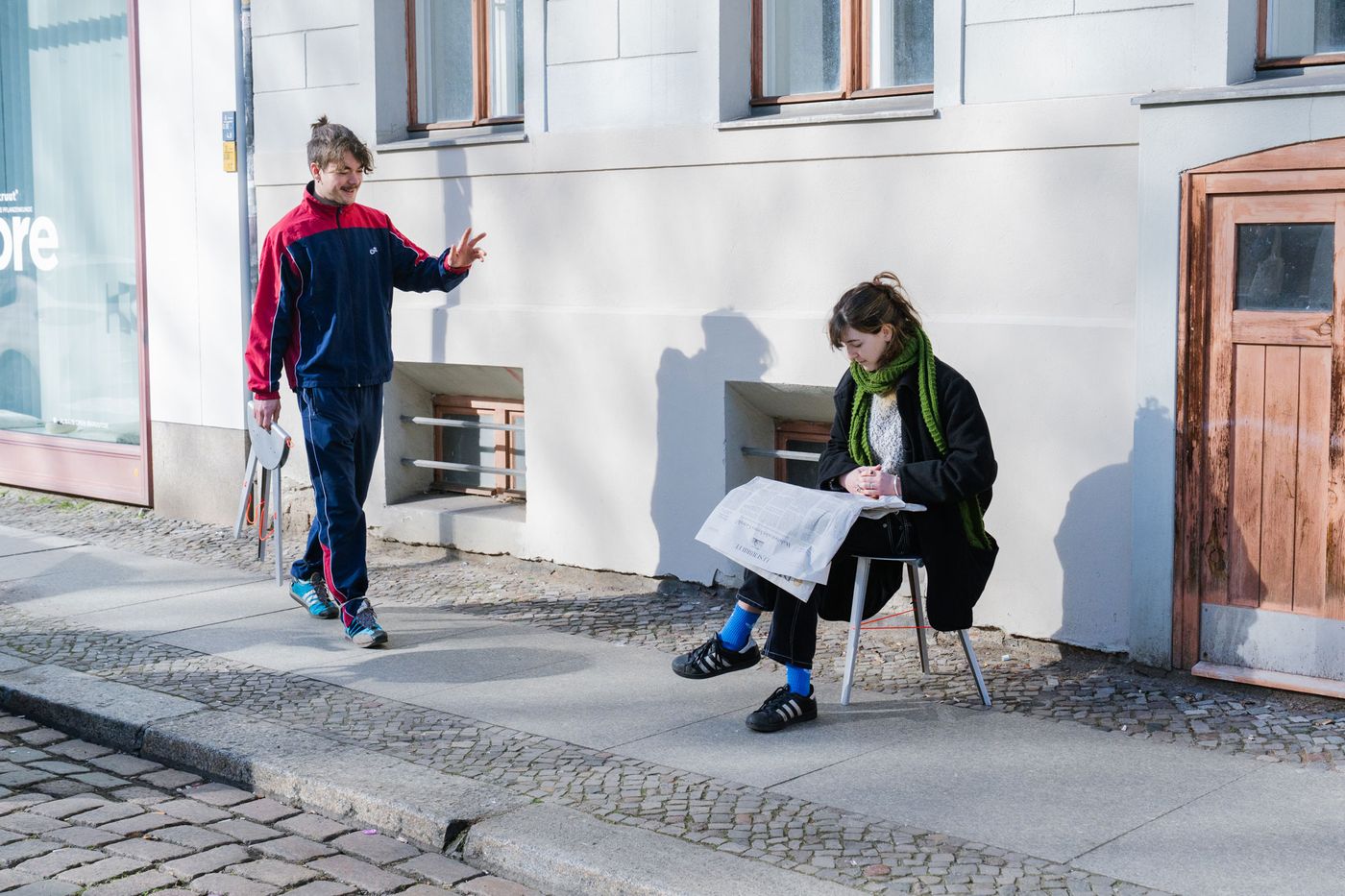
SMAL stool by Anton Oberländer (UdK Berlin Product Design). SaloneSatellite 2025, Milan.
Taiwanese designer Hsinhung Chou also challenges traditional design norms with Nimble, an office chair built for movement and adaptability. Featuring a simple yet effective mechanism, it supports dynamic sitting and encourages users to shift posture throughout the day. Designed for the flexible, collaborative spaces that are replacing traditional desk-centric environments, Nimble reflects the ever-changing nature of work and education, offering a more responsive and versatile alternative for modern settings.
Another minimal piece of ergonomic design that caught our eye was Anton Oberländer’s SMAL, a lightweight, foldable stool designed for neighbourhood encounters—easily hung on a hook by the door, ready to be taken outside to the street, square, or park. Marcus Götschl’s NEW GEN bed also stood out for its elegant simplicity—not only in aesthetics but in ethos. Designed with sustainability at its core, the bed’s simple production, flat-pack format, and use of replaceable components minimize resource consumption and challenge disposable culture while making quality design more widely accessible.
NEW GEN - Bed by Marcus Götschl. SaloneSatellite 2025, Milan.
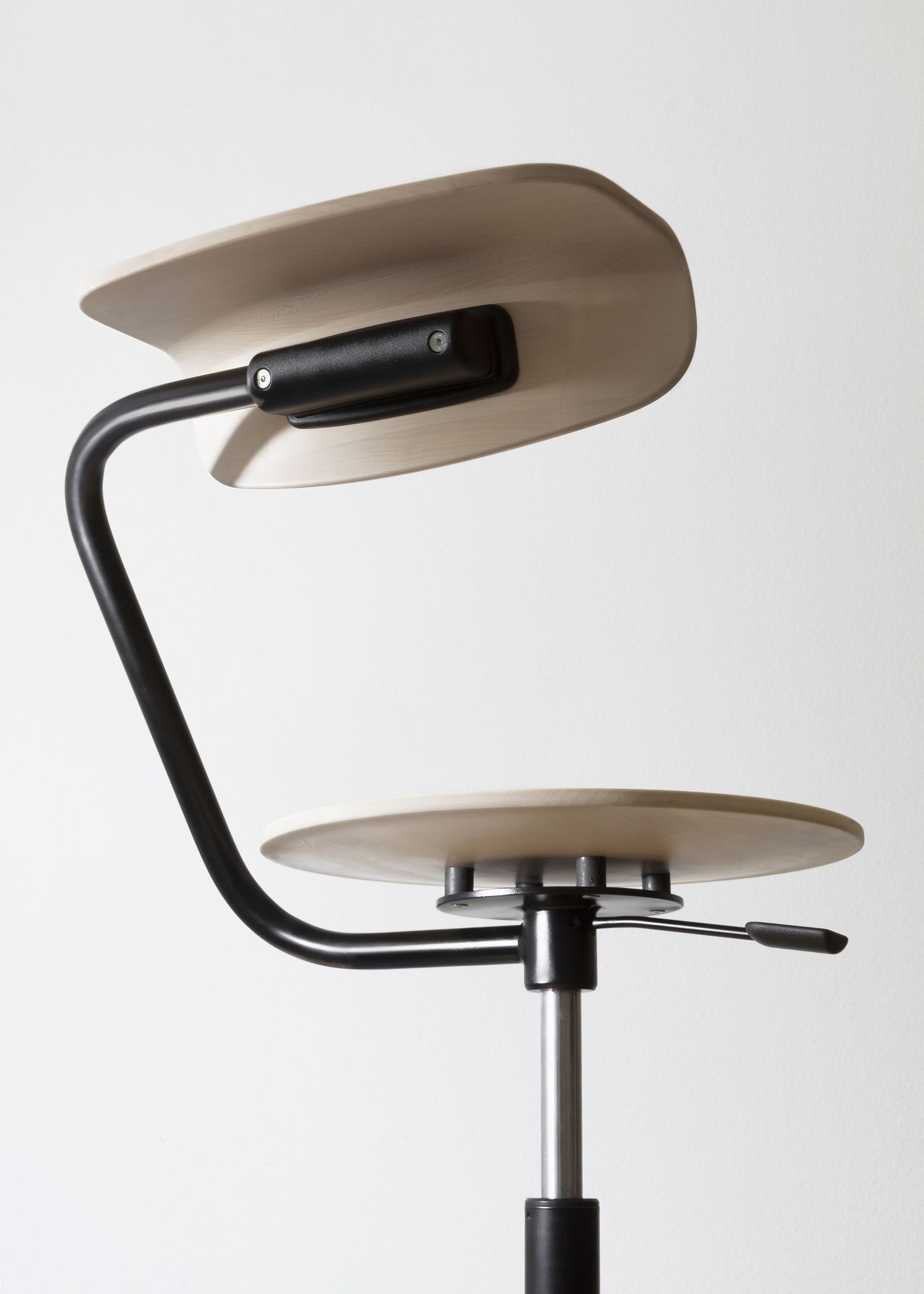
Nimble seat by Hsinhung Chou, photo by Sara De Brito Faustino & Noa Chevalley.
SaloneSatellite 2025, Milan.
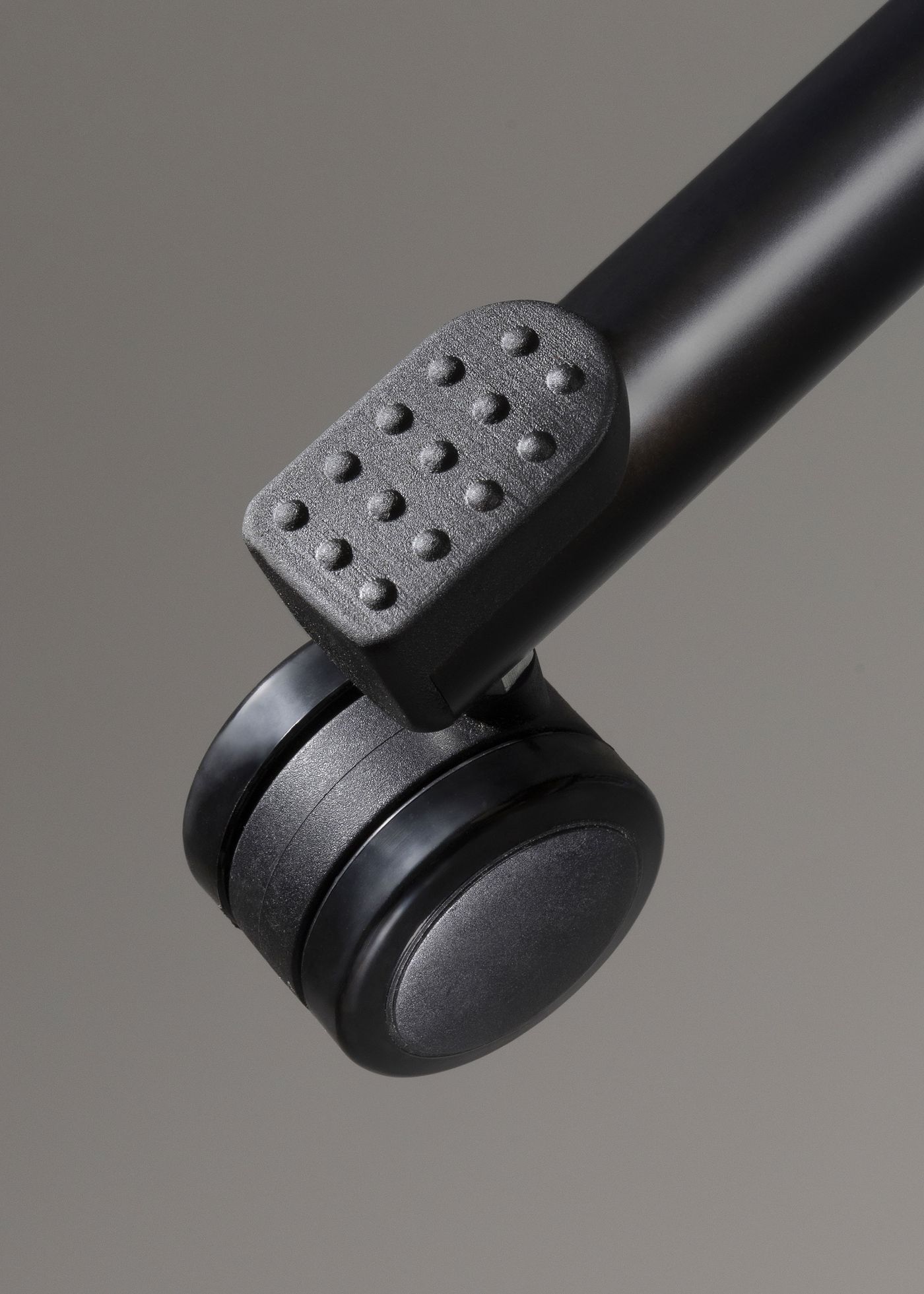
Nimble seat (detail) by Hsinhung Chou, photo by Sara De Brito Faustino & Noa Chevalley.
SaloneSatellite 2025, Milan.
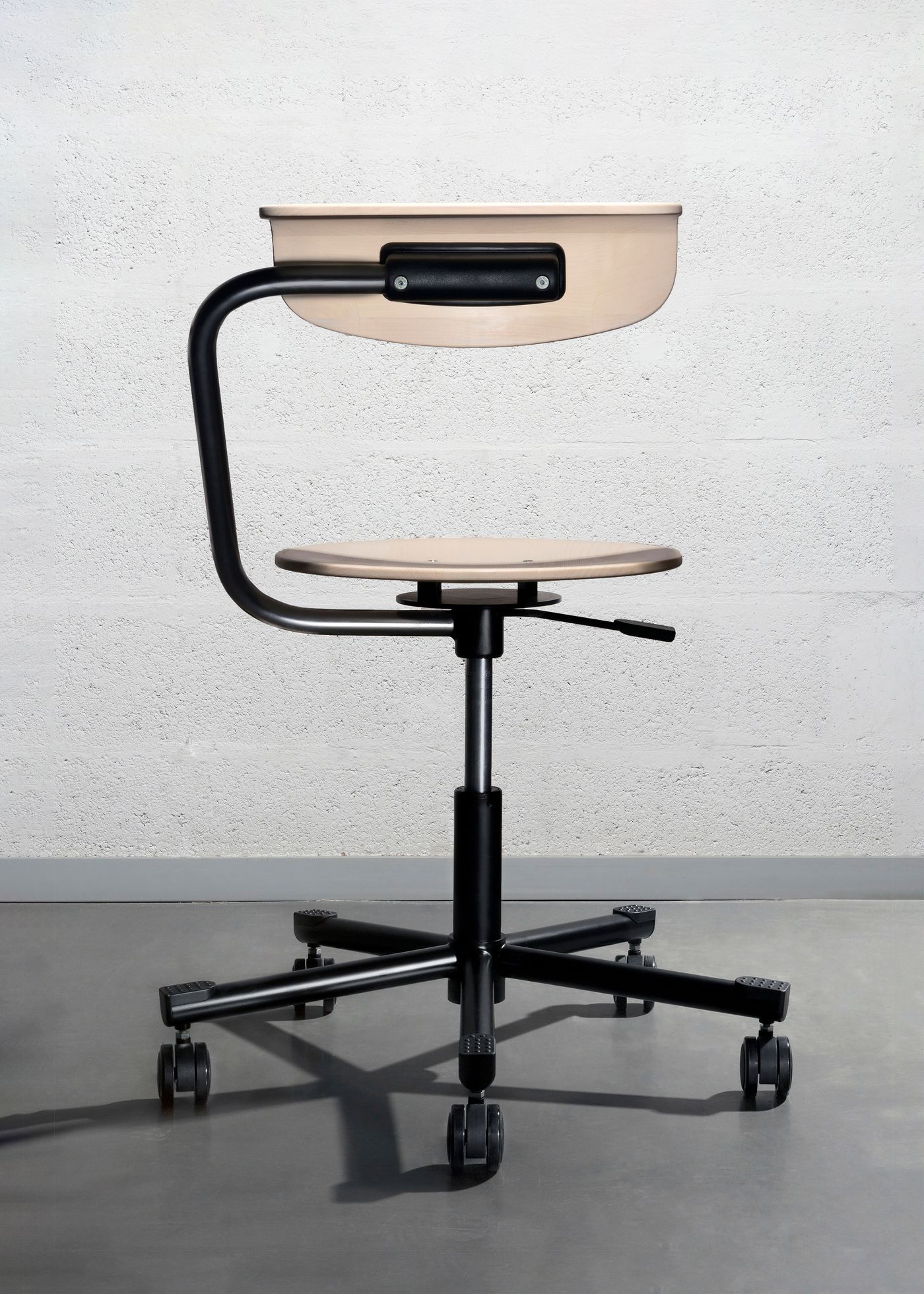
Nimble seat by Hsinhung Chou, photo by Sara De Brito Faustino & Noa Chevalley.
SaloneSatellite 2025, Milan.
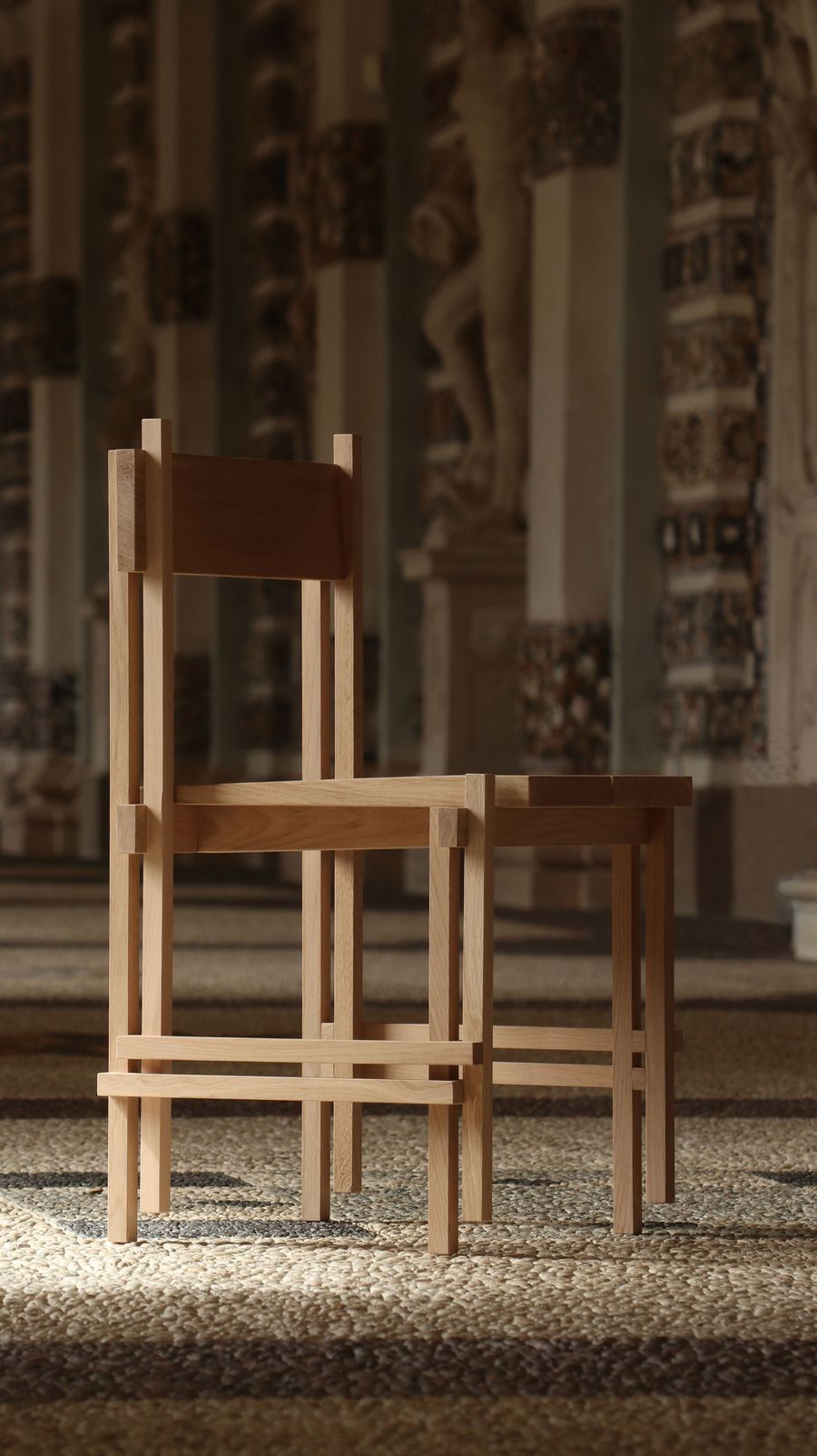
Stack chair by Filippo Andrighetto. Photo by Mariu Riganti.
SaloneSatellite 2025, Milan.
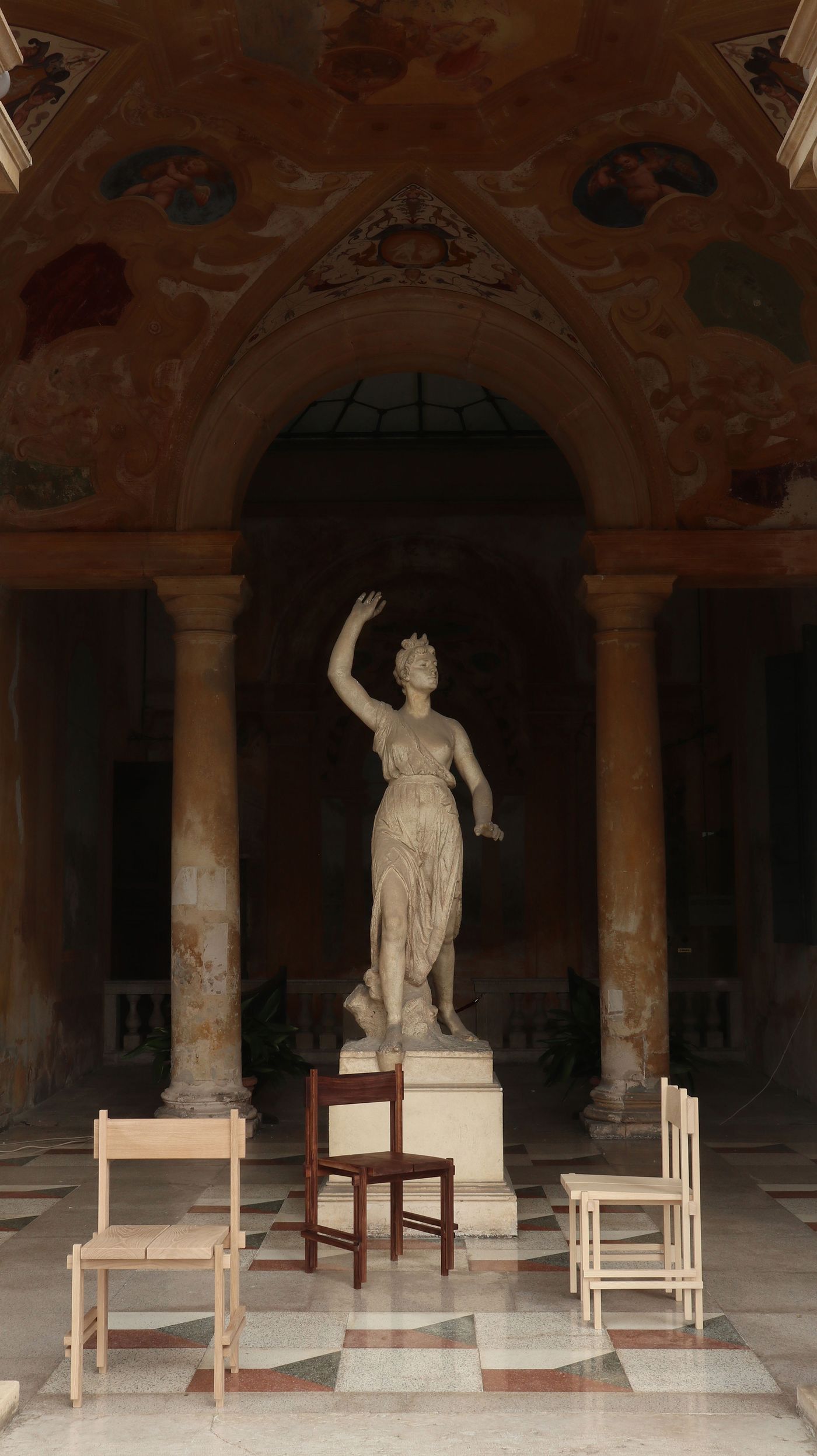
Stack chairs by Filippo Andrighetto. Photo by Mariu Riganti.
SaloneSatellite 2025, Milan.
Another standout was Italian architect and designer Filippo Andrighetto’s furniture collection, a refined exercise in what he calls "soft futurism"—a design language where heritage and innovation meet in quiet harmony. Minimalist forms combine raw metals, stone, wood, and natural textiles to create tactile, enduring pieces reflecting time-honored techniques and a reverence for imperfection. A particular favorite was the Jenga drawer, a tall, sculptural storage unit composed of six drawers that open in alternating directions—front, side, front—each accessible from both sides. Visually playful and spatially clever, it’s an elegant solution for compact living that doubles as a functional centerpiece, merging utility and poetry with understated confidence.

A close-up of Kokera-ita—hand-split wooden shingles crafted using a 1,300-year-old Japanese roofing technique—showcasing their natural grain and delicate texture.
SOME ECHOES lighting installation by Atsushi Shindo, SaloneSatellite 2025, Milan.
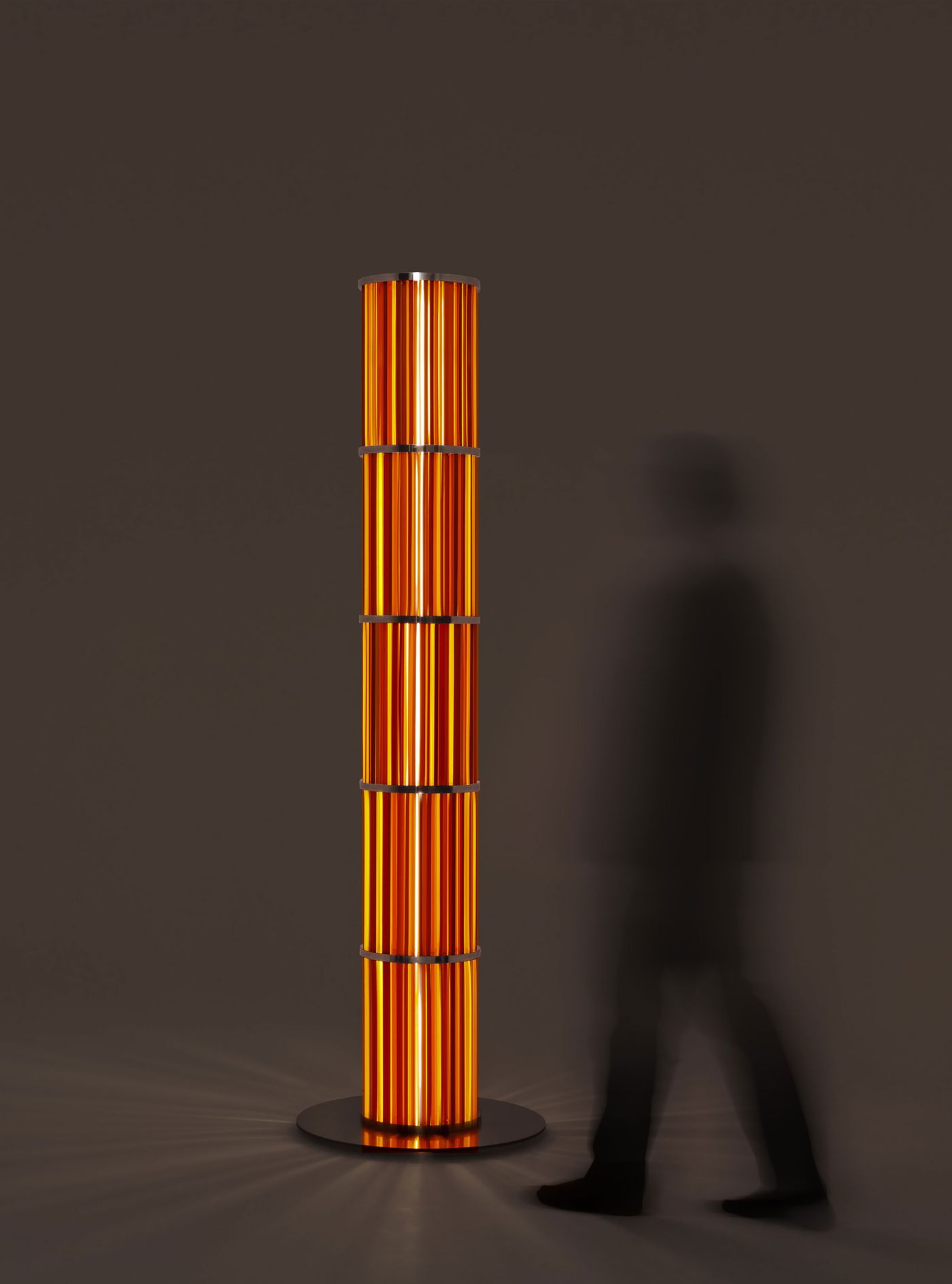
SOME ECHOES lighting installation by Atsushi Shindo, SaloneSatellite 2025, Milan.
Stir, a lamp by Japanese designer Ryosuke Akagi, explores the duality of glass through the fusion of two distinct glassmaking techniques. Its fluted cylindrical base is machine-made, conveying a sense of precision and hardness, while the inverted lampshade is hand-blown by artisans, offering a contrasting impression of softness and fluidity. This interplay highlights glass’ ability to evoke opposing sensations within a single object. Designed to be filled with water, the vessel-like shade creates a captivating optical effect where light appears to float inside, subtly shifting with movement, adding an ephemeral quality to the piece.
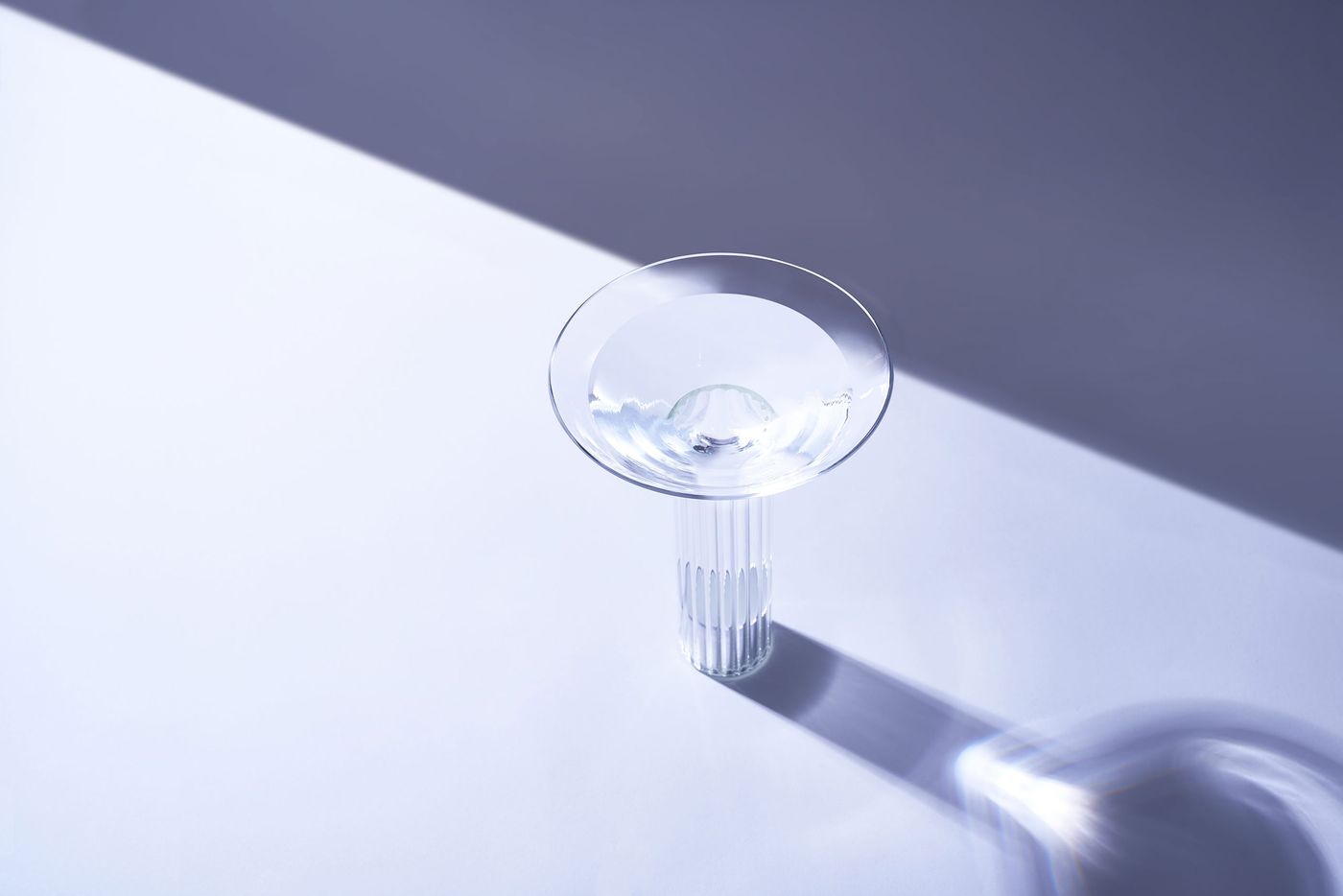
Stir lamp by Ryosuke Akagi Design. SaloneSatellite 2025, Milan.
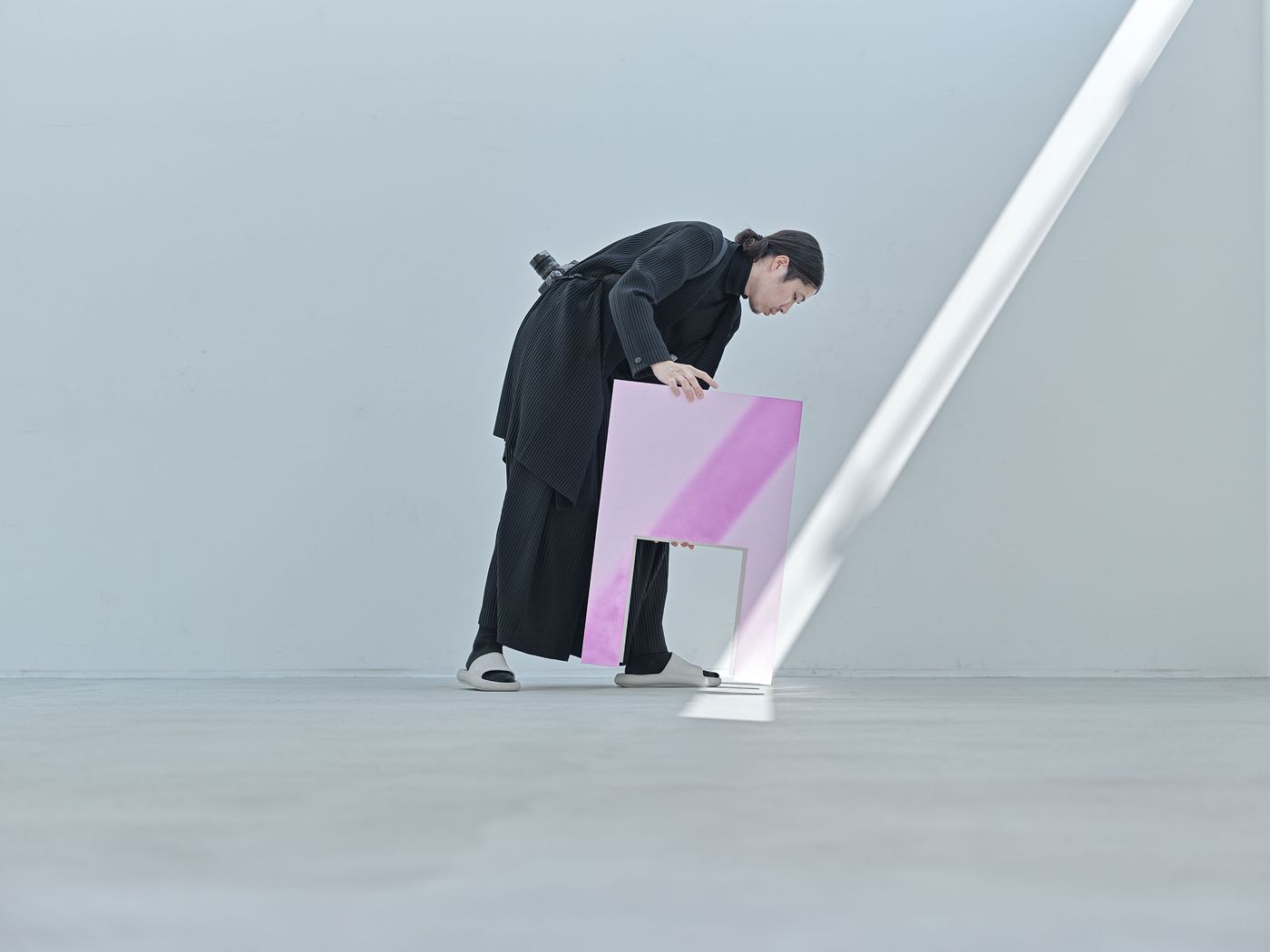
“trace of” chair series by Kai Nishihara. SaloneSatellite 2025, Milan.
“trace of” chair series by Kai Nishihara. SaloneSatellite 2025, Milan.

“trace of” chair series by Kai Nishihara. SaloneSatellite 2025, Milan.
Echoing the ephemeral wonder of Stir, Japanese designer Kai Nishihara’s trace of chair series transforms everyday interactions into fleeting imprints. Coated in photochromic paint that reacts to UV light, the chairs capture transient traces—of touch, shadow, and presence—that shift with time, space, and movement. These marks appear and fade like memories, as they are never repeated, offering a poetic meditation on impermanence. For Nishihara, light and shadow are not just effects but materials in their own right, used to quietly document the dialogue between people and objects.
“trace of” by Kai Nishihara is a chair series

Chair crafted by compacting and stacking beech wood dust, from the Dust Order series by Roc H Biel. SaloneSatellite 2025, Milan.
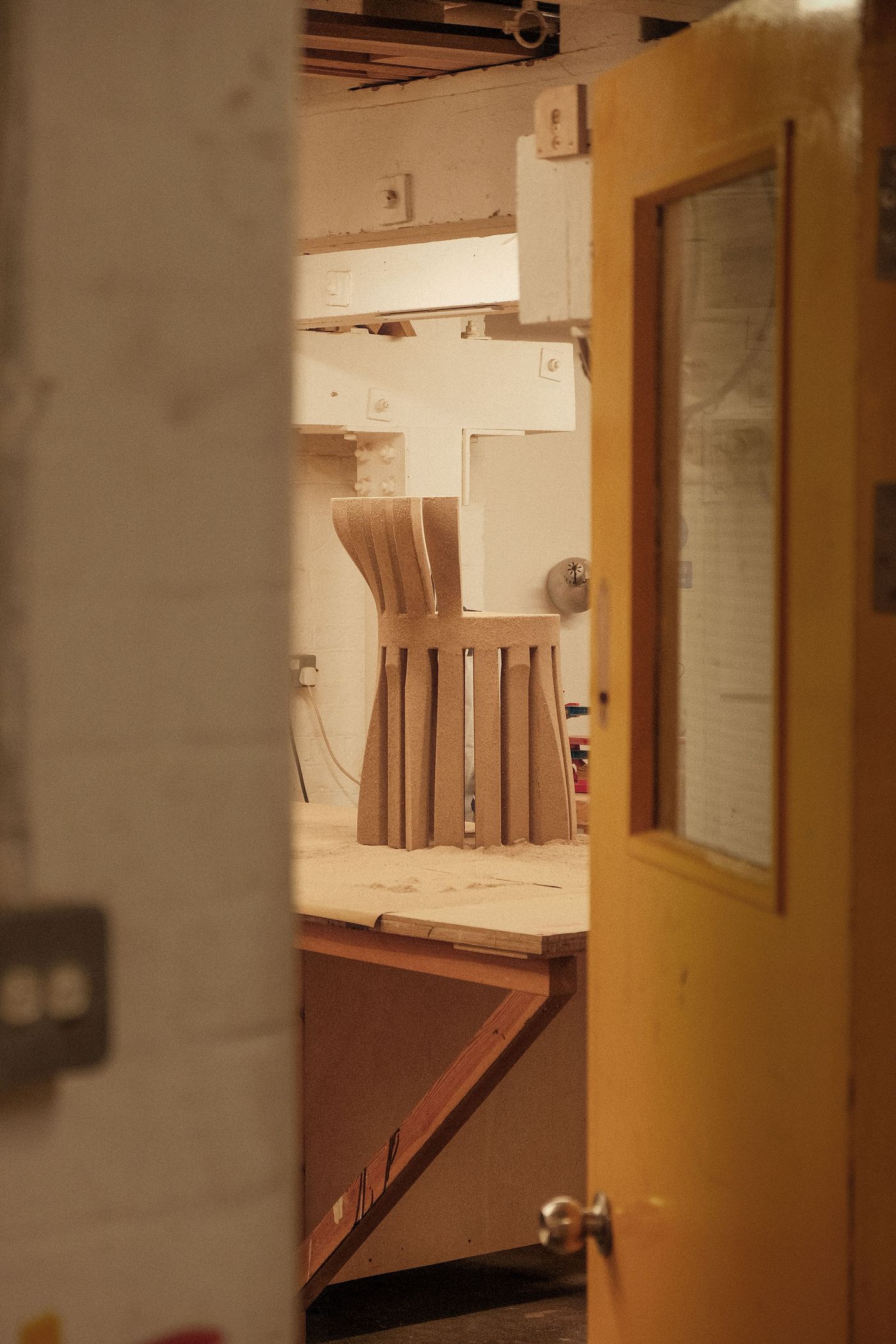
Chair crafted by compacting and stacking beech wood dust, from the Dust Order series by Roc H Biel. SaloneSatellite 2025, Milan.
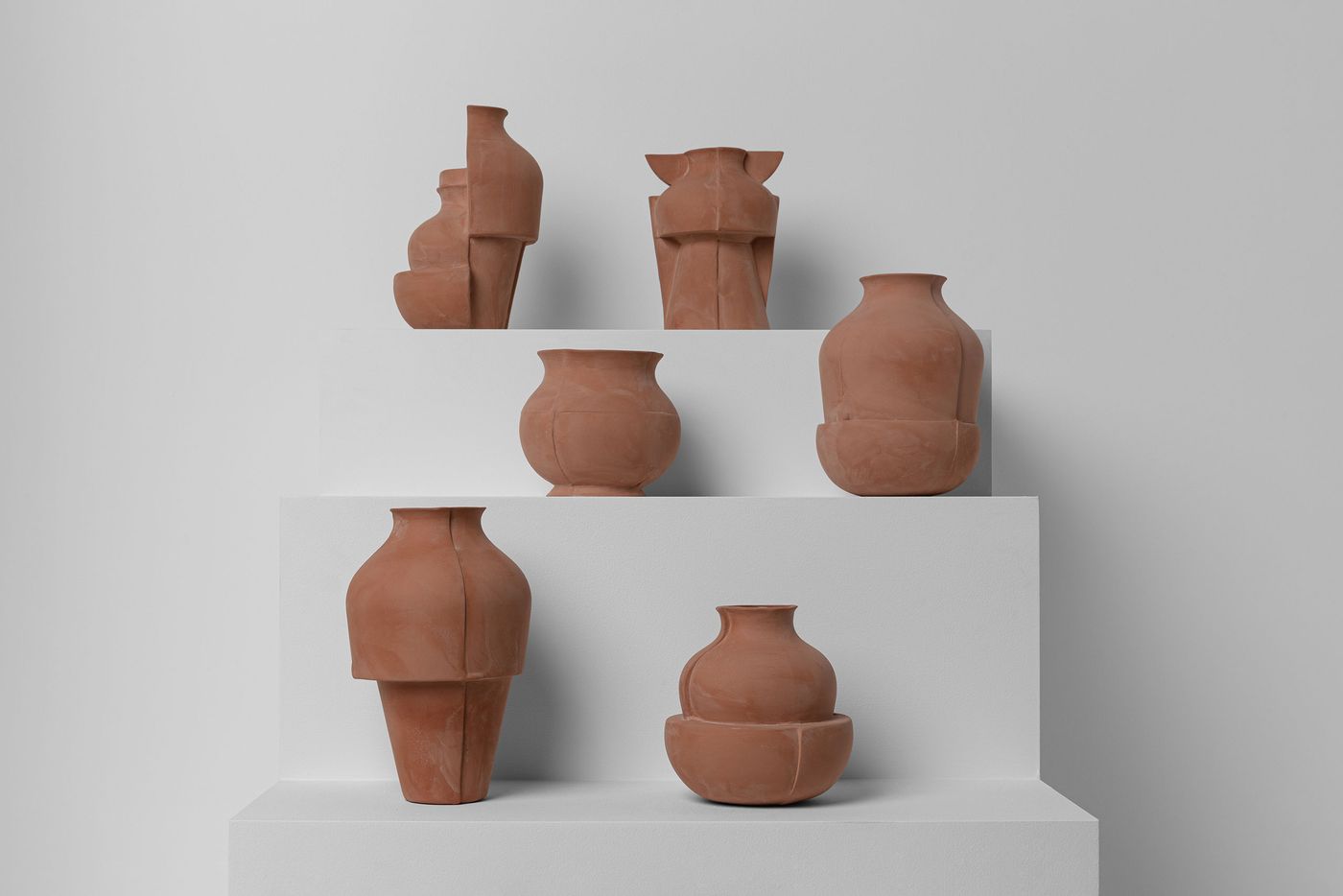
The David Vases by Rodrigo Noriega Studio. SaloneSatellite 2025, Milan
Other projects that stood out for us included Roc H Biel’s Dust Order series of chairs crafted by compacting and stacking beech wood dust, Rodrigo Noriega Studio’s David Vases, a series of playfully disjointed ceramic objects inspired by the idea of interchangeable molds, and finally, Elevation Two by Kosmoform (Alexander Schul and Lukas Lüttgen) a limited-edition light object that turns light into a dynamic spatial tool. A cylindrical spotlight interacts with a suspended shade to cast a circular glow on the ceiling. By adjusting the shade along the cord, users can shift the ambiance—from direct to indirect or decorative light.
If SaloneSatellite is a glimpse into design’s near future, then this year’s edition suggests that it’s one rooted in material intelligence, emotional nuance, and poetic functionality. As sustainability shifts from buzzword to baseline, and tradition intertwines with tech, a new generation of designers is rewriting the playbook—quietly, boldly, and beautifully.
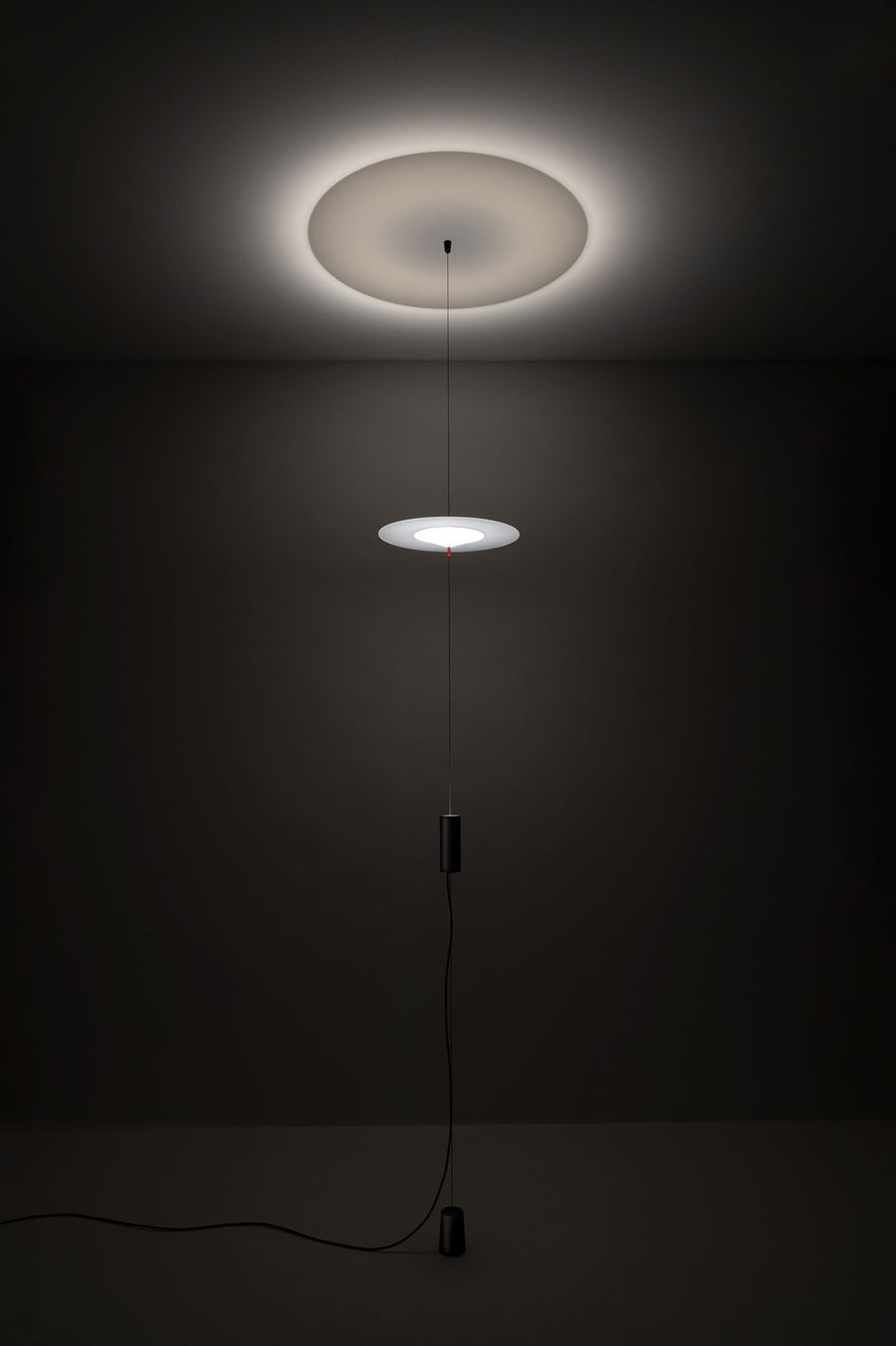
Elevation Two by Kosmoform. SaloneSatellite 2025, Milan.
Elevation Two by Kosmoform. SaloneSatellite 2025, Milan.
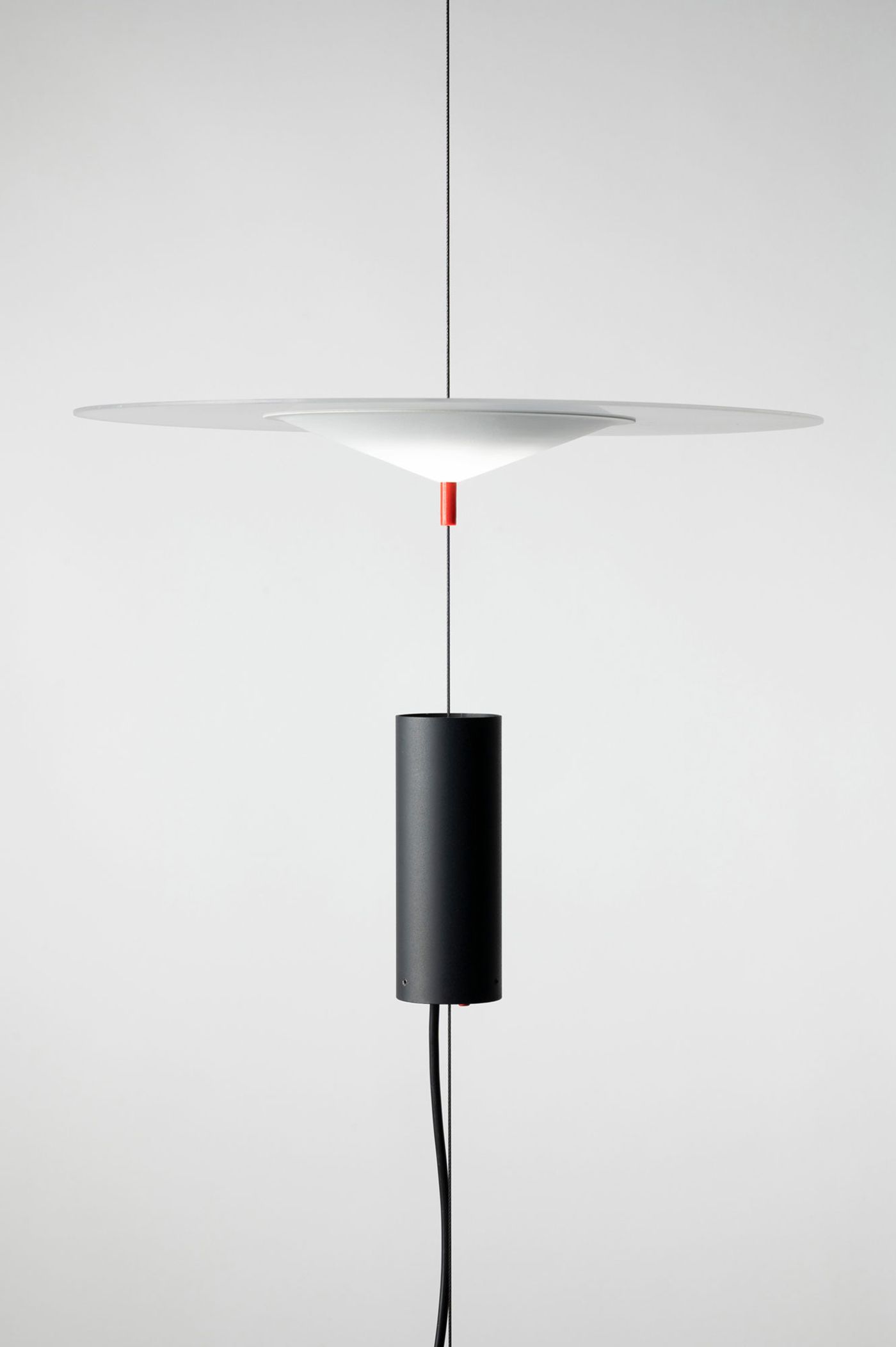
Elevation Two by Kosmoform. SaloneSatellite 2025, Milan.
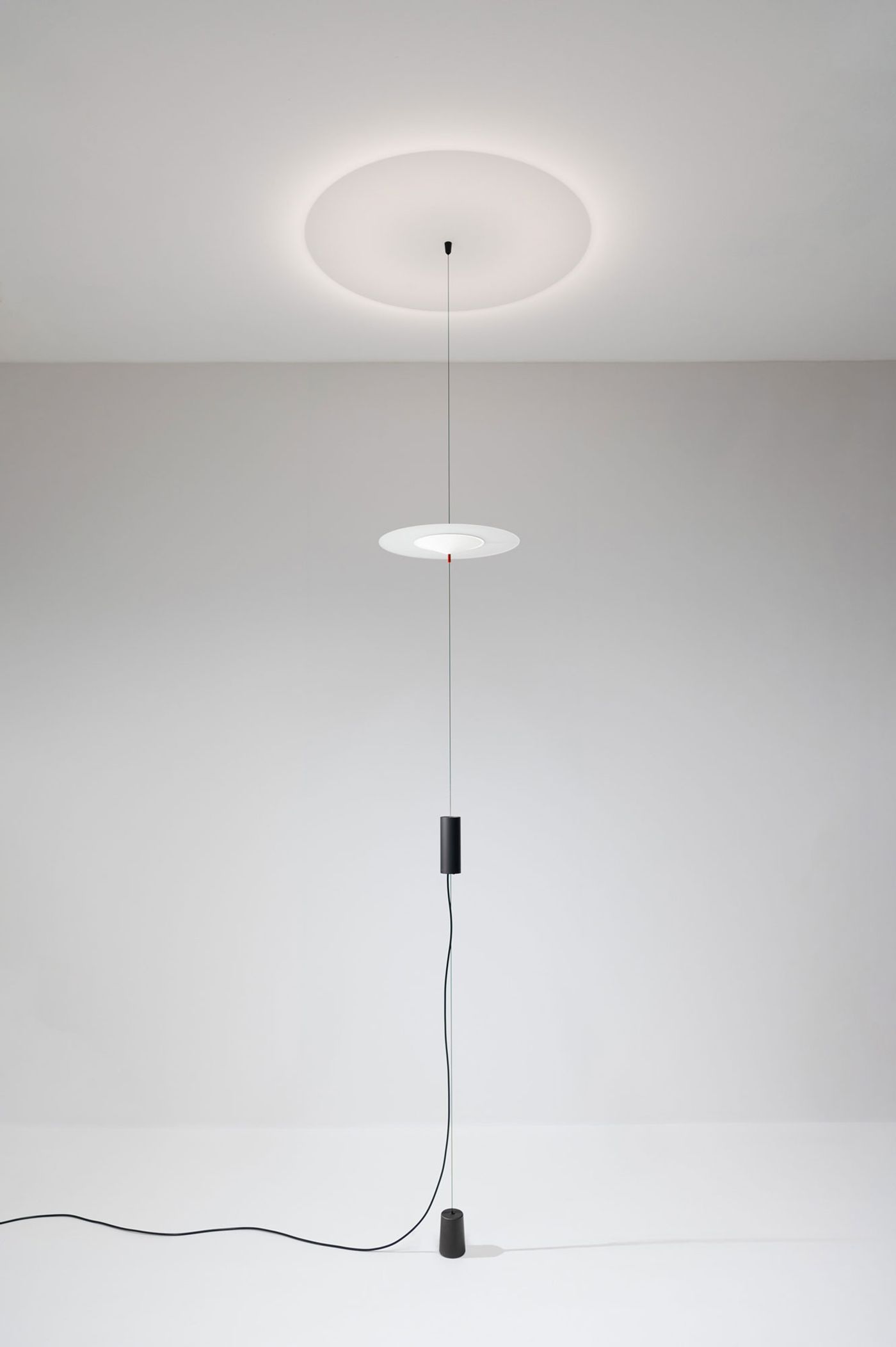
Elevation Two by Kosmoform. SaloneSatellite 2025, Milan.
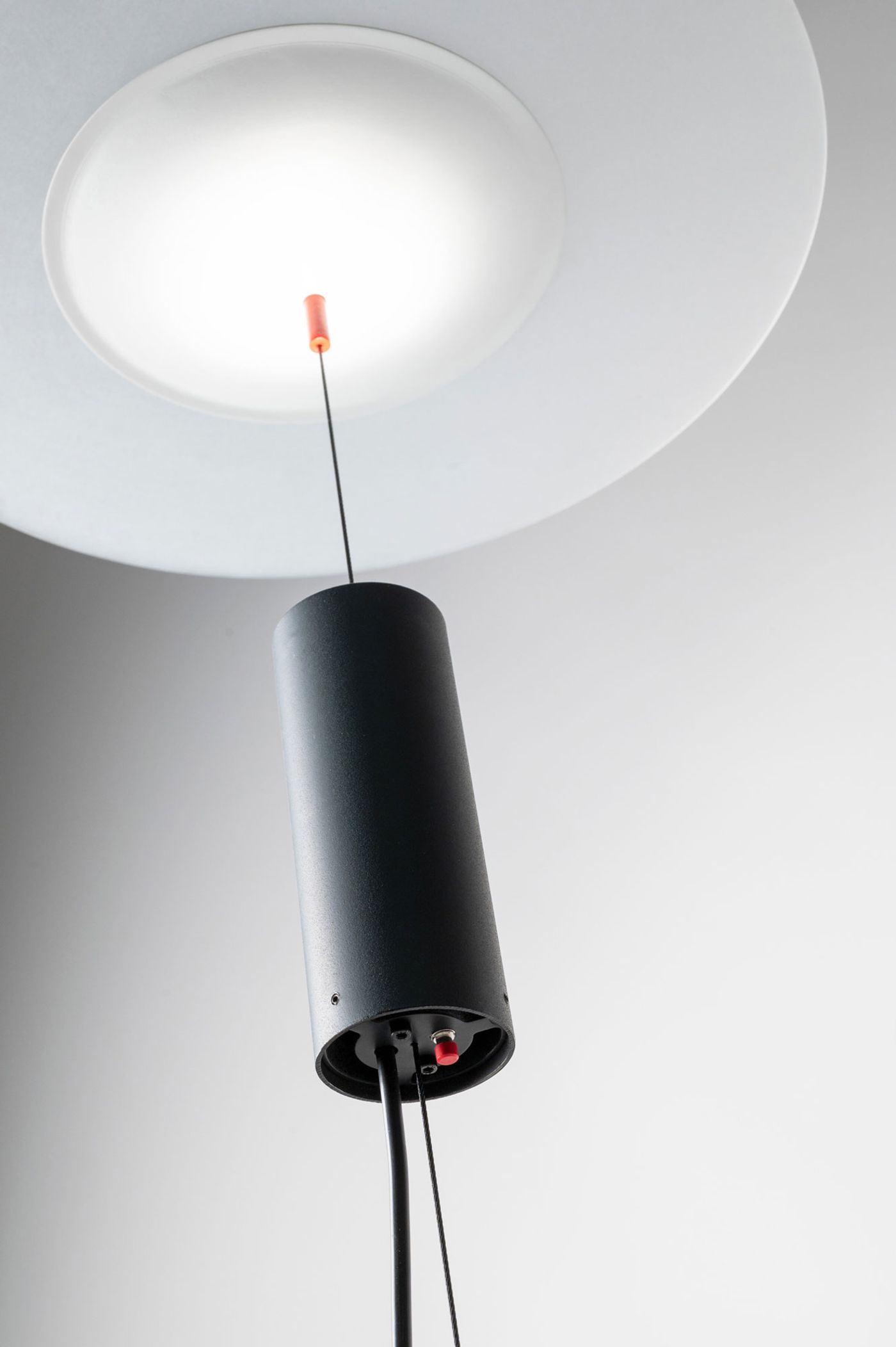
Elevation Two by Kosmoform. SaloneSatellite 2025, Milan.
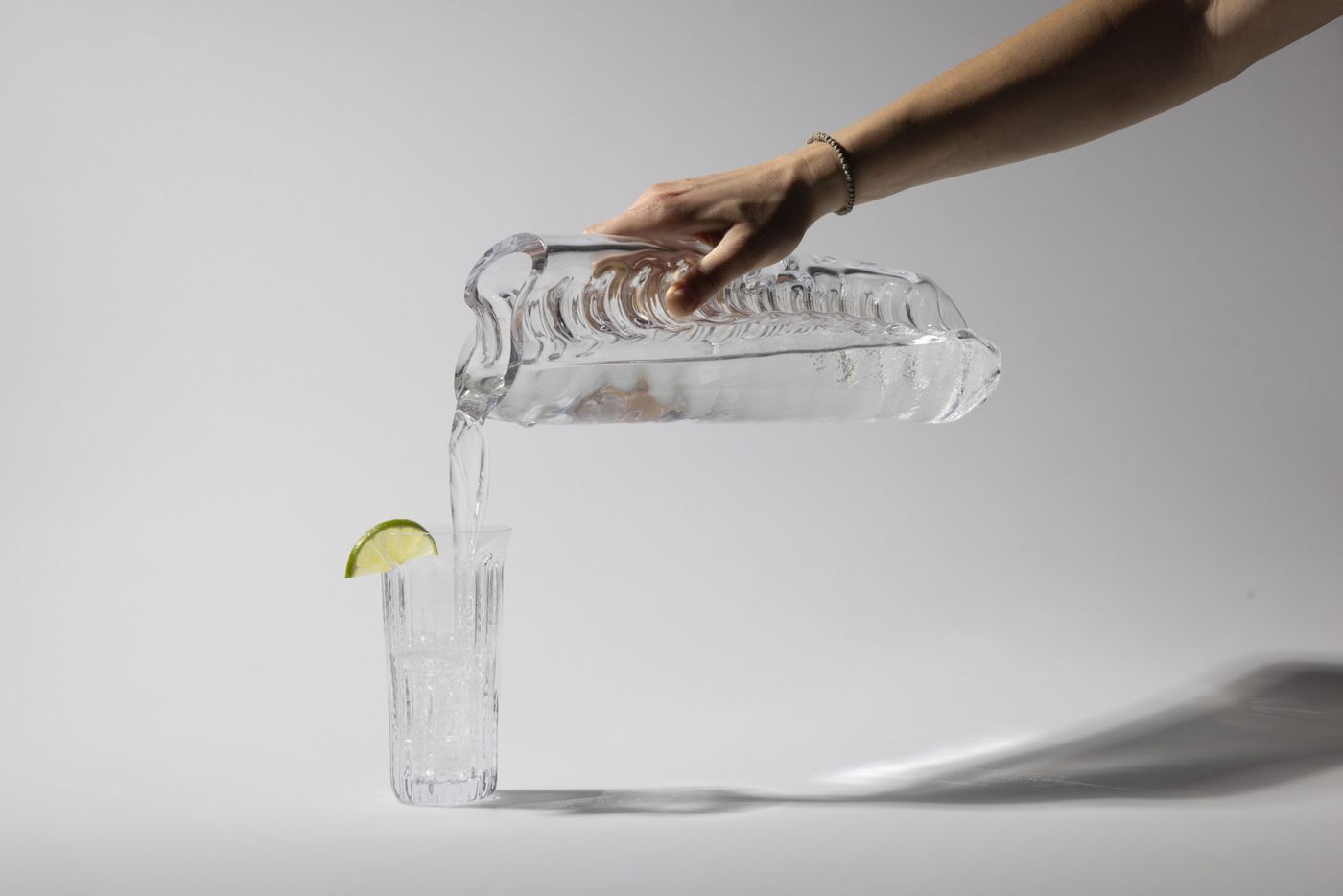
Carafe and glass from the ALTGLAS series by Emma Johann (UdK Berlin Product Design).
SaloneSatellite 2025, Milan.

Queering Bathrooms by Gregor Jahner (UdK Berlin Product Design) produced in collaboration with KOBER Porzellan. SaloneSatellite 2025, Milan.
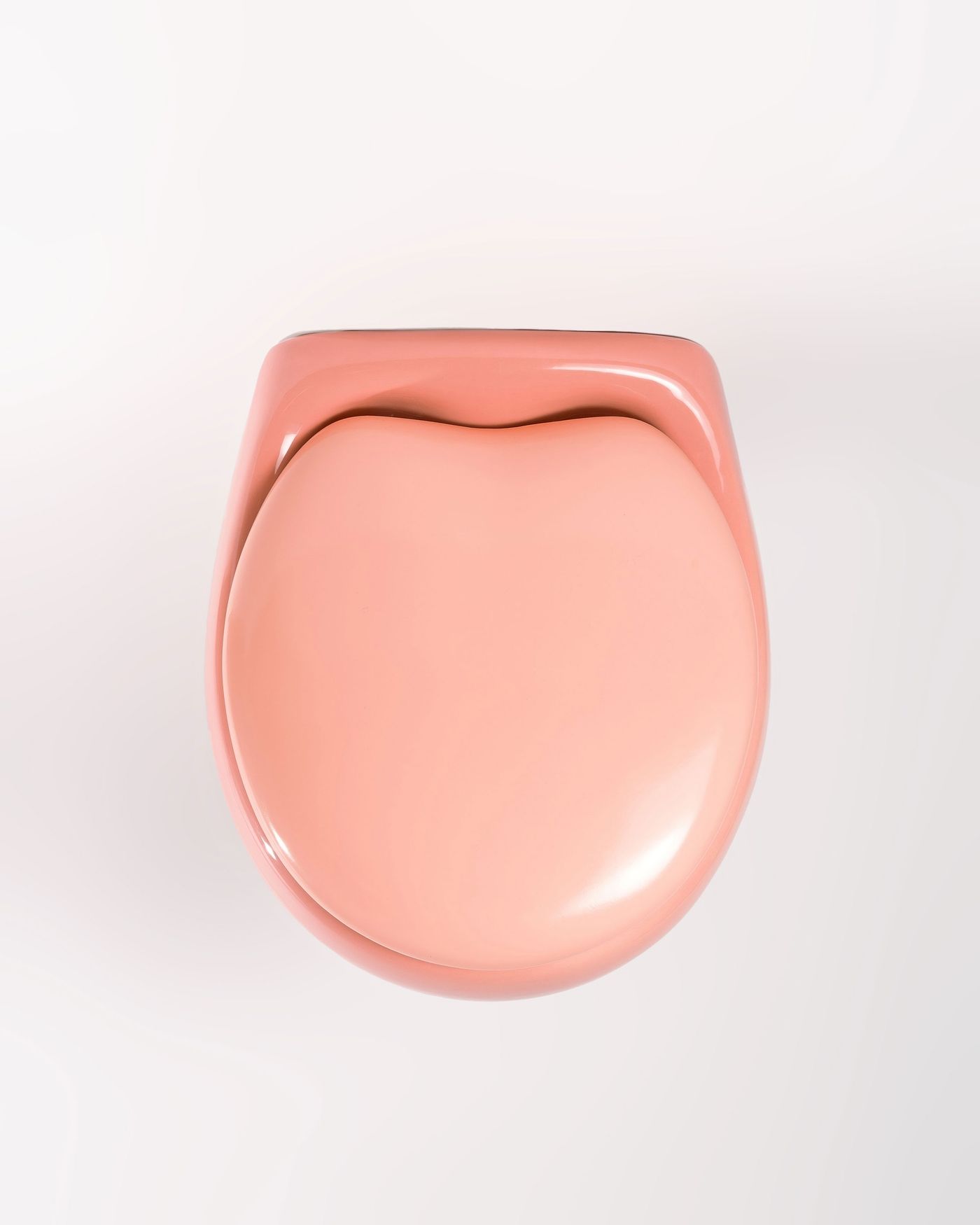
Queering Bathrooms by Gregor Jahner (UdK Berlin Product Design) produced in collaboration with KOBER Porzellan. SaloneSatellite 2025, Milan.
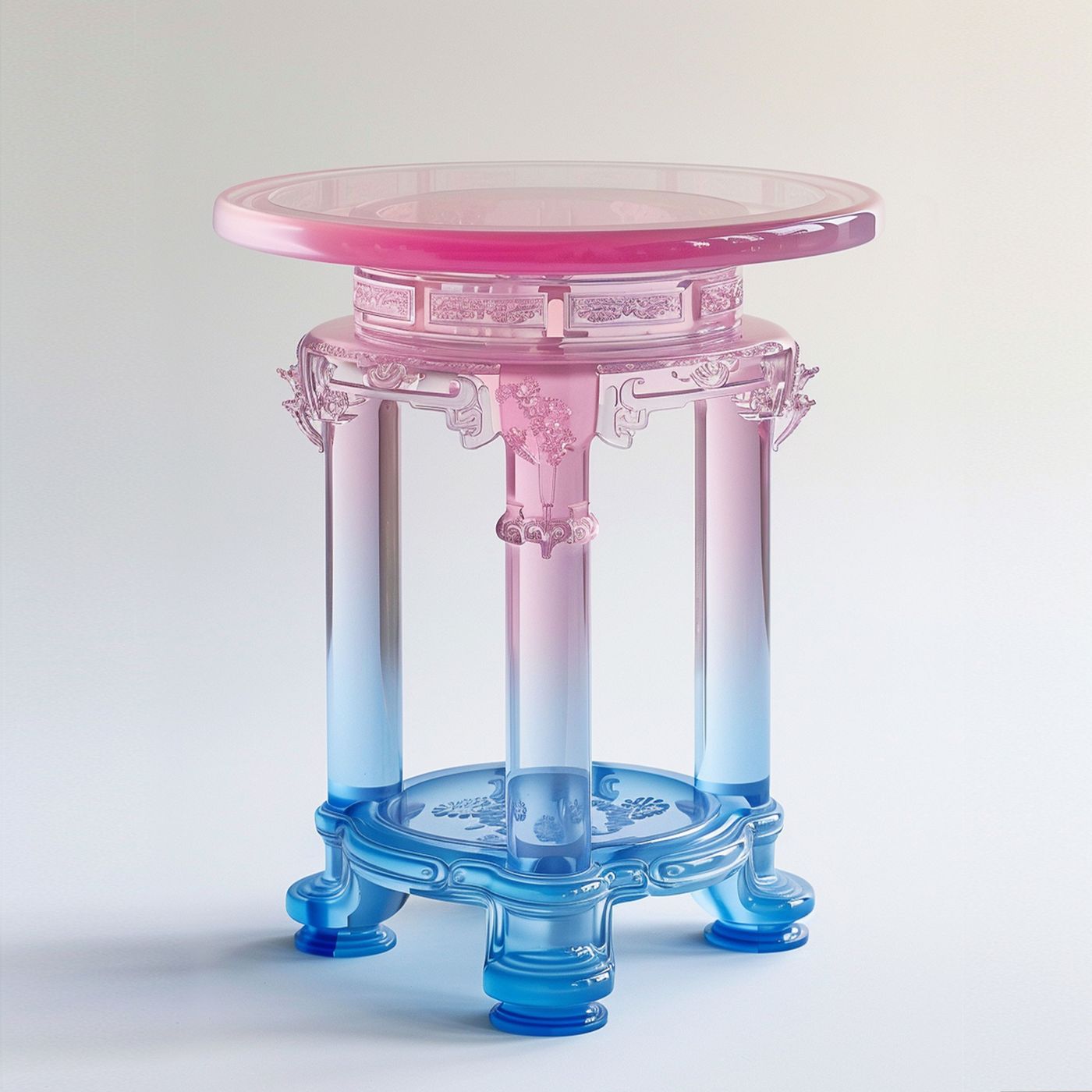
Ethereal Drum Stool (3D-Printed Resin) by Stephanie Zhang (inno. Studio). Dimensions: 200mmD × 200mmH. SaloneSatellite 2025, Milan.
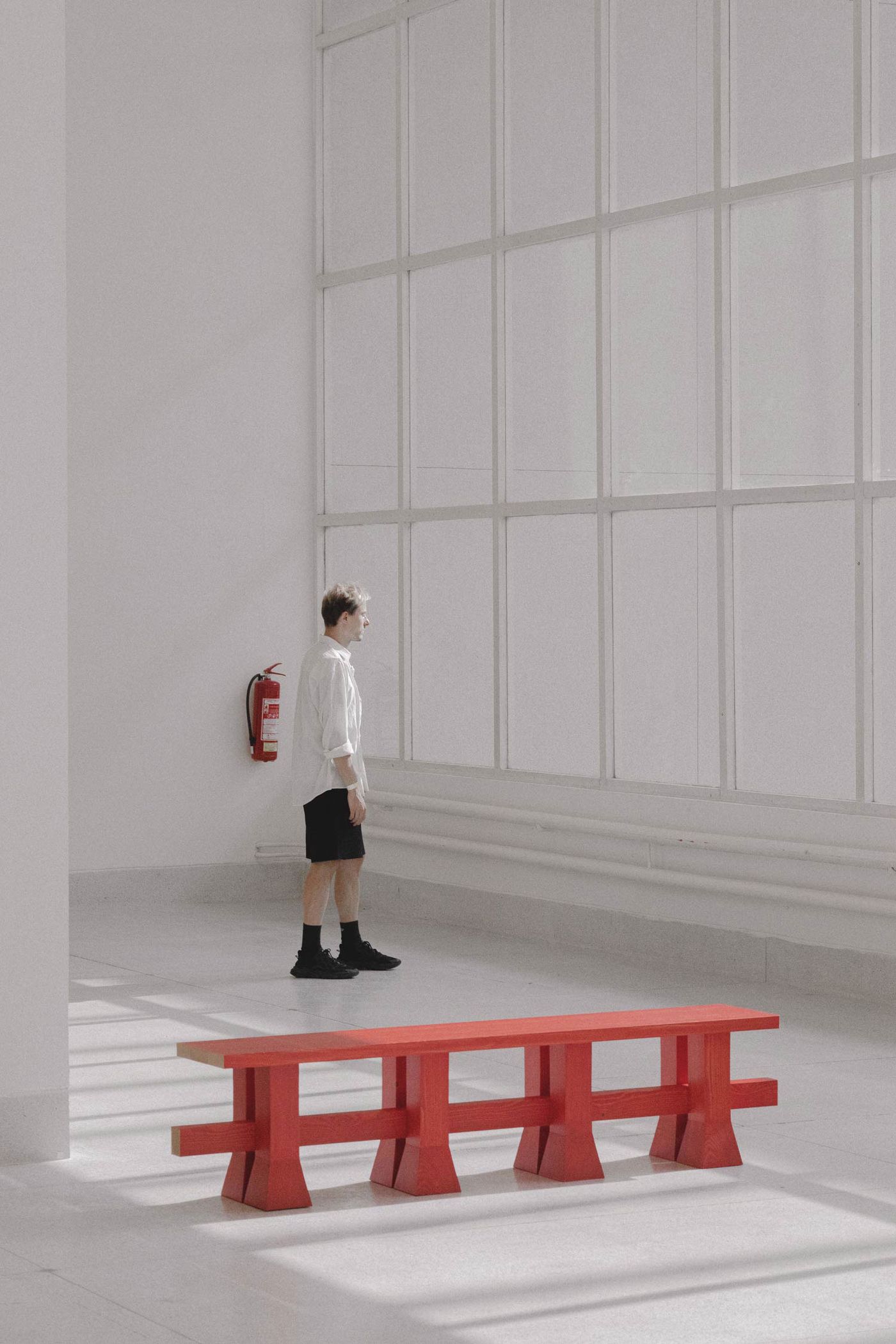
The Arnaud Bench by Jiří Krejcirik combines classical influence with modern form. Handcrafted in the Czech Republic, its geometric legs and clean lines give it a sculptural presence. A limited-edition piece, it reflects Krejcirik’s commitment to craft and timeless design. Photo by Tomas Carl Allen. SaloneSatellite 2025, Milan.
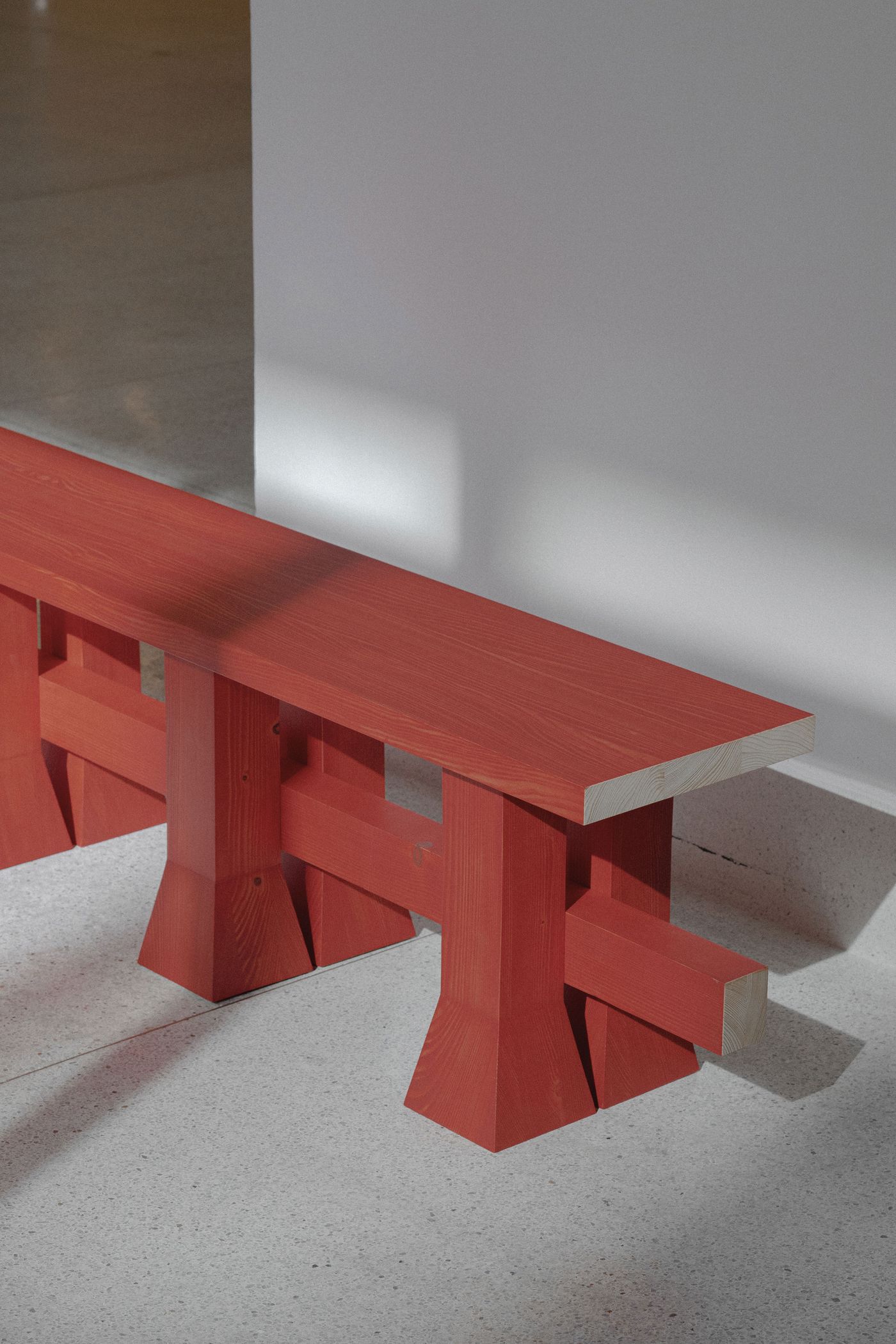
Arnaud bench by Jiří Krejčiřík. Photo by Tomas Carl Allen. SaloneSatellite 2025, Milan.


